




























Welcome to the latest issue of Live to 100. It’s always good to be able to promote health issues to as wide an audience as possible - in my work as a GP, I see hundreds of patients, and each story is di erentbut of course there are underlying health issues that a ect us all. The more we promote understanding of these, the longer, healthier and happier the lives we should all be able to lead.
Teaching people these basics can make it easier to get to grips with serious conditions such as diabetes, cancer and dementia. As we get older, these are more likely to a ect our lives or those of our loved ones, and education on ‘taboo’ subjects such as prostate cancer becomes more essential.
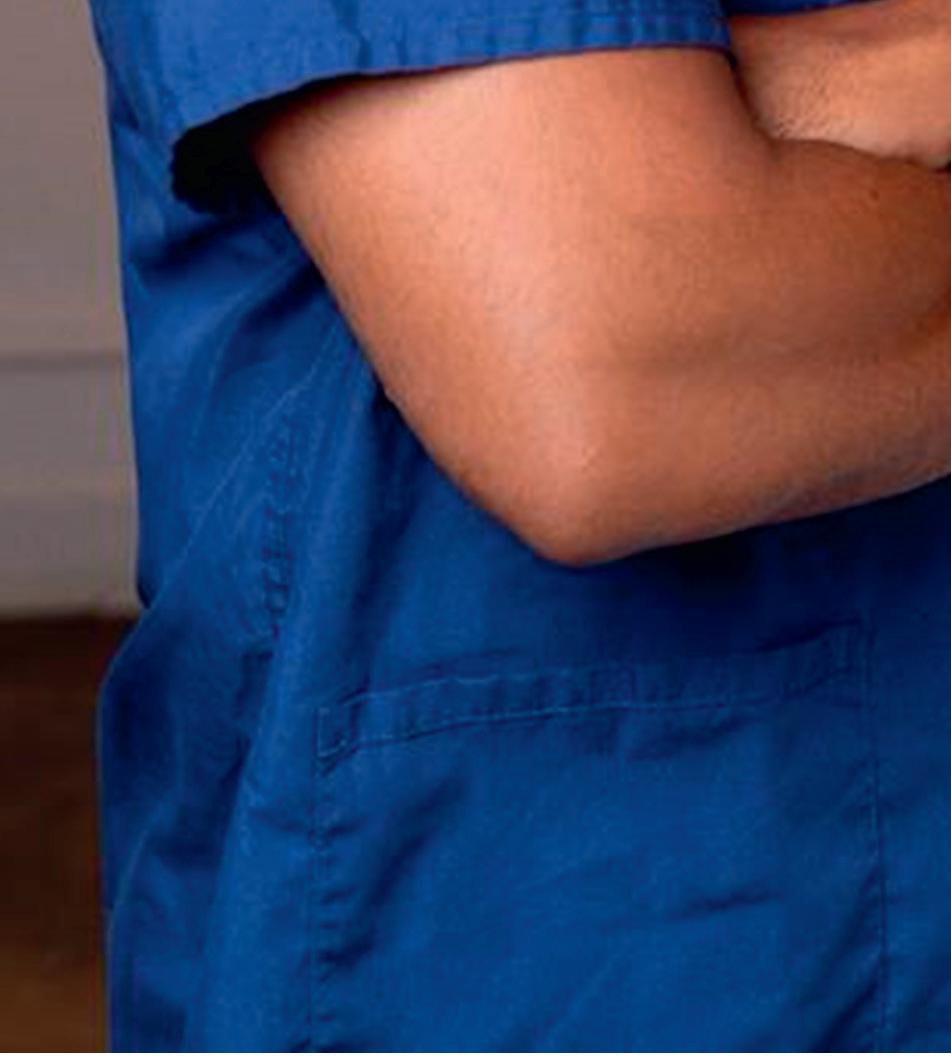
As we move into spring and summer, and my garden gets more active, I’m reminded that nature and the environment can teach us all valuable health lessons - the benefits of exercise, whether it’s gardening, walking or something more vigorous, and the essential nature of good dietary habits. I’m also reminded of important health issues such as air pollution, both indoor and outdoor, which need to be acted on while we still can.
And there’s plenty of positive news to report, from advances in medical science and technology, to ways in which it’s becoming easier to access treatment such as HRT for menopause symptoms. We all want to live a longer, happier and healthier life, and I hope what you read in this issue of Live to 100 will help you on the way! •
Dr Amir Khan Guest Editor

Dr Amir Khan introduces this issue of Live to 100, where we can all learn more about the issues surrounding our health, wellbeing and future lifeIMAGES: Amigo Talent
YOUR WELLBEING
18 Keeping Well, Feeling Good
All the news from the world of fitness and wellbeing, from a campaign to use your local pharmacy to a crackdown on opioid prescriptions
20 It’s All In The Nose
As Spring approaches, we tend to fall prone to allergic reactions and airborne infections. What can we do to cut down on sni les and sneezes?


24 Treating Skin from Inside Out
Researchers are beginning to understand that skin problems can be related to the gut. How can diet and supplement improve our health from inside to out?

26 Celebs and Bowel Cancer
Why celebrities including Alan Titchmarsh and Tommy Walsh are supporting the NHS’s bowel cancer screening programme


12 Interview

Live to 100 ’s celebrity guest editor Dr Amir Khan talks to Chris Jenkins about his work as a GP trainer, how his garden inspires him, and what we can all do to live longer and healthier lives

32 Follow Your Gut Instinct
Digestive problems can lead to all sorts of health issues, as the gut appears to be a much more complex system than has previously been thought

36 Know Your Limits
Most of us like an alcoholic drink, but we’re also aware that it’s important to set limits to avoid health problems. So where do you start cutting down?
40 Your Crowning Glory
Our hair is our pride and joy, but caring for it, and worry about losing it, can be a burden. So, what’s the best way to look a er our tresses?
42 Why Fish Should Be On Your Plate
Most of us could do with having more fish in our diet for our health, but what varieties should we choose and what preparation guidance do we need?

46 Fostering For a Brighter Future
Fostering can o er a brighter future for disadvantaged children and young people, but the sector is in crisis and needs all the help it can get
50 Finer Feelings
As part of your overall fitness routine, you should make time to think about your emotional wellbeing
54 A Grain of Truth

Salt has been used in cooking since the first caveman said “this mammoth just needs a little something…” - but should we be cutting down on it?
58 Fresh Air Feeling
We all know that outdoor air pollution is a problem, but are you su iciently aware of what you’re breathing at home?
60 Jab and Go
International travel is back - hooray! But so are vaccinations - boo! What jabs are you going to need before you set o on your world tour?
63 Walk It O
Walking is the one exercise that doesn’t cost anything, is easy to access and should require no special equipment - except a comfortable pair of shoes!
YOUR HEALTH CARE
64 Longer, Healthier Lives
Breakthroughs in medical technology are bringing remarkable improvements in health outcomes every day. Here are some of the most exciting developments
68 Alternative Approaches
Alternative therapies are finding their place alongside conventional medicine - but what can they o er and how could you benefit?
70 The Pressure’s On
What is hyperbaric oxygen therapy and what could it do for you? We peer inside the pressure chamber
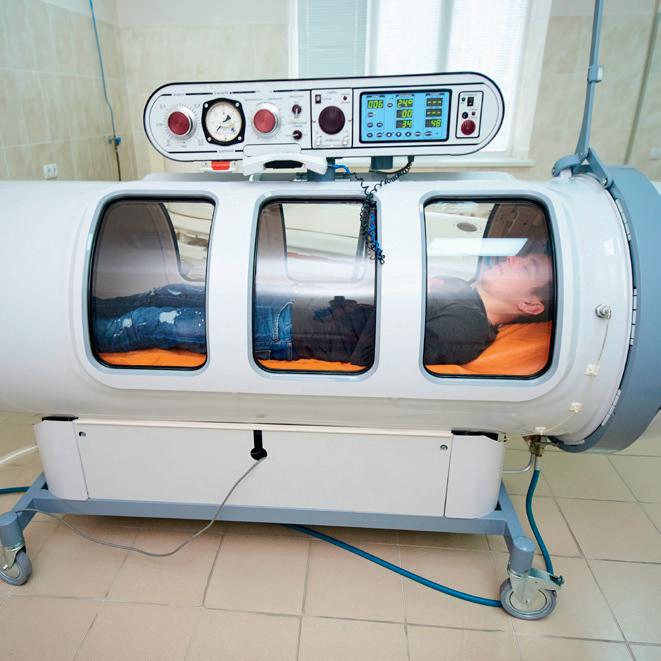
72 Whatever Happened to Covid-19?
It might not make headlines any more, but Covid-19 is certainly still with us. We look at the NHS’s ongoing plans to protect us from coronavirus
75 Soothing the Itch
Skin problems such as eczema, dermatitis and psoriasis can start in childhood and persist through life - what’s the latest thinking on treating them?

76 New Ideas on MS

A common ‘kissing’ virus could be the cause of the devastating disease Multiple Sclerosis. What set researchers on this promising track?
81 Shedding Light on Family Law


Family law and particularly cases involving children have been conducted in obscurity. Now a new scheme aims to shed some light
87 No Hard Feelings
Erectile dysfunction, or EDF, doesn’t just a ect older men - but what causes it and what can be done about it?

88 The Fight Against Prostate Cancer Prostate cancer is the most common form of cancer in men, yet progress in eliminating it is slow. Public awareness may be the key to beating it
92 Gas Attack!
Invisible gasses may be a danger in your home, but don’t worry, here’s an easy guide to making yourself safe
95 The Deep Clean
Dental care is essential at any age, but are you cleaning your teeth properly and using the right toothpaste?
97 GPs, The Next Generation
We’ve all heard about the hard work and tough conditions faced by trainee doctors - here, trainer Dr Amir Khan tells us something about his work with them

98 Getting On Just Fine
We’re none of us getting any younger, but is society ready for an older population? Here are some of the ways thinking is changing
100 Alzheimer’s: Putting the Pieces Together

Research using drugs such as lecanemab suggest new approaches to treatment of dementia conditions including Alzheimer’s. We look at the latest news
104 Hip, Hop, Don’t Stop
Is hip pain slowing you down? Replacing a painful joint is becoming faster and easier as medical technology improves
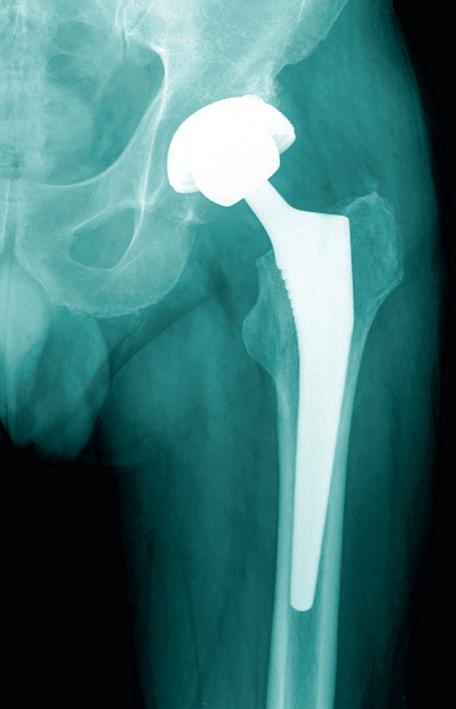
108 Home Away From Home
If independent living or in-home care are not appropriate, residential care can provide high-quality, 24-hour care
113 Home Help and the Live-In Carer
It’s o en preferred for those in need of care to remain in their homes to receive help, but there are many di erent ways this can be managed
118 Reinventing the Wheelchair
How have improvements in technology and materials helped designers create more flexible and useful wheelchairs? We look at some of the cutting-edge products
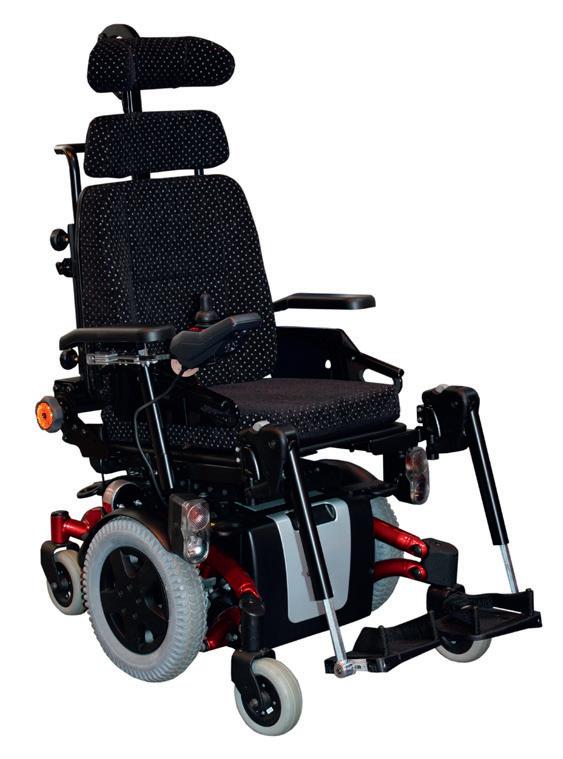
122 Facing the Challenges of Later Life
New research from Age UK has revealed the enormous toll of the cost-of-living crisis on many older people’s mental health and wellbeing
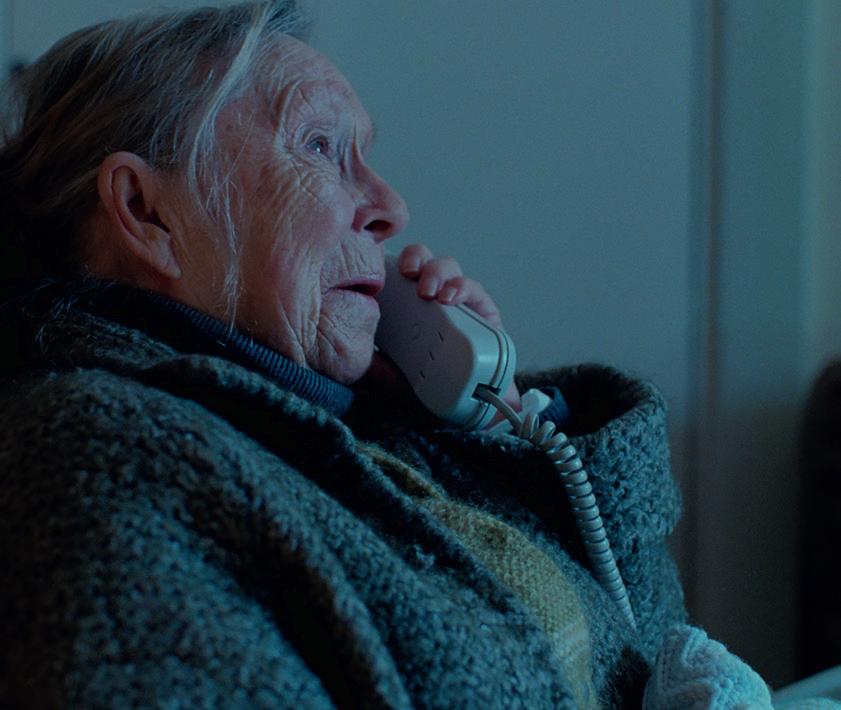
129 Comfort and Joy
Later life health problems can o en be helped with the right choice of bed. What’s available and how do you choose?
PUBLISHER & CEO
Kevin Harrington
EDITOR
Chris Jenkins
SUB EDITOR
Emmanuel Berhanu
CONTRIBUTORS
Suzanne Cairns
Thomas J Roberts
Patricia Savage
PRODUCTION
Ray Walsh
DESIGN
Joanna Harrington
ADMINISTRATOR
Emma Hulse
PUBLISHED BY COPYRIGHT © 2023, CELEBRITY ANGELS
ALL RIGHTS RESERVED
COVER IMAGE Amigo Talent
Live to 100 with Dr Amir Khan
Celebrity Angels
143 Caledonian Road London N1 0SL Tel: 020 7871 1000
For sales enquiries call: 020 7871 1000
All material in Live to 100 with Dr Amir Khan is wholly copyright and reproduction without the written permission of the publisher is strictly forbidden. Products and services included in this publication do not imply endorsement by Dr Amir Khan. The views expressed in this publication are entirely those of the writers and do not necessarily represent those of Celebrity Angels. The information in this publication is carefully researched and produced in good faith, however, neither the Publisher nor the Editors accept responsibility for any errors. The Celebrity Angels Series is published in the UK under licence by Damson Media Limited. Damson Media Limited is registered in England and Wales under registration no. 07869300.


























































❱ LifeVac saved its first life globally in the UK, in 2015.
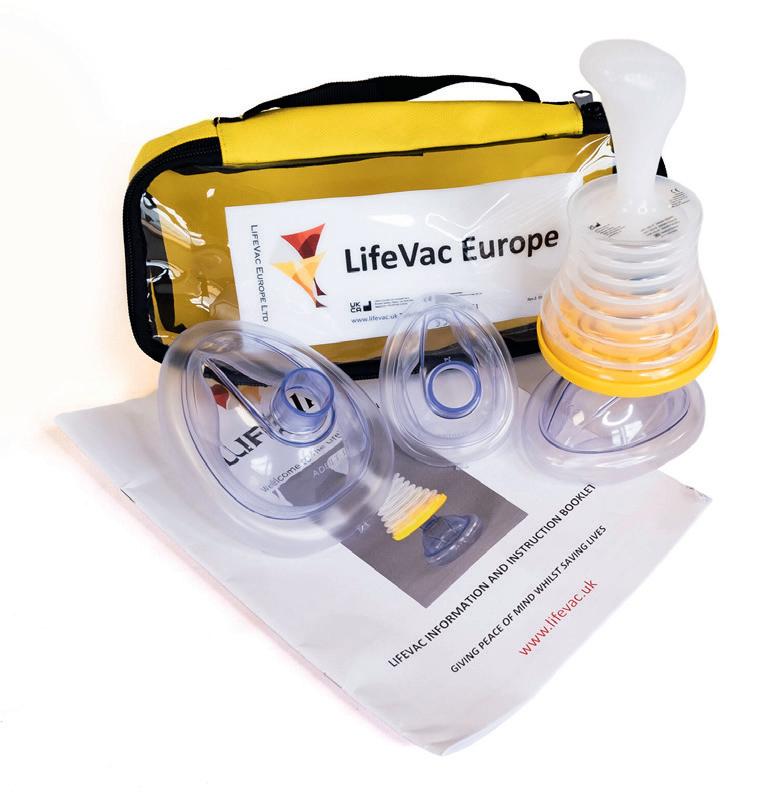
❱ LifeVac is a Class 1 regulated medical device.
❱ LifeVac is backed by multiple peer-reviewed medical publications covering safety, effectiveness, lives saved and ease of use.
❱ 8 lives saved been captured on CCTV.
❱ LifeVac has saved over 775 lives in a choking emergency.
❱ Over 450 lives saved by LifeVac have been children.
❱ Mothers, fathers, grandparents, teachers, nurses and doctors have all used LifeVac to save lives in a choking emergency.
❱ LifeVac has dislodged many things from a casualty’s airway, such as grapes, toys, coins, marbles, vomit, meat, medication, bottle caps, hook-and-loop tape and much more.
❱ Every LifeVac kit comes with an easy-to-scan QR code which takes everyone to a free “how-to” video.
❱ Every LifeVac device is replaced free of charge if ever used in a choking emergency.
Choking remains one of the leading causes of accidental death in adults over the age of 65 and children under five. For children hazardous choking items include certain foods and toys.

Foods that are classed as a choking risk for children are things such as grapes, marshmallows, hard boiled sweets, chewy sweets and hotdogs. It is always recommended to cut food up for children; for example you would not give a whole grape to a child as these are a “perfect” size to block their airway. it is recommended to cut grapes at least in half. Infants, children and young people with a neurodisability and those born prematurely are most likely to be at risk of dysphagia, but feeding difficulties also occur in typically developing children.
LifeVac was founded with one mission in mind, to put an end to choking-related deaths when abdominal thrusts and back blows fail or cannot be performed. With over 775 lives saved around the world in a choking emergency and the backing of multiple peer-reviewed medical publications, we are making a huge difference to people’s lives.
Have you ever said “It went down the wrong way” or “It went down the wrong hole” when eating or drinking? You would not be the only person to say this. In fact, hundreds of thousands of people choke to death every year when First Aid choking BLS (Basic Life Support) protocol fails or cannot be performed.
BLS choking protocol when performed correctly in a perfect situation is around 70% effective, with risks of internal bleeding, fractured ribs and ruptured spleen. These risks are greatly outweighed by the potential loss of life from such a preventative cause of death. For people who rely on wheelchairs for everyday tasks this success rate drops from 70% to roughly 40% as they may not be able to receive the abdominal thrusts. This could be due to being in a high-back wheelchair, frailty or conditions such as Spina Bifida and Muscular Dystrophy.
Small toys such as bouncy balls, pens caps, marbles and toys that have small parts are best kept away from children as they learn texture and taste in their developing process by putting items in their mouth. Most toys come with an age recommendation on the outer packaging, this is to prevent the risk of choking.
Choking-related deaths in this age group are due to many reasons and mainly occur in healthcare settings such as care homes, respite centres, nursing homes and domiciliary care.
The main causes of choking are in these cases are neurological disorders, frailty and dysphagia. Neurological disorders are disorders that affect the brain as well as the nerves found throughout our body including the spinal cord.
Frailty is a major factor when assessing a choking situation. As we age, we lose bone mass and density, bones become brittle and may break more easily. Due to this someone who is 65 and older may not be able to receive the abdominal thrusts of BLS due to serious risk of breaking bones from which they may not recover. This means they can only receive back-blows in a choking emergency, drastically reducing the survival rate,
Dysphagia is the inability to swallow foods and liquids correctly or being unable to swallow at all. This affects 50 – 75% of nursing home patients. Dysphagia can develop for many reasons; the most common within the adult care sector is Neurological disorder such as Multiple Sclerosis, Parkinson’s disease, Huntington’s disease and Alzheimer’s disease. There are over 600 neurological disorders that affect over 14.7 million
people, equating to at least 1-in-6 people living with one or more neurological condition(s). What many people do not know is that Dysphagia in adults can occur as a result of any of other medical problems such as stroke, head injury, brain tumour, HIV, lung cancer, Lupus and many more.


While First Aid classes are a must and everyone should use the tools we naturally have, a common myth or misconception with first aid and choking is that, when people are trained in how to deal with a choking emergency, they go away thinking it will always work and that is all that they will need. When having a First Aid class delivered to you, trainers do not explain how effective BLS choking protocol actually is, which leads to people thinking it is 100% effective, when sadly this is nowhere near the case.
When choking deaths due to the failure of First Aid are reported in the media, articles promote taking First Aid courses (which is a must) in the last paragraph of every article, but this does not address the issue of what people could do when first aid protocol fails to dislodge an FBAO (Foreign Body Airway Obstruction), as the must-have skills they are promoting have just failed to work. This leads to a devastating and preventable loss of life.








❱ Has a patented one-way safety valve, this means when applied no air can be forced through the interchangeable sized masks.

❱ LifeVac can be applied to a choking casualty when they are sitting, standing or lying down. It can even be self- applied if someone is home alone.

❱ If ever used in a real life choking emergency and reported back to us, the LifeVac device and mask that was used will be replaced free of charge.
❱ LifeVac kits come in different variations to meet everyone’s needs. These kits are our Standard LifeVac Kit, Travel Kit and our Wall-Mounted LifeVac kit.





❱ Every kit comes with a detailed instruction booklet in 23 different languages, and an easy-to-scan QR code which takes everyone to a free “how-to” video.
We have many goals at LifeVac, but our longterm goal is have the use of “non-invasive handheld suction devices” implemented into First Aid choking protocol. This make things such as LifeVac a mandatory part of First Aid around the world. If we achieve this goal, we will be able to raise the current 70% effectiveness of current First Aid choking protocol to as close to 100% effective as possible. It will also give people such as pregnant women and wheelchair users an additional option if they cannot receive abdominal thrusts.






Anyone can use LifeVac; in around 80% of LifeVac usages, no one has been trained. They have simply read our detailed instruction booklet. You use your LifeVac device when abdominal thrusts and back blows fail or cannot be performed. LifeVac can be applied to someone who is sitting, standing, or lying down, and can even be selfapplied!
AS SIMPLE AS PLACE - PUSH - PULL

Chris Jenkins talks to Dr Amir Khan, Britain’s favourite TV doctor and the face of Live to 100, about developments in healthcare, how the living environment affects our long-term health, and what we can all do to live a longer and healthier life

AK. Around 47, 000 men die from prostate cancer each year in the UK. Currently we have no screening programme in place for prostate cancer. If a patient presents with symptoms that may be prostate cancer, we will examine their prostate through a rectal examination and arrange a PSA blood test, this is a protein released by the prostate. Prostate cancer is just one of a few reasons blood PSA can be raised. We also arrange PSA blood tests for people who have no symptoms but may be high risk – for example those with a family history or those from a black ethnic group. The PSA is not accurate enough for us to use as a screening test, as it can be falsely positive
meaning men are sent for unnecessary and uncomfortable tests.
A new test called Prostate Screening Episwitch (PSE) combines the PSA blood test with some genetic testing and has an 94% accuracy rating in diagnosing prostate cancer. It has been shown to pick up early changes of prostate cancer, which will improve the outcomes for men with the disease, as the earlier any cancer is diagnosed the better. But interestingly, it can play a role in predicting who might get prostate cancer in the future. It is important to say that it is still in the early phases of testing, and has only been tested in a small number of men so far. But this may well be used as a prostate cancer screening tool in the future. »

AK. We all need to cherish the trillions of gut-friendly bacteria, viruses and fungi that live inside of our colons, collectively known as the Gut Microbiome. It is thought these microbes begin their residence inside of the part of our gut called the caecum when we are just foetuses inside of our mother’s wombs. As we grow and develop, they begin to diversify and play a crucial role in our survival. Initially they help us to digest breastmilk, then as we move to solids they help us digest fibre. This digestion process produces short-chain fatty acids that are not only important to gut health but have also been shown to help reduce weight gain, and the risk of type 2 diabetes, heart disease and bowel cancer. They also help support your immune system, they develop a complex communication system with your immune cells and can determine how well and quickly we fight off infections. As well as all of this, a diverse and happy gut microbiome can help manage symptoms of irritable bowel disease by managing the number of unfriendly bacteria that try to invade our gut and cause bloating and cramping symptoms.
You can keep your gut microbiome healthy and happy by eating a diverse range of whole foods such as legumes, beans, fruit and vegetables. Eating fermented foods such as yoghurt and kefir is beneficial as they contain millions of healthy gut bacteria, so are a top-up for your body. Limit your intake of artificial sweeteners as these have been shown to promote the growth of disease-causing bacteria inside of our guts, and finally only take antibiotics when really necessary, these not only kill off your disease-causing bacteria but also your good bacteria.
AK. We all deserve to breathe clean air. It should be a given, but sadly many of our towns and cities breach air quality standards, leaving us exposed to dangerous air pollutants. Children are especially exposed as they tend to spend more time outdoors, with many of them walking along busy roads to and from schools. Being smaller their mouths and noses are closer to the points where exhausts from cars puff out dangerous compounds. As well as this, children breathe faster than adults so take in more of any pollutants that are in the
air. It’s important to remember children are still developing, their yet to mature lungs and immune systems also puts them at increased risk. But the damage starts before they are even born. Studies show pregnant women exposed to higher levels of air pollution have a higher risk of preterm labour. Children growing up in areas where they are exposed to dangerous levels of air pollution are more likely to be diagnosed with asthma and for those who are diagnosed, are more likely to have exacerbations of their asthma. There is now increasing evidence that high levels of air pollution affect children’s brain development and has even been linked to behavioural issues. More worryingly, there is substantial evidence traffic-related air pollution is associated with an increased risk of childhood leukaemia. As with a lot of health issues, the poorest in our society are affected most as they are more likely to live in inner city areas or near busy roads where housing is often cheaper.
This is one of many reasons we need to move towards green modes of transportation, buses or car sharing. Drivers often get frustrated with road closures around schools, but interventions like this can make a big difference to the long-term health outcomes of our children.
AK. The menopause will a ect women in di erent ways. Some women sail through it with no problems, but for many women it can be incredibly debilitating, with the symptoms causing problems in both their work and home lives. For decades the menopause has been poorly researched and poorly managed. We now have lots of people with huge platforms speaking about the menopause in a bid to let women know that they don’t have to su er in silence and there is treatment out there. Hormone replacement therapy (HRT) is one way to treat menopausal symptoms. The government has announced that from April 2023, women in England will only pay once for an annual prescription of HRT, costing £18.70. This means those women who could not a ord monthly or three-monthly prescription charges for HRT will now be able to access this valuable treatment. I would have preferred it to be free of charge, like it is other parts of the UK, but it is a step in the right direction. For too long, women have been denied good evidence-based
treatment for their menopause symptoms and this will help remedy that.
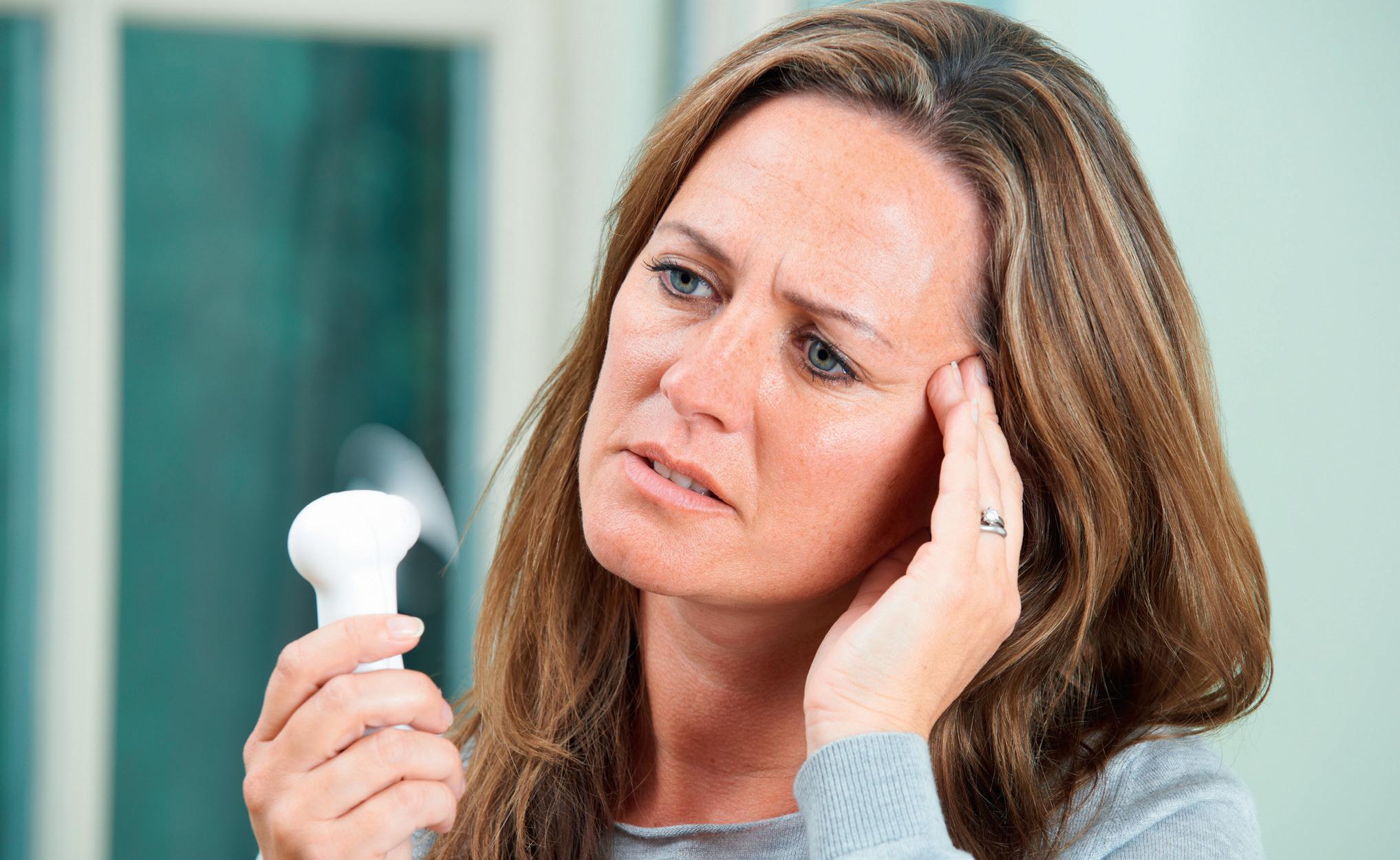
It is important to note that HRT cannot be taken by everyone. If you have had certain types of breast cancer for example, you may wish to consider other nonhormonal ways to manage your symptoms and it is worth speaking to your doctor about this.
It’s hard to believe that the menopause was once a taboo subject, but I am hoping that by speaking about it openly and understanding the di erent ways it can be managed, more and more women will be able to access treatment.





AK. It is lovely to get nominated or listed for things like this, but I always take it with a large pinch of salt. I understand I have a platform, either through my social media channels or television work from which I can voice my opinions and talk about some the work I do. I am not understating the work I have done to get this far, but I
am wise enough to know there are lots of people in Bradford and other cities that quietly go about their business, making a positive di erence to people’s lives who do not get acknowledged in the same way I do. Being a Bradford lad, anything that positively highlights the city its important to me. If being on this list helps me do that, then that is a good thing, and there are lots of people also listed that do incredible work and I am proud to stand by them. »

AK. Spring has arrived in the garden - this is my favourite season as it is full of promise. Daffodils and snowdrops are already in full bloom, their little heads dancing in the winds bringing a little bit of joy every time I see them. And the birds are busy collecting nesting material - a pair of bluetits have been checking out one of our birdboxes, which is very exciting. I feel like an estate agent, I have to sell it to them – there are lots of feeders for them to feed from, a pond from which to drink and a willing host (me) who is ready to act out your every request. Let’s hope they choose our garden to raise their chicks!
Most excitingly, the hedgehogs are awake. After their winter of hibernation we saw two adult hedgehogs in the garden a couple of weeks ago, both looking healthy. We have started putting out kitten biscuits and water for them each evening and love watching them cautiously approach and then feed, the little crunching noise they make is simply adorable!

The pond is also full of frogspawn, so we are looking forward to watching the tadpoles hatch and develop over the coming months – I don’t think there is
anything more fascinating than watching a tiny tadpole sprout legs and eventually hop out of the water as a wee frog!
AK. I am really excited for this. Last October, I did my first live gig in Leeds, An Evening with Dr Amir Khan, in a bid to raise money for those affected by the floods in Pakistan. It was a huge success and raised lots of money for an important cause. This time I am taking the show on tour to London, Suffolk, Manchester, Newcastle and Chester – all proceeds will be donated to the Disasters Emergency Appeal for those affected by the Syria-Turkey earthquake.
People coming can expect a night of fun and education. There is lots of talk about my career and funny (never before heard) stories of patient encounters and from within the NHS. But we also talk about my mum, growing up South Asian in the UK, and there is some political satire. The second half has a lot of audience participation - you can ask me anything you want via an app and we talk in detail about medical topics people may be too embarrassed to speak to their GP about
such as an itchy bottom, a dry vagina and a floppy penis. All done sensitively and in an informative way! There is even a bit of bhangra dancing!
AK. It has been a busy few months. As well as working at my surgery, I have written two books, one out in September this year and the other in February 2024. Writing a book is such a colossal task, and as much as I enjoyed doing them, it took me almost three years so I am glad they are done and can’t wait for people to read them. I’m hoping to do an official announcement in the coming weeks!
As you know, I love wildlife and helped launch the RSPB Big Garden Birdwatch in February and will be launching the Big Butterfly Count in the summer – these are vital citizen wildlife surveys that help us understand the state of nature better. As well as these, we have the No Butts campaign coming up on Lorraine in April, which aims to lift the taboos on talking about your bowel movements and investigating any changes. So, lots to keep me busy! ■
Now more than ever it is vital we maintain a strong immune system to guard against disease and support a healthy lifestyle. Doing this and at the same time losing weight may be a lot easier than you think, with Germany’s No.1 meal replacement in weight loss1 Almased® contains a nourishing blend of soya, yogurt, enzyme-rich honey, all teeming with vitamins and minerals. Almased®’s ingredients combine synergistically to provide superior levels of nutrition, all while optimising your immune system2, enabling you to feel your best while losing weight.

With over 30 years of scientific research, Almased® remains at the forefront of effective weight loss, optimum nutrition and general
wellbeing. Recent clinical studies have shown that when compared to a normal 2,000 calorie diet, people who used Almased® achieved greater daily calorie expenditure and lost more fat4, thus validating our position as the ‘Most Trusted Weight Loss Brand’ voted by consumers, 2020.
Incorporating Almased® into a balanced diet will support your immunity long after your weight loss goal has been achieved. What’s more, it’s easy to prepare and perfect for any busy lifestyle. Achieve your very own weight loss and wellbeing goal with Almased®’s 14Day or Long-Term Plan. Lose weight, maintain that lost weight and feel great!














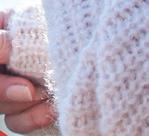

























Greater calorie & fat expenditure vs a normal 2,000 calorie diet3

Reduces body fat without loss of essential muscle4 Supported by science 30 years of scientifically proven results.


Nutritionally complete Soya, yogurt and enzyme-rich honey with added vitamins and minerals. Supports healthy immune system2 Packed full of antioxidants and nutrients such as vitamin c and zinc.



Contributes to weight loss when replacing two daily meals* Maintains weight after weight loss by replacing one daily meal.
Natural: no gluten, artificial flavours, fillers, stimulants or preservatives.


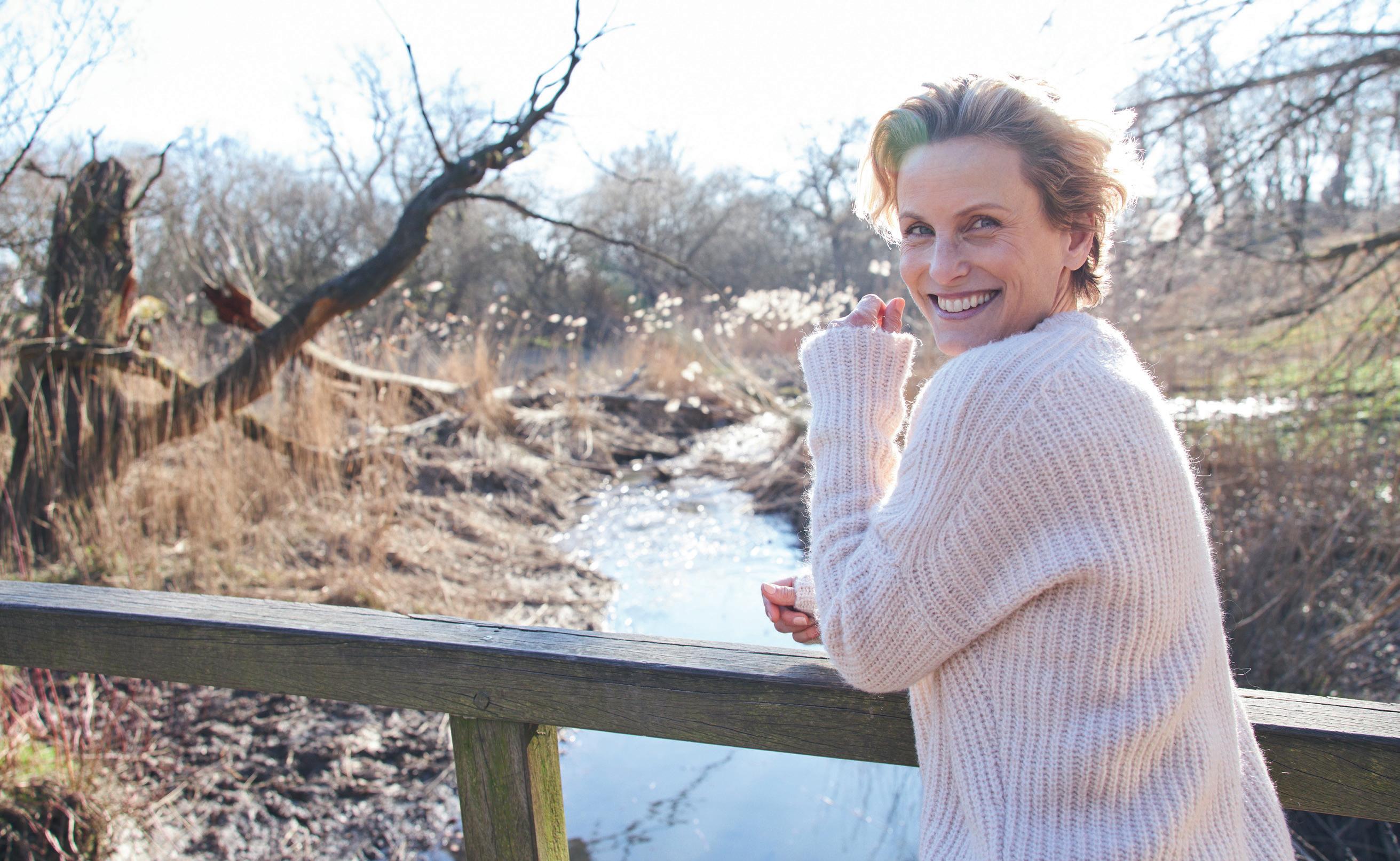
1.Euromonitor International (2020). 2. Vitamin C and Zinc contribute to the normal function of the immune system. 3. Oliveira, C et al (2020). American Journal of Clinical Nutrition; 00:1–12. 4. Deibert, P et al (2004). Intl. Journal of Obesity; 28(10):1349-52. 5. König, D et al (2008). Annals of Nutrition and Metabolism; 52(1):74-78. †Reader’s Digest. Trusted Brands 2020. Germany. *Substituting two daily meals of an energy restricted diet with meal replacements contributes to weight loss.

HELPFUL ADVICE: Please consult your healthcare professional before starting any weight loss programme such as Almased®. Almased® is a meal replacement which can be used to replace up to two of your daily meals. Depending on how your diabetes is treated, you may require support to a) start checking your blood glucose levels/to check them more regularly, b) to make changes to your medications.


GPs and pharmacists have helped cut opioid prescriptions in England by 450,000 in under four years, data shows, as the NHS unveiled a new action plan to crack down on the overuse of potentially addictive medicines. The new framework for local health and care providers aims to further reduce inappropriate prescribing of high-strength painkillers and other addiction-causing medicines, like opioids and benzodiazepines, where they may no longer be the most clinically appropriate treatment for patients –and in some cases can become harmful without intervention.


The NHS has stopped thousands of people from getting type 2 diabetes thanks to its world-leading NHS Diabetes Prevention Programme. Analysis by University of Manchester researchers shows the risk of developing type 2 diabetes was one fifth lower in people with raised blood sugars referred to the programme, compared to people not receiving NHS support. The programme has been offered to adults in England who are at risk of developing type 2 diabetes as part of radical action to tackle rising obesity rates and to prevent people from developing the condition. Latest data shows that over 1.2 million people have been offered support through the programme.
The NHS has launched an ad campaign, as just one in five people aged 18-40 would visit a High Street pharmacy for expert advice on minor illnesses. The campaign highlights how High Street pharmacies can support patients with non-urgent health advice for minor conditions including coughs, aches and colds. Movieinspired Help Us Help You adverts will run across catchup TV services, online video, radio and social media.

Rated ‘Outstanding’ by Ofsted since 2011, Nexus Fostering are a fostering family like no other. Supporting their foster carers and young people is their number one priority. They o er a competitive weekly allowance, extensive training, and round-the-clock support.

www.nexusfostering.co.uk
LifeVac Choking Rescue Device is a noninvasive portable airway clearance device, with two sonic-welded discs and a patented one-way safety valve. This means when applied, no air can be forced through the interchangeable sized masks. LifeVac is proud to have saved over 747 lives in a choking emergency, ranging in age from two months old to 105 years, all when First Aid choking protocols have failed or cannot be performed. The regulated LifeVac medical device is also replaced free of charge if ever used. As simple as PLACE – PUSH – PULL. www.lifevac.uk
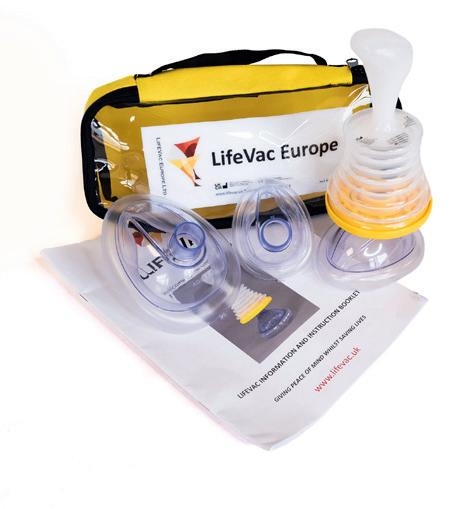
NoriZite Nasal Spray is an easy-to-use protective nasal spray containing NoriZiteTM, a patented blend of natural ingredients to help reduce the risk of infection from viruses transmitted primarily via the airborne route and remove them from the nose. Developed by experts at the Healthcare Technologies Institute at the University of Birmingham, Norizite micromist nasal spray combines powerful ingredients with a finely balanced viscosity that plumes to cover the nasal cavity and forms a strong barrier that lasts – providing six times more coverage and long-lasting protection.
NoriZite Nasal Spray o ers an additional layer of protection and peace of mind. birminghambiotech.co.uk/ norizite
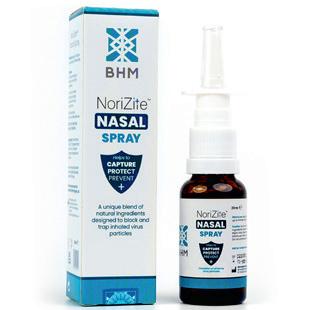
MedicAir provides innovative air purifiers for home use, creating cleaner and healthier indoor spaces. Their cuttingedge technology filters out allergens, pollutants, and viruses, delivering purified air for improved health and well-being.



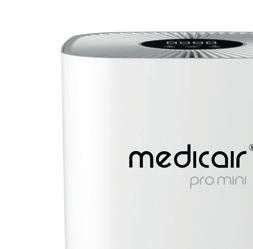
www.medicair.co.uk
Hyperbaric Oxygen Therapy (HbOT), involves breathing pure oxygen in a pressurised environment. At higher pressures the body can absorb up to 16 times more oxygen which benefits all of the 15 trillion cells in the body. As such, HbOT is a fantastic treatment for a huge range of ailments & issues. From tissue recovery, stress relief, skin rejuvenation, sports recovery and so much more.

https://oxify.co.uk/
Lightweight and beautifully soft, Coolmax® Seamfree premium unisex trainer socks are supremely comfy. Coolmax® technology improves breathability to prevent odour and keep feet dry, reducing the risk of athlete’s foot, sores and blisters. Super-stretchy for an excellent fit with a smooth join at the toe that won’t rub sensitive feet. Diabetic friendly and made in Britain. Available in standard and extra roomy fittings. Three-pair pack from £23.50. www.cosyfeet.com/coolmax-seam-free-trainer-socks


As Spring approaches, we tend to fall prone to allergic reactions and airborne infections. What can we do to cut down on sniffles and sneezes?
Spring marks a time of misery for some people as common allergies to substances such as pollen cause respiratory problems with unpleasant symptoms such as runny noses, puffy eyes, coughing and sneezing.
At the same time, respiratory viral infections can spread easily between people through sneezing, coughing, singing, and talking, which may spread respiratory droplets (aerosols) from an infected person to someone close by. Droplets from the mouth or nose may also contaminate hands, cups, toys, or other items and spread to those who may use or touch them, particularly if they then touch their nose or mouth.
One form of preventative treatment is a nasal spray containing natural ingredients designed to coat the nasal cavity, creating a strong barrier to physically trap viruses, and helping to remove them from the nose via the body’s own clearance pathways, before they can cause infection. Ingredients can include iota-carrageenan, an antiviral agent known for inhibiting infection against several respiratory viruses, and gellan gum, which ensures effective coverage and retention in the nasal cavity.
The gel-like formulation is designed to be applied in a fine mist-like ‘plume’ rather than a ‘jet’, providing enhanced surface coverage and reducing running. The treatment should last for several hours, but of course it is a preventative measure rather than a cure.
If your problem is more to do with allergy than infection, so-called ‘hay fever’, the pollen season can be a nightmare. The two main types of pollen which affect the majority of people with hay fever are tree and grass pollen. Tree pollen occurs first, typically from February to June. Tree pollen causing hay fever is usually released around
the start of February, but climate variation affects pollen season, and in mild weather it can start in January.
Charity Allergy UK’s top tips for reducing exposure to tree pollen are:
h Monitor pollen forecasts daily and if possible, stay indoors on high pollen days. Rain washes pollen from the air, so pollen counts should be lower on cooler, wet days.
h Wear a mask, wraparound sunglasses and a hat with a large peak or brim when outdoors to keep pollen allergens out of your eyes, face, and hair.
h If you have been outdoors for prolonged periods, shower, wash your hair and change your clothing, especially before bed. As pollen is virtually indestructible unless wet, it will stay on hair, body and clothing, acting as a constant source of allergen triggering hayfever symptoms.
h Avoid outdoor activities that expose you to pollen, such as mowing lawns or raking leaves.
h Keep windows closed at home and in the car. Most importantly, in the early morning and evening, when the pollen count is higher.
h Avoid drying clothes and linen outside, as pollen can be brought inside on the clothes.
h Wipe pets’ coats with a damp microfiber cloth to remove pollen when they have been out.
The most common treatments for allergies are antihistamines, which can reduce the symptoms of runny nose and itching in the nose, throat, and eyes. You should start treatment early, up to two weeks before symptoms usually start for the best result.
Nasal steroid sprays help to reduce inflammation associated with the ‘stuffy
nose’ feeling of hay fever and may also help to reduce allergic eye symptoms. It is important to take your nasal spray correctly to get the most from your medication; make sure you shake the bottle before use, blow your nose to clear it, tilt you head slightly forward, insert the nozzle and spray directly into the nasal passage.
Saline or antihistamine eye drops, saline nasal sprays and irrigation and nasal allergen barrier balms applied to the rim of the nostril may also help to make life more comfortable for people living with hay fever. ■
Charity Allergy UK wants to raise awareness among health care professionals of house dust mite allergies and the impact of living with them.
The charity is building its bank of lived experiences for this allergy and is particularly looking for stories from parents of children who live with house dust mite allergies. If you would consider sharing your story on film for a video that Allergy UK is producing, please get in touch. There is a small remuneration available to participants in their films.
Allergy UK will work closely with participants throughout the process. If you’re not willing to share your story on film, but are happy to do this in a written form, Allergy UK would still love to hear from you. Email press@allergyuk.org for more information and to register your interest in getting involved.





Researchers are beginning to understand that skin problems can be related to the gut. How can diet and supplement improve our health from inside to out?
Many skin conditions such as psoriasis have causes which are not completely understood, but it’s beginning to look as if the origin of this and other skin conditions could be a combination of external factors such as bacteriological infection and problems with the digestive system.
The digestive system, or gut, is much more complex than previously thought - in fact it’s now sometimes regarded as a ‘second brain’, linked to the nervous and immune systems and having profound effects on our internal and external health.
The key to gut health,
and hence skin health, may well be the microbiome, the colony of benign bacteria in the digestive system which aid the digestive process.
Probiotics, gut-friendly bacteria, and prebiotics, the substances that nourish them, are now often thought of as the key to maintaining a healthy microbiome, and hence gut function and skin health. Probiotics and prebiotics can be present in
adequate amounts in a carefully managed diet, but where they are lacking they are often suggested as supplements to help with gut balance.
It’s known that the skin is the body’s largest organ, serving both to protect against bacteria and pathogens, but it’s harder to explain the link between gut health and skin conditions. Diagnosing whether the two are connected can be easy - for instance, if drinking milk triggers indigestion, hives, or eczema - but the connection in other cases can be less straightforward.
“The gut and skin enjoy a constant dialogue via what has become known as the gut-skin axis,” says Carla Oates, gut health expert and founder of The Beauty Chef. She explains that while symptoms of gut health issues can be incredibly varied, the skin is often a great barometer for what’s going on inside the gut.
“While it might not sound very glamorous, the gut is where 70
Some skincare products now incorporate probiotics, on the theory that the skin’s own microbiome, its ecosystem of bacteria, fungi, viruses and organisms, is actually the immune system’s first line of defence. So apart from the ‘inside-out’ approach of treating the gut, there’s still an argument for the ‘outside-in’ approach to skin treatment, as a balanced skin microbiome may help reduce eczema, acne, dry skin, and even wrinkles and skin cancer risk linked to UV damage.






percent of our immune system lies,” she explains. “It’s where we make nutrients, metabolize hormones and detoxifying enzymes, neutralize pathogens and make neurotransmitters - so it’s super important to get your digestive health in check in order to feel well and of course, experience clear, glowing skin.”
Symptoms of gut imbalance, such as inflammation, leaking and indigestion, can o en result in skin problems such as eczema, rosacea, and acne. A 2017 study published in Frontiers in Microbiology, The Gut Microbiome as a Major Regulator of the Gut-Skin Axis, reports that individuals with rosacea have a higher incidence of gastrointestinal disease, and another study showed that patients with irritable bowel disease may experience lesions and other skin disorders.

The beneficial e ects of gut bacteria on skin health and appearance have been documented in several studies






on mice and humans. In one in 2013, mice who received lactobacillus reuteri supplementation showed a thicker skin layer and increased production of sebocytes, structures which moisturise the skin. The result was thicker, shinier fur - so if you want your fur to be thicker and shinier, perhaps this is the way to go!



Another study in rats treated with lactobacillus brevis showed a significant decrease in transepidermal water loss (TEWL), an indicator of the skin’s e ectiveness as a barrier. The e ect was also shown in human clinical research, when a er taking l. brevis oral supplements for 12 weeks, human subjects had significantly decreased TEWL and increased hydration of the cornea, the transparent layer that covers the eye.

Another study showed that the introduction of Lactobacillus helveticusfermented milk whey to human diet could improve production of filaggrin, a protein essential to normal skin flexibility and hydration, suggesting a potential



moisturizing benefit. So if you su er from skin conditions such as rashes, dryness or inflammation, it may pay to look to the gut as the source of the problem.




There are many strains of probiotics, such as Lactobacillus, Bifidobacterium, Saccharomyces, Enterococcus and Akkermansia, and it’s di icult to say which of these might work best for your gut and skin. A balance of di erent strains is likely to be more e ective than imposing a single one on your microbiome. You certainly can’t expect instant improvement in skin health from taking probiotics - it may take several weeks for the balance of your gut, immune system and skin to adjust.
There’s also now a suggestion that ‘postbiotics’, bio-active compounds produced by probiotic cells, are able to deliver health benefits through their activity on our immune system, and are retained even a er their parent cells (probiotics) are no longer alive. ■
Celebrities including Alan Titchmarsh and Tommy Walsh are supporting the NHS’s bowel cancer screening programme - but why is it so vital?

Popular TV presenters Tommy Walsh and Alan Titchmarsh have joined forces with the NHS to support a first-of-itskind cancer awareness campaign. In a new film discussing the importance of bowel cancer screening, the famous faces will urge those eligible to return their lifesaving bowel cancer screening home tests.
Recent data showed almost one third (30%) of people do not return the potentially lifesaving tests. The film will be launched across NHS social media channels with Tommy and Alan answering questions – written on toilet roll – on how the NHS bowel cancer screening programme in England works. The pair remark how the public “owes it to your family and yourself” to complete the quick test which can help detect the early signs of bowel cancer.
The video is part of the NHS “Help Us Help You” campaign, which tackles the fears surrounding a cancer diagnosis, and aims to get more men and women diagnosed at the earliest stage where bowel cancer survival rates are nine times higher.
It follows a new survey that found nearly nine in 10 (89%) of eligible 56-74-year-olds would be likely to take a bowel cancer screening test if it could help find signs of cancer at an earlier stage, but one in five say they wouldn’t complete one because they would be too embarrassed to look at their poo.
Bowel cancer is the fourth most common cancer in the UK, but screening increases the chances of early diagnosis which can prevent deaths from this devastating disease.
NHS chiefs want to dispel the stigma surrounding the test and increase uptake with a TV and radio campaign launched last month urging men and women who receive the test to “put it by the loo, don’t put it off.”
The NHS bowel cancer screening programme involves using a Faecal Immunochemical Test (FIT) kit, which
detects small amounts of blood in poo – that would not be visible to people –before someone may notice anything is wrong. A tiny sample of poo is collected using the plastic stick provided and is placed in a sample bottle before being sent back to the NHS, free of charge, for laboratory analysis.
National Director of Screening and Vaccinations, Steve Russell, said: “It is fantastic to have Alan and Tommy shine a spotlight on our NHS bowel cancer screening programme and to use their star power to get the country to put the test by the loo and to not put it off.
“There is absolutely no need to feel embarrassed about poo and our survey shows most of us would be happy to take a screening test from the comfort of our own home to try to find early cancer, so I hope everyone who receives one of these quick and easy tests, completes it as soon as they can.”
Symptoms of bowel cancer can include:
❖ A persistent change in bowel habit such as pooing more often, with looser, runnier poo
❖ Blood in the poo
❖ Abdominal pain
❖ Discomfort or bloating always brought on by eating
DEBORAH
National Cancer Director, Dame Cally Palmer, said: “The entire country fell in love with the passionate campaigning of Dame Deborah James last year and her tireless work to bring bowel cancer to the forefront of health conversation.
“Her legacy continues on through these famous faces who are just as passionate as she is and we are already seeing incredible responses to our cancer awareness campaigns with record treatments and referrals, so do not delay
in returning your kit as your next poo could save your life.”
Bowel cancer is the fourth most common cancer in the UK, and the second biggest cancer killer.

Data shows 43,000 people in the UK are diagnosed with bowel cancer every year and 16,500 people die from it annually – around 45 people per day.
Gardener and TV presenter, Alan Titchmarsh said: “We know the earlier you detect cancer, the far greater your chances of survival. That’s why this campaign is so important – the NHS bowel cancer screening test can detect cancer even before you notice anything wrong.
“It’s quick to complete and if you do it as soon as it arrives, you can send it off the same day, and job done! I really urge everyone to do it – you owe it to your family, and you owe it to yourself.”
TV personality and DIY expert Tommy Walsh said: “As a cancer survivor myself, I know how important diagnosing cancer early is. But I didn’t know that detecting bowel cancer at the earliest stage makes you up to nine times more likely to be successfully treated.
“So remember, if you are sent an NHS bowel cancer screening test, do it as soon as it arrives in the post! Put it by the loo, and don’t put it off.” »
TV doctor Dr Sarah Jarvis, who is also supporting the campaign, said: “The campaign is all about encouraging those who are sent an NHS bowel cancer screening test in the post to complete it, so that we can detect bowel cancer at the earliest stage.
“It’s a big concern that almost one third of people who were sent an NHS bowel cancer screening test in England last year did not go on to complete it. But it’s so vital that people don’t put o doing their bowel cancer screening tests if they receive them in the post, as your next poo could save your life.”
Cancer Research UK’s head of health and patient information, Dr Julie Sharp, said: “We hope this campaign shows people just how easy the bowel cancer screening home test kit is to do.
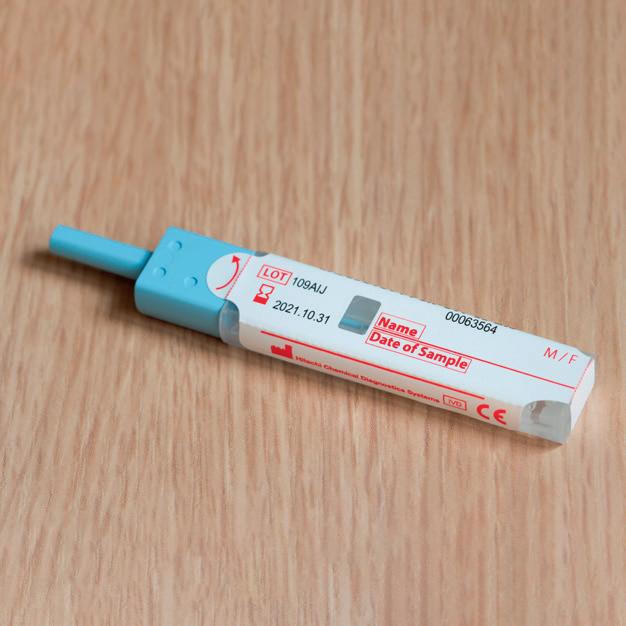
“The test now only requires one tiny sample of poo and could result in a life-saving early diagnosis. Don’t put it o – spotting cancer early can make all the di erence.”
Genevieve Edwards, Chief Executiveat Bowel Cancer UK, said: “Almost 43,000 people are diagnosed with bowel cancer each year in the UK and it’s our second biggest cancer killer, but currently fewer than 40% of people are diagnosed at the earlier stages when it’s easier to treat.
“Screening is one of the best ways to detect the disease early, so it’s brilliant to see celebrities like Alan and Tommy getting on board helping to raise awareness and encouraging others to have open conversations about bowel cancer.” ■
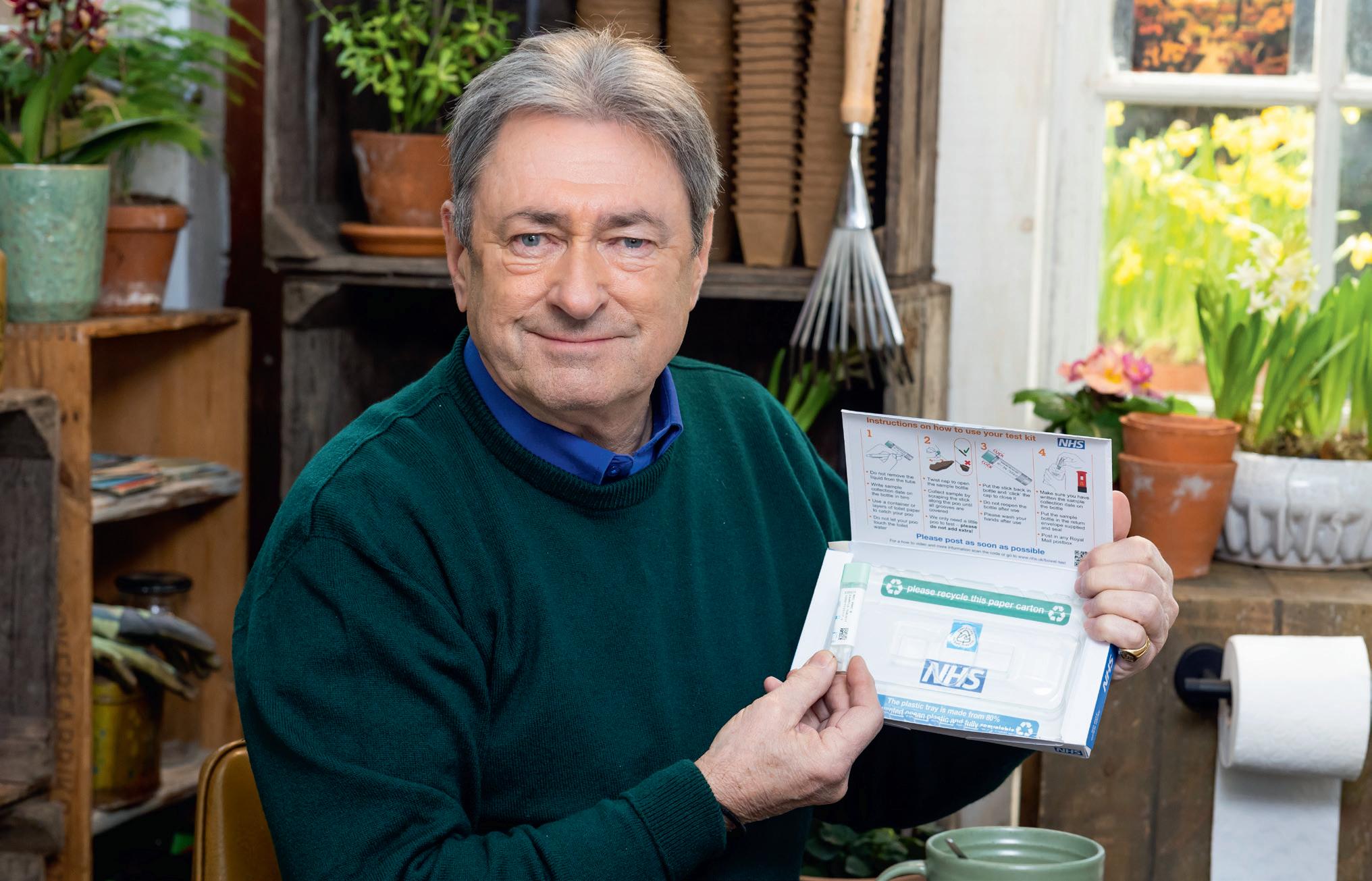
More than half a million Faecal Immunochemical Tests, known as FIT kits, are posted out each month to eligible people, who are automatically sent a kit every two years if they are registered with a GP practice and live in England.
NHS England is currently in the process of lowering the age of men and women that receive the test to include all over 50s by 2025, which the programme has already expanded to also include 56-year-olds and most 58-yearolds. People concerned that they may have missed their invitation or have lost or thrown away their kit can call the free bowel cancer screening helpline for advice on 0800 707 60 60. Information on bowel cancer and the screening programme can be found at: nhs.uk/bowel-screening.










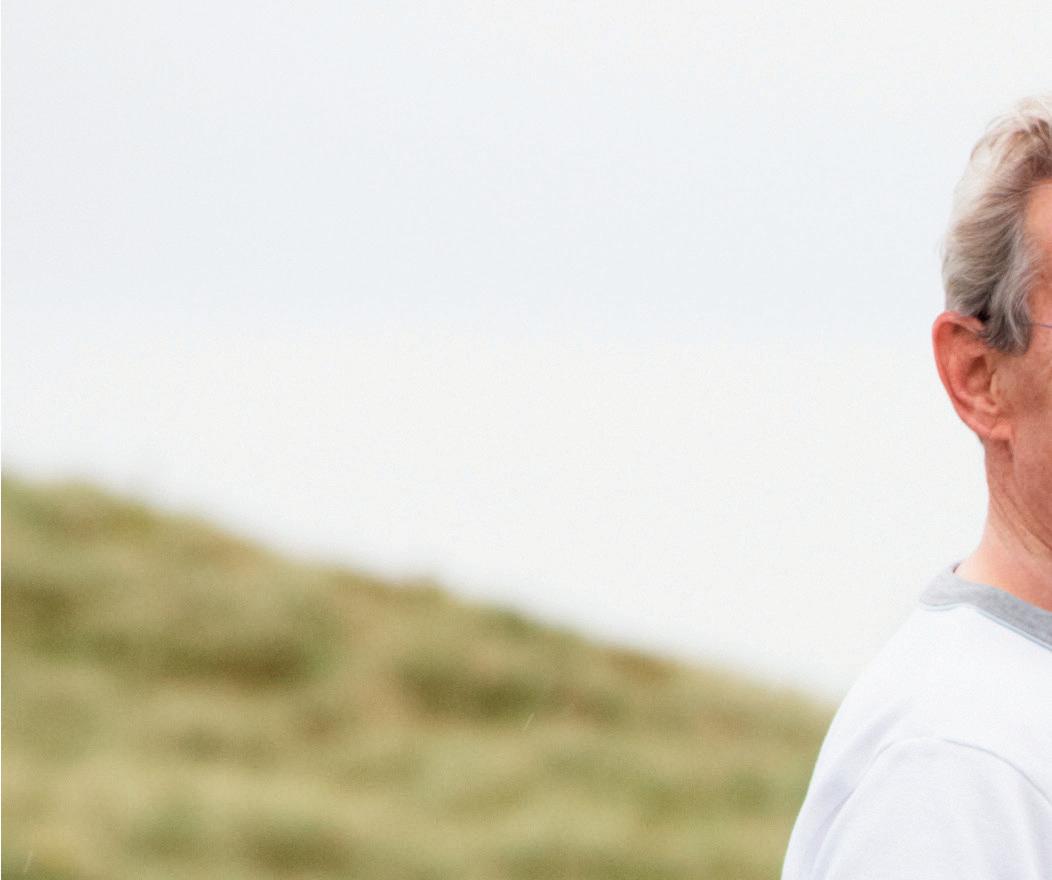











The digestive system is a delicate and complex one involving a group of connected organs. The digestive system works to break down food we eat and turn it into energy which we rely on for healthy activity and growth.
However, with modern diets including a range of unessential sugars, fats and processed foods pushed on us by the food industry, sometimes our bodies are put off-balance, and digestive problems have become common. Fortunately there’s growing awareness of causes of dietary imbalance and the natural remedies you can consider to aid your digestion.
An ideal diet for your digestive system includes plenty of leafy green vegetables, fruits and whole-grain foods. Foods high in fibre are essential for good digestion.
Fluids are also essential. Plenty of water helps the fibre in your diet work properly. Without enough water, there is more risk of constipation as your body is unable to absorb the nutrients in your food.
Probiotics, ‘friendly bacteria’ commonly found in certain types of yogurt, have all sorts of digestive health benefits.
Digestive conditions can be serious enough to affect quality of life, and it’s not always clear what causes them or how they should be treated. So what are the most common?
Indigestion is where your body struggles to digest food, either because of poor
eating habits such as excessive seed or amount, or due to an underlying medical condition. Symptoms can include ‘heartburn’ or acid reflux, stomach acid travels up towards the throat and causes a burning sensation. If this happens frequently, it could be a sign of gastro-oesophageal reflux disease (GORD). Indigestion can often be treated by dietary changes such as cutting out coffee, alcohol, chocolate and spicy foods for example.
Irritable Bowel Syndrome or IBS is a common digestive condition which effects around 1 in 5 people in the UK, more women than men. Symptoms often develop around the age of 20 to 30, and include constipation or diarrhoea, along with bloating, trapped wind and cramps.
Unfortunately, there is no cure for IBS, however your GP will usually advise some diet and lifestyle changes in order to help your digestive system process food less painfully.
Probiotics are live bacteria and yeasts, promoted as having various health benefits. They’re usually added to yoghurts or taken as food supplements, and are often described as “good” or “friendly” bacteria.
Probiotics are thought to help restore the natural balance of bacteria in your gut (including your stomach and intestines) when it’s been disrupted by an illness or treatment.
There’s some evidence that probiotics may be helpful in some cases, such as

helping to ease some symptoms of irritable bowel syndrome. There’s less evidence to support some other claims for them, such as that they can help treat eczema.
If you’re considering trying probiotics, there are a few issues you need to be aware of. Probiotics are generally classed as food rather than medicine, which means they don’t go through the rigorous testing medicines do. Because of the way probiotics are regulated, you can’t always be sure that the product actually contains the bacteria stated on the food label, or enough bacteria to have an effect. In some cases the bacteria may not be able to survive long enough to reach your gut. There’s likely to be a huge difference between the pharmaceutical-grade probiotics that show promise in clinical trials and the yoghurts and supplements sold in shops.
There are many different types of probiotics that may have different effects on the body; you may find a particular type of probiotic helps with one problem, but this doesn’t mean it’ll help other problems, or that other types of probiotic will work just as well. If you have an existing health condition or a weakened immune system, you should talk to a doctor before taking any probiotic supplements. »
A Mintel survey in 2016 suggested that 86 percent of Brits suffer from gastrointestinal problems, with 30 percent attributing them to stress, 26 percent to poor diet, 17 percent to lack of sleep, and 14 percent to alcohol consumption or viruses.

But for most people, probiotics appear to be safe. If you want to try them, and you have a healthy immune system, they shouldn’t cause any unpleasant side effects.
There are certain natural remedies which can help with the balance of the digestive system. Many of these natural remedies come in the form of supplements, which are easy to incorporate into your daily life.
Supplements are often designed to be resistant to your stomach acids and enzymes, which means they do not get broken down, and instead aid in the digestive process.

Peppermint
Peppermint is usually recognised as a familiar smell and a refreshing flavour, however it actually holds a number of health benefits, particularly for your digestive system, and is often called ‘the stomach healer’.
Studies have shown that peppermint can relax the digestive system when absorbing food, thus easing pain caused by spasms which occur in many of the digestion conditions above.
Peppermint oil supplements are considered a good way to get the healing properties of the plant into your system
without the stomach acids breaking it up before it can aid digestion, while peppermint tea can also be effective in some conditions.
Chamomile
Chamomile has anti-inflammatory properties which can ease cramping or bloating that occurs when your body is having trouble digesting foods. Chamomile can, in particular, help with acid reflux, because the herb can assist in lowering gastric acidity.
It is believed that chamomile tea can be used with as much effectiveness as a supplement, and has even been considered to hold the same benefits as taking more recognised medical compounds such as paracetamol or ibuprofen.
In Eastern and Western medicine, ginger is regarded as not just a culinary ingredient, but also a digestive aid. Ginger has a long tradition of being extremely effective in easing pain and discomfort in the stomach. It is thought that the spice performs as
Coeliac Disease is diagnosed in around one percent of the UK population, though it’s thought that around 24 percent could be undiagnosed. The disease is basically an allergy to the protein gluten, found in grains including wheat and barley, and causes inflammation of the small intestine. Depending on the severity of the condition, complete avoidance of gluten in the diet can be necessary.
an effective carminative, soothing the intestinal tract by eliminating excessive gas.
A study from the European Journals of Gastroenterology and Hepatology found that ginger stimulates saliva, bile and gastric enzymes to aid digestion and helps speed up the movement of food from the stomach moving to the small intestine.
Ginger supplements are available, however you can also take it in forms of tea, tonics and food additives.
So if your digestion isn’t what it should be, you may benefit from eating a more natural diet and testing the benefits of traditional solutions. ■















It’s perfectly normal to enjoy drinking alcohol in moderation, and health services give us guidance on safe limits in terms of units. But many people are confused by what these units mean and how they work.
Alcohol units are simply a way of keeping track of the amount of alcohol you consume and correlating it to how much
will be le in your blood a er a certain amount of time.
For example, 14 units of alcohol can be regarded as the equivalent of 6 pints of average-strength beer, or 10 small glasses of low-strength wine.
Men and women are advised not to drink more than 14 units a week, according to the NHS.
Medical professionals also recommend that you spread your drinking over three or more days if you regularly drink as much as 14 units a week.
If you want to cut down, a good way to do so is to have several drink-free days each week.
You can also try low-alcohol drinks. Low alcohol drinks are classified by their alcohol by volume percentage (ABV) and can contain up to 1.2% ABV. To give you an idea, an average-strength beer is around 4.4% ABV. The golden rule is to swap, not add. Low alcohol drinks can help reduce your alcohol units if you’re making a swap from regular strength to low alcohol, but it doesn’t work if you drink them on top of your usual amount!


Knowing your limits is important. If you find that you are o en struggling to function without alcohol, you need it to socialise, or you crave it o en, it is worth going to see your GP for additional help.
Charity www.DrinkAware.co.uk also has some useful tips. The free MyDrinkaware app helps you to track your alcohol consumption, calculate units and calories and set goals to help you moderate your drinking. It helps you to:
To burn o the 180 calories in a standard strength pint of lager (4% ABV) a typical man would have to spend: 13 minutes running on the treadmill or playing football; 15 minutes cycling or 20 minutes swimming or half an hour on the golf course.
See how your drinking compares to previous weeks
Take a quick test to see your risk level
Check how many units or calories are in each drink
Shows you when you have been binge drinking
Set goals to help you moderate your drinking over time
Understand the link between alcohol and sleep quality



Plan and celebrate drink-free days
Set manageable, realistic goals to help make those positive changes stick
Drinking alcohol will add to the overall calories we consume each day. Calories from alcohol are ‘empty calories’, meaning they have little nutritional benefit. So consuming extra calories through drinking can lead to weight gain. There are many benefits to limiting alcohol intake, not least to your appearance.
Typically, men tend to show weight gain around their middle, which is how the term ‘beer belly’ came about. Fat around the middle of our bodies is believed to be especially harmful, because it is laid down directly on the organs inside the abdomen, including the liver.
With around seven calories per gram, alcohol contains almost as many calories as pure fat. In addition, many alcoholic drinks are also high in sugar, meaning you could be consuming lots of empty calories, which could lead to weight gain, putting your long-term health at risk.

Some pints of lager can contain 180 calories, the equivalent to a slice of pizza. Stouts and ales can be as calorific as a whole bagel (around 250 calories) and a pint of cider can contain as many calories as a sugared doughnut.
That means, on a heavy drinking day, you could be consuming almost your whole day’s recommended calorie intake (this is 2,500 for men, 2,000 for women) just in alcoholic drinks. Two large glasses of red wine is almost 20 percent of a man’s daily recommended calorie intake.
And that’s not including the chips, takeaway pizza and hangover fry-up the next day!
Men and women are advised not to drink more than 14 alcohol units a week. Regularly having three of four pints a er work or sharing a bottle of wine over dinner is enough to make an impact on your waistline over time. Avoid the calories
and reduce your belly fat by cutting down on alcohol at home, as well as when out and about. ■

Most people don’t experience any physical symptoms from stopping drinking. But if you are a heavy drinker or alcohol dependent, going ‘cold turkey’ (suddenly drinking no alcohol at all, if you are used to drinking heavily) can cause serious alcohol withdrawal symptoms.
These physical withdrawal symptoms can include trembling hands, sweating, headache, nausea, vomiting, palpitations, and lack of appetite. In severe cases, symptoms can include convulsions, fever and even hallucinations.
That’s why – for people who are alcohol dependent - it’s important to talk to a knowledgeable health professional before stopping drinking.

Take the first steps of your haircare journey now with Watermans. This fast-growing company have recently been awarded Queen’s Award for Enterprise, International Trade. Their main focus is making products that actually help others in some way by using the finest ingredients and putting customer results before profits.

The unique GrowMe and ConditionMe combo from their hair-growth range is made in the UK, and packed full of natural ingredients engineered to target and transform hair. It is fully loaded with essential vitamins and minerals designed to revitalise and strengthen the hair shaft and make your scalp the optimum environment for achieving thicker looking healthy hair. Free from parabens and sulphates, the products are suitable for all hair types.
Over time, the products are designed to help reduce hair loss by protecting from breakage whilst also promoting healthy hair growth, leaving fine or thinning hair to achieve longer, stronger, thicker looking hair from roots to tips.



Code: AMIR30
Code: AMIR30
WatermansHair.com
Coupon exp: 1st Oct 2023
Code: AMIR30
WatermansHair.com
Code: AMIR30
Code: AMIR30
Code: AMIR30
Coupon exp: 1st Oct 2023
WatermansHair.com
WatermansHair.com
WatermansHair.com
WatermansHair.com

Coupon exp: 1st Oct 2023
Coupon exp: 1st Oct 2023
Coupon exp: 1st Oct 2023
Coupon exp: 1st Oct 2023


Our hair is our pride and joy, but caring for it and worry about losing it can be a burden. So, what’s the best way to look after our tresses?

Some of us are lucky enough to have no worries about our hair; it grows reliably, and so long as we keep it clean and have it cut regularly, it doesn’t give us any trouble. But health worries surrounding hair can be a real issue for many people, particularly when it involves temporary or permanent loss of hair, known medically as alopecia.
Hair grows from tiny dents in the skin called follicles. Each hair grows, rests and then falls out. When we are healthy, about 90% of our hair is at the growing stage of this cycle. It’s normal to lose hair - we can lose between 50 and 100 hairs a day, often without noticing - and some kinds of hair loss such as male pattern baldness come with age and are permanent. There’s often a genetic component to this. It’s estimated that around 40 percent of women aged 70 or over have female-pattern baldness.
Many types of hair loss are temporary. They can be caused by:

h Stress
h Cancer treatment
h Weight loss
h Iron deficiency
h Illness
Most hair loss does not need treatment and is either temporary and it will grow back, a normal part of getting older, or caused by a medical condition and usually stops or grows back after recovery.
Hair loss can be a distressing issue for both men and women, and it can have a significant impact on self-esteem and confidence. There are many factors that can contribute to hair loss, including genetics, hormonal imbalances, stress, and poor nutrition.
Fortunately, Watermans Hair Growth Products (watermanshair.com) can help with this problem. These products are specifically designed to promote hair growth and improve hair/scalp health, containing a unique blend of natural ingredients, including biotin, caffeine, niacinamide, lupin protein, argan oil, and rosemary, that work together to nourish the hair and scalp making them an effective solution for anyone struggling with hair problems.
You should though see a GP if you have sudden hair loss, you develop bald patches, you lose hair in clumps, or your head also itches and burns.
There are treatments you can try if your hair loss is causing you distress, but most are not available on the NHS, so you’ll have to pay for them, and no treatment is 100 percent effective. Hair loss in women is often temporary, but regrowth is unpredictable and can take years, and new hair can be any texture and colour.
Drugs such as finasteride and minoxidil are the main treatments for male pattern baldness. Minoxidil can also be used to treat female pattern baldness, but women should not use finasteride.
These treatments do not work for everyone, only work for as long as they’re used, and are not available on the NHS, so they can be expensive.
Other types of treatment for hair loss include steroid injections into bald patches, steroid creams, immunotherapy chemicals applied to bald patches, ultraviolet light treatment, or transplant, where skin is removed from one part of the head and moved to thinning patches. Surgery is also available to stretch and stitch together areas of the scalp with more hair, or to implant artificial hairs. Some of these treatments are only available through private medicine.
Loss of short hair and eyebrows can sometimes be disguised by tattooing.
You can sometimes get financial help with wigs on the NHS, but this depends on your circumstances.
If you decide you would like to wear a wig, it is a good idea to get one before you start treatment. It will be easier to match the wig to your own hair colour and style. You can get used to wearing the wig before your hair starts to fall out. It will also be ready in case your hair loss happens earlier or quicker than you expect.
In England, some people can get wigs for free on the NHS. In Scotland, Wales and Northern Ireland, some wigs are free on prescription.
The wigs available on the NHS are
usually synthetic, lasting six to nine months, and though they are easier to look after than real-hair wigs, they can be uncomfortable to wear. Real-hair wigs last three to four years and look more natural than synthetic wigs, but take more care and are more expensive.
Losing hair can be upsetting, as for many people, their hair is an important part of who they are. If your hair loss is causing you distress, your GP may be able to help you get counselling and you may benefit from joining a support group, or taking part in online forums. ■

Cancer treatments can affect the normal stages your hair goes through when it grows.
You may experience hair loss if you are having chemotherapy, radiotherapy, or hormonal and targeted (biological) therapy.
If you are having surgery in an area of the body that has hair, such as an operation for a brain tumour, an area of the head will be shaved. This is usually a small area of hair and will grow back after the operation.
There are practical steps you can take to reduce hair loss during treatment, including scalp cooling. Macmillan Cancer Support (www.macmillan.org.uk) has more information on how each treatment may affect your hair, and ways to cope.
Di erent types of fish and shellfish provide di erent nutrients. Oily fish are the richest source of long-chain omega-3. Oily fish include: herring (bloater, kipper and hilsa are types of herring), pilchards, salmon, sardines, sprats, trout, and mackerel. Fresh and canned tuna do not count as oily fish. Some white fish and shellfish also contain long-chain omega-3, but not as much as oily fish. White fish include cod, haddock, plaice, pollock, coley, dab, flounder, red mullet, gurnard and tilapia.










Fish are a good dietary source of vitamins and minerals, so you should be eating them regularly. So why do just a third of people in the UK eat the recommended two portions of fish a week?
According to a study by trade group Seafish, it’s partly a generational thing: the 55-plus age group are almost twice as likely to be eating fish twice a week or more than the 18-24 age group. But 55 percent of adults would like to eat more seafood, and 70 percent of the fish buying public think that sustainability is important and that telling consumers about the specific health benefits of fish would encourage more than 70 percent of them to eat more.

However, just 36 percent of those people surveyed are actively buying sustainable seafood, with 13 percent buying sustainably-sourced products only. A healthy, balanced diet should include at least two portions of fish a week,
including one of oily fish. Fish and shellfish are good sources of many vitamins and minerals, and oily fish such as salmon and sardines are also particularly high in longchain omega-3 fatty acids, which can help to keep your heart healthy.
Long-chain omega-3 is also important for women who are pregnant or breastfeeding, because it can help a baby’s nervous system to develop.
Some oily fish contain bones that you can eat. These include whitebait, canned sardines, pilchards and tinned salmon (but not fresh salmon). These fish can help keep our bones strong because they are sources of calcium and phosphorus.








White fish are low in fat, making them one of the healthier, low-fat alternatives to red or processed meat, which tends to be higher in fat, especially saturated fat.
Some species of white fish can be a source of omega-3 fatty acids, though at lower levels than oily fish, for instance sea bass, sea bream, turbot, and halibut. A healthy, balanced diet should include at least two portions of fish a week, including one of oily fish. A portion is around 140g (4.9oz). Most of us aren’t eating this much.
Allergies to fish or shellfish are quite common and can cause severe reactions. People who are allergic to one type of fish often react to other types. Similarly, people who are allergic to one type of shellfish, such as prawns, crabs, mussels or scallops, often react to other types. Cooking fish or shellfish doesn’t make someone with a fish or shellfish allergy less likely to have a bad reaction.


You can safely eat as many portions of white fish per week as you like, except for the following, which may contain similar levels of certain pollutants as oily fish: sea bream, sea bass, turbot, halibut, and rock salmon (also known as dogfish, flake, huss, rigg or rock eel). »
Oily fish usually have higher levels of pollutants than other types of seafood. For this reason, there are maximum recommendations for the number of portions some groups should be eating each week, including girls, women who are planning a pregnancy or may have a child one day, and pregnant and breastfeeding women. This is because pollutants found in oily fish may build up in the body and a ect the future development of a baby in the womb. Children, pregnant women and women who are trying to get pregnant should not eat shark, swordfish or marlin, because they contain more mercury than other fish. For women who are pregnant or breastfeeding, and children and babies, fish that is steamed, baked or grilled is a healthier choice than fried fish. Frying can increase the fat content of fish and shellfish, especially if they’re cooked in batter. When pregnant, you can reduce your risk of food poisoning by avoiding raw shellfish and making sure that any shellfish or smoked fish you eat is cooked thoroughly.
When choosing fish and shellfish, remember:
❖ Buy fish and shellfish from reputable sources
❖ Choose fresh fish or shellfish that is refrigerated or kept on ice

❖ Buy fish and shellfish last and take it straight home. Fish and shellfish go off very quickly once out of the fridge
❖ Do not store fish or shellfish in water
❖ Wash your hands thoroughly before and after handling fish or shellfish
❖ Use separate plates and utensils for preparing raw fish and shellfish and other food
❖ Do not eat clams or mussels that do not open when cooked. It is likely that the clam or mussel has died, and that it is not safe to eat
Anyone who regularly eats a lot of fish should avoid eating these fish, and brown meat from crabs, too often.
Although it is recommended that regular fish-eaters should avoid eating brown crab meat too often, there is no need to limit the amount of white crab meat that you eat. There are no maximum recommended amounts for other types of shellfish.
You can give boys up to four portions of oily fish a week, but it is best to give girls no more than two portions a week. This is because the levels of pollutants that oily fish contain can build up in the body and may harm an unborn baby during a future pregnancy.
Children under the age of 16 should avoid eating any shark, swordfish or marlin. This is because the levels of mercury in these fish can affect a child’s nervous system. Avoid giving raw shellfish to babies and children to reduce their risk of getting food poisoning.
Eating a wide variety of fish helps ensure there are enough fish to eat now and in the future. The Marine Stewardship Council has a guide to finding seafood from sustainable sources. ■
Shellfish includes prawns, mussels, scallops, squid and langoustine. Shellfish are low in fat and a source of selenium, zinc, iodine and copper. Some types of shellfish, such as mussels, oysters, squid and crab, are also good sources of long-chain omega-3 fatty acids, but they do not contain as much as oily fish. Eating fish or shellfish that is not fresh or that has not been stored and prepared hygienically can cause food poisoning. Thorough cooking usually kills any bacteria or viruses, but if you are serving oysters raw, be especially careful when buying and storing them. Toxins in shellfish do not break down during cooking. The Food Standards Agency (FSA) advises that older people, pregnant women, very young children and people who are unwell should avoid eating raw or lightly cooked shellfish to reduce their risk of getting food poisoning.


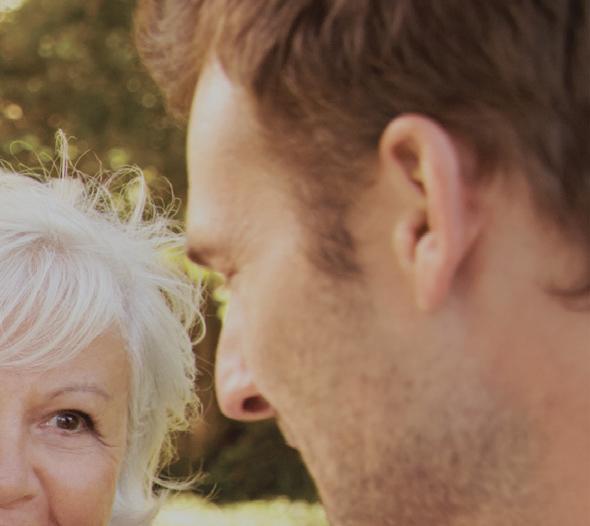




























Fosterers receive an allowance to cover the cost of caring for a child, usually between £137 and £240 a week but often more. The amount depends on location, the child’s age, your skills and experience, the type of placement and other factors.
It’s widely said that the fostering sector in the UK is in crisis; in 2022, OFSTED reported that one in eight foster families had le the sector, and the cost-of-living crisis is now making it di icult to recruit new ones. At any one time there are about 80,000 children requiring foster care in the UK, and as that number is not decreasing, pressure on the system is building.
It’s vital that these children receive proper foster care, because around 63 percent have a background of abuse or neglect, so the benefits of a steady family background in their formative years are essential.


Why do children need foster care in the first place? Sadly, the answer is o en that they have been abused or neglected by their birth family. Abuse may be physical, sexual, educational, emotional or medical, and in many cases may result in developmental problems meaning that they may have problems with reading, speaking or personal hygiene.





Fostered children may have experienced domestic violence, parental mental health issues or some other threat to their safety, health and wellbeing. In some cases this may have led to a requirement for an





emergency foster care placement. A court may have decided whether the child should remain in contact with their birth family.
A need for fostering may be temporary, brought about by a crisis such as bereavement, money troubles or homelessness leaving the young person at risk of harm. In some cases, a child’s parents may have died, and the foster parents can provide emotional support and facilitate contact between the child and their birth family, if this is within the child’s care plan.
Foster carers are needed for babies, children and young people including siblings. Most children coming into care are aged between 10 and 15 years old.
Local authorities in England, Scotland and Wales, and health and social care trusts in Northern Ireland, have the ultimate responsibility to look after children and young people in care as their “corporate parent”. Foster carers can either work for their local authority or for a local
independent fostering agency to provide foster care in their own home.
A fostering service can provide assessment, training and approval to look after fostered children by a fostering service. These childcare experts work as part of a team of professionals providing children with the highest standard of care. The levels of support offered by different fostering services can vary, so it’s worth researching what kind of support, training and funding is on offer.

To become a foster parent in the UK you need to be a UK resident or have indefinite leave to remain; you must also be at least 18 years old, though most foster service providers will require you to be at least 21; and you must be able to take care of a child or young person, often on a full-time basis. You do not need to own your home, but you will need to have a spare bedroom.
You may be able to foster while working full-time - that depends on the child’s needs and the fostering service you apply to - but
Parental or child illness or disability may also give rise to a requirement for fostering, and in cases where the child has special needs brought about by conditions such as foetal alcohol syndrome, ADHD or autism, it’s particularly important that the foster family is trained and supported to provide all the child’s needs. Find out more at www.nexusfostering.co.uk/foster-with-us/ types-of-fostering/disability
you do not have a statutory right to time off work to care for foster children.
Crucially, you must pass a fostering assessment to check that you’re able to care for a child.
The assessment process can take about six months, involving social workers, local authorities and the fostering agencey, but it’s important in safeguarding children and young people. The assessment is usually in two stages, firstly of your practical circumstances such as your living arrangements, health, other people in the family and some references; then more general questions about your ethnicity, languages, religion, employment, hobbies and interests, and useful skills and experience.
As part of the requirements for fostering you will need to be able to deal with local authorities, schools, health professionals and the child’s birth family, keep records and write reports about the foster child, attend training and meetings, and help the child manage their behaviour and feelings. ■
If you’re looking for a new challenge, an opportunity that’s both rewarding and life-changing then think about fostering. Use your own life experiences to help improve the futures of vulnerable children and young people in your area.
Children come into care for a variety of different reasons. This could be on a short-term arrangement due to a family problem or illness, or they may need more permanent care due to experience of physical or emotional abuse, neglect, and domestic violence. Whatever the reason, the child needs the care of a nurturing adult, a foster carer, and a safe place to call home. As more vulnerable children come into care each year, foster carers from all walks of life are needed to make a lasting difference. Foster care is pivotal in helping children and young people develop into independent, wellrounded adults.
Nexus Fostering believes all children and young people deserve a chance to live in a family setting. They support more than 350 foster carers right across England, who care for almost 500
There’s been a significant amount of research into the mental health and wellbeing benefits to be gained by helping others. Not only does helping others feel good but it can encourage us to be more active, more sociable, and more connected within our local community. But what if you could significantly improve the lives of those you are helping too?
children and young people. Established in 2002, their ethos is centred around providing unrivalled support and training for foster carers to create the very best positive outcomes for those in their care. Rated
‘Outstanding’ by Ofsted since 2011 their extensive team of social workers, specialists and clinicians are there to help you to excel in your role as a foster carer.


Fostering a child can be a rewarding and fulfilling experience for people with a passion for helping others and positively impacting a child’s life. In addition, it is an excellent opportunity to learn and grow as an individual. To be a good foster carer, you must be patient, enthusiastic and flexible in your approach. A sense of humour also helps! Fostering is ultimately rewarding but can be a challenge at times. A reliable support network of friends and family, as well as the comprehensive and ongoing support Nexus Fostering provides, is essential for dealing with and overcoming the challenges of looking after vulnerable children.

Across England, there are 57,540 children living with foster families.
31st March 2022/Gov.uk
You’ll

The more you do for others, the more you do for yourself.
mentalhealth.org.uk






be surprised how everyday life skills and experiences have already equipped you with transferable skills.Nexus Fostering
■ If you think you could make a difference to a young person’s life, we’d love to hear from you. No obligation and no pressure, it’s a simple process which starts with an initial call about what’s involved. Whether you’re an individual, a couple or family, you can train to be a foster carer and change your life and the lives of children near you
For more information call: 0800 389 0143 or visit us online at: nexusfostering.co.uk

Sharon is 58 and has been fostering for 15 years.
Q What made you want to foster?
A I love working with children and I thought it would be nice to help children by giving them a home where they can feel safe, loved cared for.
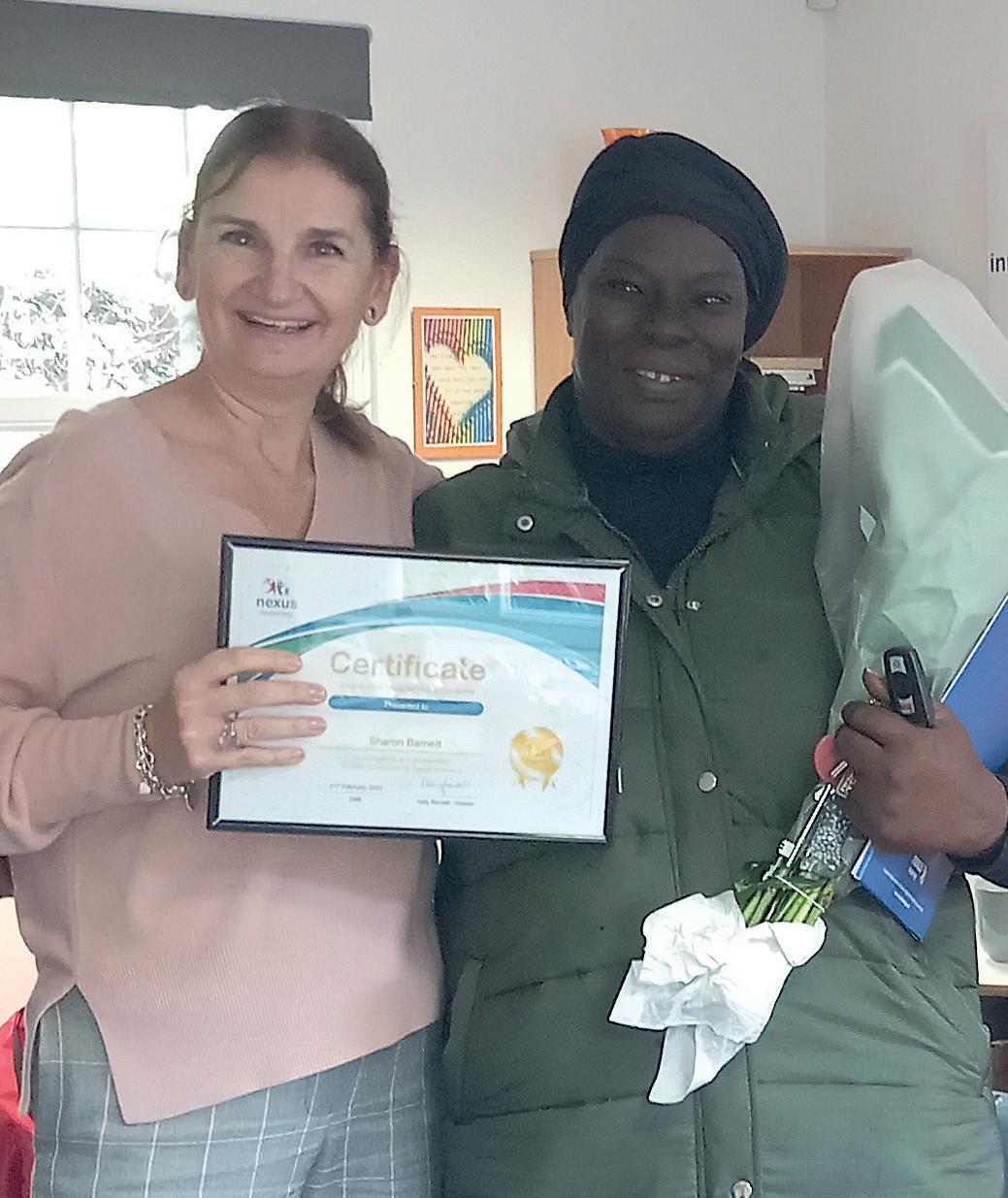
Q
Why did you choose Nexus?
The process was clear and training was great. I felt fully supported throughout my journey to becoming a foster carer.
A
Q What’s the most rewarding part of fostering? A

The ultimate reward is to have the child safely reunited with their parents after working jointly with both child and parent and social workers to achieve this aim. I am currently in regular contact with families that have been and still are reunited.
Q
What do you think makes a great foster carer?
Someone who can show unconditional love, be a good listener, and not judgemental. Be child focused, and open minded to learning new and different cultures.
A






Q What advice would you give to people thinking about becoming a foster carer?
A Give a child or young person a chance and a home. You can make a big difference in their life. It is not easy work but it can be very rewarding to see the positive growth and development of the child.
Left: Joanne Heathcote, Carer Recruitment and Engagement Lead Nexus Fostering. Right: Sharon. Sharon’s StoryNegative emotions and feelings can be a burden, affecting both mental and physical health, particularly in later life when we tend to reflect on the passing years – but what can be done to come to terms with these emotions and resolve them so we feel more centred and emotionally whole?
Research by charity Age UK attempted to answer the question: ‘What makes later life worth living?’ Using a rich data source, the Understanding Society survey, along with statistical analysis techniques, the charity produced the ‘Index of Wellbeing in Later Life’.
Perhaps unsurprisingly, the Index demonstrated that people with good social
networks, good health and good financial resources are more likely to enjoy high levels of wellbeing.
Overall, the research’s strongest message is the importance of maintaining ‘meaningful engagement’ with the world around us in later life. A number of things, from social, creative or physical activities to work or belonging to a community group, can contribute to this sense of meaningful engagement.

Most striking is the Index’s finding that creative and cultural participation is the single biggest factor in older people’s emotional wellbeing. Age UK concludes that for those with low emotional wellbeing, having something creative to do can really
Some people find it helpful to practice mindfulness, paying more attention to the present moment. This includes your thoughts and feelings, your body and the world around you. Mindfulness can help you enjoy life more and understand yourself better. It can positively change the way you feel about life and how you approach challenges. Find out more about mindfulness and coping with stresses and anxieties at www.nhs.uk/mental-health.
help. The terms ‘culture’ and ‘creativity’ are, of course, a bit vague - for the purposes of Age UK’s investigation, data collected in the Understanding Society survey on the number of ‘cultural activities’ each respondent had attended was used as an indicator for both terms. The research makes the critical distinction between simply ‘visiting’ or ‘attending’ a cultural event and actually ‘taking part’ in it. So what is the relationship between participation and wellbeing in later life?
Not unexpectedly, the investigation shows engagement in all activities is higher among people in the top 20 percent of the Index’s wellbeing spectrum. In other words, those who actively take part in cultural activities are more likely to benefit from them, emotionally. There is, therefore, a clear link between participation and wellbeing. ‘Creative and cultural participation is important to older people: we need to promote it, enable older people to access it, and increase the opportunities to take part,’ Age UK says.
Regardless of how small, goals can help you feel a sense of achievement and motivation. Your goals could be as minor as completing a crossword puzzle, doing some gardening or reading one chapter of a book. Planning activities and days out will also give you something to look forward to and keep you feeling positive.
your mood. Try to limit the amount of alcohol you consume and keep at least two days a week alcohol-free.
Lots of research highlights a clear link between physical activity and emotional wellbeing. Doing exercise releases endorphins, which can lift your mood and make you feel happy. Plus, you’ll do wonders for your physical health in the process.

Remember, it’s never too late to get active. Start small by going on short walks and keep intensity levels to a minimum. You can always build up slowly. Whatever you choose, something is always better than nothing.
Perhaps surprisingly, what we eat and drink can have a direct impact on our emotions. To promote emotional wellbeing, eat plenty of fresh fruit and vegetables - try not to fill up on sugary or fatty foods.
Many of us enjoy a drink every now and then, and it is tempting to think alcohol will make us feel better. But remember that alcohol is a depressant and can affect
Keeping yourself busy is key in nurturing and upholding your emotional wellbeing. If you don’t have any friends or family nearby, you might have a local social group you can attend. In many areas, you’ll find friendship centres, which organise regular activities and outings. Learning something new is also a stimulating mental exercise - many local organisations have classes specifically for older people—check your local library, University of the Third Age or local council for details.
You can also volunteer to use your experience to help others, which can be a doubly rewarding endeavour. ■
During lockdown, many people, particularly in older age-groups, may have felt emotionally as well as physically isolated. If you got out of the habit of going out and about during lockdown, now’s the time to make a change. If you have mobility issues, with the internet and abundance of communication technologies, there really is no excuse for losing touch with family and friends. There are plenty of assistive communications providers specialising in technology for the older user.














Anaturally occurring compound of sodium and chlorine, salt is highly soluble, which is why it is found in seawater, and it is widely used in food manufacture as a seasoning and a preservative.
In the home, salt is most o en found in the form of refined ‘table salt’, mined from underground and highly processed to remove impurities, and o en has added chemicals to prevent clumping. It also o en has iodine added to promote thyroid health.
An alternative found in the sort of households who shop in Waitrose is sea salt, manufactured by the evaporation of seawater and usually sold in crystalline form, without the additives, but otherwise nutritionally similar to table salt.
Eating too much salt has been linked to elevated blood pressure, which can lead to wider health problems like coronary heart disease. High blood pressure (hypertension) can also put you at higher risk of su ering a stroke.
Guidelines from the Food Standards Association (FSA) state that adults should consume no more than six grams of salt per day, approximately one teaspoon, but according to the Food Standards Association, the average adult in the UK consumes 8.1 grams per day. According to NHS Choices, as a nation, the UK consumes 183m kg of salt per year. This is equivalent to 240m standard 750g table salt containers or 18,000 double decker buses full of salt! So should we all be cutting down?

The World Health Organisation (WHO) recommends ‘a reduction in sodium intake to reduce blood pressure and risk
of cardiovascular disease, stroke and coronary heart disease’. So what’s the best way to go about this?



Most people are aware of the high salt content in certain foods like crisps and dry-roasted nuts. What can come as a surprise, however, are the high levels of salt lurking in other everyday items such as cereal and jarred sauces. In fact, the British Heart Foundation states that ‘around three quarters of the salt we eat has already been added to our food before we buy it’.
Salt and sodium shouldn’t be confused with one another. Some food labels may include the figures for both, while others may state the sodium content only. In order to discern the amount of salt from a sodium reading, multiply the amount by 2.5. For example, one gram of sodium per 100 grams is equal to 2.5 grams of salt per 100 grams.
An extra 10 percent of our daily intake derives from the salt we add to our meals for seasoning. The final 15 percent comes from foods in which it occurs naturally. Foods that are always high in salt include anchovies, bacon, cheese, olives, pickles, prawns, salami, smoked meats, soy sauce and stock cubes.
The British Dietetic Association gives the following tips to be ‘salt aware’;
Use little or no salt in cooking - use herbs and spices such as black pepper instead.
Leave the salt-shaker o the table.
Cut down on salty processed foods and ready meals.
Check out food labels for salt and go for lower salt choices.
Use the tra ic light labels on packaging to make smarter choices.


Switch salty snacks (crisps, biscuits) for fruit or veggie sticks
Ask in restaurants and takeaways for no added salt.
Be wary of gourmet salts and salt substitutes which will still add some salt to your diet.
According to www.bloodpressure.co.uk, salt makes your body retain water; this raises the pressure on your blood vessel walls. If you already have high blood pressure, too much salt will raise it further, and may mean that any blood pressure medicines you’re taking don’t work as well as they should.
Cutting down on salt is one of the simplest ways to lower your blood pressure, and will start to make a di erence very quickly, even within weeks. Eating too much salt can lead to all the health problems high blood pressure causes, including heart disease, stroke, kidney disease and some types of dementia. ■
When food shopping, always check the label of products before buying. Even seemingly healthy goods can contain high salt levels. Look at the figure for salt per 100 grams. High traces of salt are more than 1.5 grams per 100 grams - these may be colour-coded in red. Medium traces of salt will involve between 0.3 grams and 1.5 grams of salt per 100 grams - these should be colour-coded in amber. Low traces of salt will fall below 0.4 grams per 100 grams - these will colour-coded in green.
has been used in cooking since the first caveman said “this mammoth just needs a little something…”but should we be cutting down on it?












Instead of adding extra salt to each meal, try to improve the flavour with other seasonings like fresh herbs and spices. Garlic, paprika, parsley, sage and lemon all work to transform the flavour of a dish. Over time, your palate will become attuned to your low-salt lifestyle and you will crave less salty seasoning












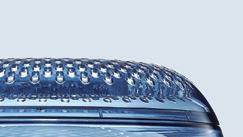






































































































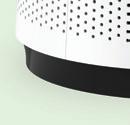




We all know that outdoor air pollution is a problem, but are you sufficiently aware of what you’re breathing at home?
We all know that outdoor air pollution is a problem, but the chances are you don’t worry too much about the quality of the air in your own home. Yet many of the things we do to make our homes more comfortable, such as decorating, burning candles and using air fresheners, can increase our personal exposure to pollutants, and contribute significantly to our collective national emissions. For the sake of our health and that of our family, this is something we can’t afford to ignore.
Air purifier specialist DH Lifelabs says: “Wellness starts with fresh air - studies show fresh air improves concentration and clarity, energy, digestion, healing, and even happiness.
“Conventional air purifiers only passively filter what they catch, so DH
Lifelabs has developed two unique technologies using disinfectant agents combined with filtration to pro-actively clean the air.
“Aaira generates a cleaning solution containing HOCl to clean the air, whereas Sciaire uses PlasmaShield™ generators to send positive and negative ions both out into the room, and into the filter to neutralize free-floating molecules, leaving behind clean, pristine air. These are available in a range of sizes from personal use to large rooms. See www.dhlifelabs.co.uk .”
If you’re elderly or you have a preexisting health condition, such as asthma, heart disease or chronic obstructive pulmonary disease (COPD), you’re particularly vulnerable to the effects of pollution. Children and young adults are also more at risk, because they have
faster breathing rates and their lungs are still developing.
Opening your windows regularly is the easiest way to remove polluting particles from the air in your living space, and it’s especially important to do this in winter, when humidity is high. But if you live near a busy road, keep the windows closed at peak traffic time, and if you suffer from hay fever, keep windows closed in the morning, when the pollen count is highest.

Cooking produces grease, smoke, smells and moisture. Switch on your kitchen extractor hood and fans during and after cooking to clear the air of oil and other ingredients that have evaporated into it. An extractor fan can be installed in any room where you want to control humidity, gas or smoke. In your bathroom it can
When looking for an air filter, look for one with a HEPA (High Efficiency Particulate Air) rating.
The Institute of Environmental Sciences and Technology dictates that a HEPA filter must trap 99.97% of particulates
0.3 microns or larger, such as dust, pollen, smoke, mould, pet dander and other allergens.

pull moist air out of the room, preventing health-threatening mould spores from growing, and can remove the after-effects of using toiletries and cleaning products.
Vacuum clean often to remove polluting particles, and if you can, replace carpets with easy-to-clean solid surfaces.
It’s particularly important to vacuum if you have pets, as pet dander can add to the air pollution in your home.

Dogs and cats naturally shed old hairsome twice yearly, some all the time. Also, pollen can attach itself to pet fur and be carried indoors, which isn’t ideal if you’re a hay fever sufferer. Keep your pet off your soft furniture and beds. Pet hair trodden into carpets can be hard to remove as it tangles in fibres.
If you smoke, more smoke gets released into the air - where others can breathe it in - than goes into your lungs. The NHS says
that second-hand smoke puts your family at risk from the same diseases as smokers, such as lung cancer and heart disease.
Children living in a smoky house also have a greater chance of developing asthma, breathing problems and other allergies. Cigarette smoke lingers in the air for hours and can spread from room to room - and opening a window or door won’t
banish the smoke, as it can blow back inside and stick to surfaces such as soft furnishings.
An air purifier with an HEPA filter could be particularly useful if you have allergies or respiratory problems, live near a major road or industrial facility, or if you are often exposed to second-hand smoke or odours that you have no control over. ■
Fit an extracting cooker hood, sometimes called a vented hood or ducted hood, rather than a recirculating one. Extracting hoods send the air out of your home through the wall or roof, while recirculating models filter the air through a carbon filter and recirculate it inside your kitchen. If you have a recirculating hood, make sure you clean and change the filter regularly.

Going abroad is exciting but challenging, particularly now that world travel is recovering from a pandemic-related slowdown - but there’s one aspect of travelling that none of us like, and that’s vaccinations. But they’re essential for your health, particularly if you’re travelling to certain destinations, so grit your teeth and get it done.
There are all sorts of issues surrounding travel vaccination, such as what do you need for each territory, how far in advance do you have to get them done and whether you have to pay for them. Let’s try to demystify it all.
Obviously if you’re going to Bognor, you won’t need anything. Indeed if you’re only travelling to countries in northern and
central Europe, North America or Australia, you’re unlikely to need any vaccinations. Anywhere more exotic in the way of foreign destinations, an appointment with a travel nurse is a good first step, as they will talk with you about your trip and the risks, and advise you on the vaccinations that are absolutely necessary and the vaccinations that are optional, depending on the kind of trip you are taking.
Some countries require proof that you have been vaccinated against certain diseases before entering the country, for example Saudi Arabia requires proof of vaccination for certain types of meningitis. Yellow fever vaccination must be documented on an International Certificate of Vaccination or Prophylaxis.
It may be that depending on the type
of traveling you are doing, you are more at risk of certain types of disease, for example, if you are travelling to rural areas, backpacking, camping, working as an aid worker or taking a long trip rather than a package holiday. You should make sure to inform the nurse or GP of any activities you may be undertaking on your trip as well.
You should try to book an appointment with a travel nurse or doctor at least eight weeks before you travel to ensure that the vaccinations are given enough time to work and become effective.
Some vaccines require several doses which means you need to make several appointments, meaning that it’s best to give yourself as much time as possible.
For general travel advice, including whether any coronavirus restrictions are in place, you can search by territory here: www.gov.uk/foreigntravel-advice
You can find out which vaccinations are necessary or recommended for the areas you’ll be visiting on these websites: travelhealthpro.org.uk/countries
www.fitfortravel.nhs.uk/ destinations
Your travel nurse or GP can advise you on which vaccinations you can get at the surgery and what vaccinations you need to get elsewhere. Your local GP practise will likely offer a few, but you can choose to visit a private travel clinic or a pharmacy which offers travel health care services.
Private travel clinics tend to offer more specialist advice as staff are likely specifically trained to advise on travel health care. This means they can give you
advice on other health conditions that you can manage on your trip, such as protecting yourself from malaria, and on any other medication that is tailored to activities you may be doing, such as altitude sickness tablets if you are doing high-altitude trekking.
Some travel vaccinations are available on the NHS and you can access through your local GP surgery. They include polio (given as a combined diphtheria/tetanus/polio jab), typhoid, hepatitis A and cholera. These vaccinations are free because they protect against diseases thought to represent the greatest risk to public health if they were brought back into the country.
Speak to a GP before having any vaccinations if you’re pregnant or think you may be, or you are breastfeeding. In many cases, it’s unlikely a vaccine given while you’re pregnant or breastfeeding will cause problems for the baby, but the GP will be able to give you further advice about this.
The vaccinations you have to pay for can be equally vital, though for less common conditions. For example, Hepatitis B is important if you are traveling to a highrisk country, or for people with existing conditions which makes them more vulnerable. If you are more at risk of contact with blood or body fluids (usually people who are involved in certain types of work such as nurses and doctors) it is important to make sure you have a hepatitis B vaccination.

Japanese encephalitis vaccination is advised for those traveling to Japan, as is meningitis vaccine for people traveling to places such as Saudi Arabia.
If you are traveling to a place where you will be in close contact with animals, your nurse or GP may advise a rabies vaccine. This takes place over a few sessions, which means you have to book them in advance to make sure that they become effective before you travel.
Yellow fever is also essential for travelling to parts of Africa, but is not available on the NHS, so you will have to go to a specialist clinic. ■
Do you struggle to find shoes, sandals, boots or slippers to fit? Wider and deeper than anything on the high street, Cosyfeet footwear is expertly crafted to fit and flatter extra wide or swollen feet.









Exercise in comfort with Cosyfeet’s Sport Active™ collection for men and women. Featuring a unique double density sole for maximum support, these on-trend trainer styles have been designed specifically with the older foot and body in mind. Through collaboration with the University of Exeter, Cosyfeet have created true performance sports trainers which

o er all the necessary stability and cushioning to enhance an active lifestyle, minimising the risk of injury, but without compromising on the special footwear characteristics required for extra-wide or vulnerable feet. For the unpredictable British weather try their CosyTex™ range. These waterproof styles for men and women are comfy and practical. Featuring shockabsorbing, cleated soles
for good grip underfoot. The water-repellent leathers are combined with their breathable, windproof and 100% waterproof CosyTex™ membrane to ensure feet stay fresh and dry. Recommended by healthcare professionals nationwide, Cosyfeet’s ethos is simple – they believe that swollen feet should have the most comfortable, stylish footwear possible. That’s why they combine
the latest trends with premium materials, expert shoemaking and advanced foot comfort technology. Cosyfeet o er a roomy, single width fitting which can be adjusted to fit a range of swelling, so you don’t have to worry about complicated foot measurements. Lots of thought goes into Cosyfeet’s designs, including minimal seams, easy openings and removable footbeds so you can
Wider, deeper & roomier than any footwear on the high street


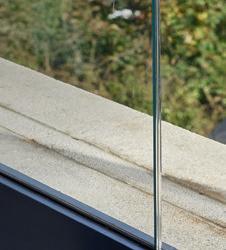



Very adjustable - suitable for a range of swelling & foot problems


Diabetic-friendly styles available


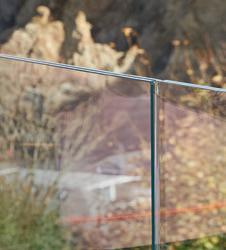


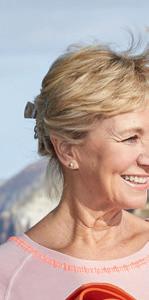

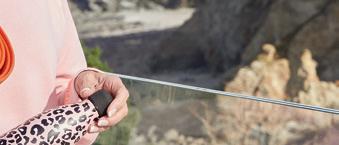


VAT relief is available




even wear your own orthotic. Thanks to innovations such as their ‘Hidden Depth’ design, Cosyfeet fits swollen feet with ease but still looks stylish and streamlined.




Cosyfeet o er VAT exemption if you have a chronic medical condition and a money-back guarantee if their footwear doesn’t work for you.


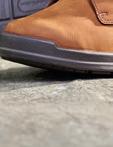
For more information visit cosyfeet.com or call Cosyfeet on 01458 447275.

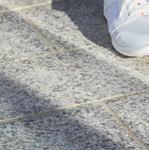






Walking is simple, free and one of the easiest ways to get more active exercise, lose weight and become healthier. Walking briskly can help you to build stamina, can burn excess calories and make your heart and circulatory system healthier.

According to NHS guidelines, you do not have to walk for hours to get something from it - a brisk 10-minute daily walk has lots of health benefits, and counts towards the 150 minutes of weekly exercise which is recommended for adults aged 19 to 64.
A brisk walk would be at about three miles an hour, which is faster than a stroll - at brisk walk you should be able to talk comfortably, but not sing!
Though for brisk walking, some people like the help of walking poles, you don’t really need any special equipment to benefit
from walking - for instance if you’re walking to work, you could wear your usual work clothes with a comfortable pair of walking shoes, and change to formal shoes when you get to work. For longer walks in warm weather, you may want to take water, healthy snacks, a spare top, sunscreen and a sun hat in a backpack. For cold weather and more challenging routes, invest in a waterproof jacket and hiking boots.

Try to vary your routes to maintain interest. Investigate parks, heritage trails, canal towpaths, riverside paths, commons, woodlands, heaths and nature reserves. Join a walking group, which will improve your health and add a social element.
If you find it difficult to walk long distances, for instance if you have joint pain, build up distance gradually, or try swimming classes as an alternative.
There’s an NHS app, Active 10, which tells you when you’re walking fast enough and suggests ways to fit in some more brisk walking. ■
During activity, it’s important to wear appropriate footwear to avoid injury, this is increasingly important the older we get. Cosyfeet have collaborated with the University of Exeter to develop their Sport Active™ range, a collection of performance sports shoes designed specifically with the older foot and body in mind, and in their unique extra-roomy fittings for men and women. These styles feature flexible, breathable mesh uppers to help keep feet dry and comfortable. The addition of a double density sole ensures perfect underfoot cushioning and enhanced grip. Available in a choice of lace-up or touch-fastening strap, both options are easily adjusted for a secure and comfortable fit. Find out more at Cosyfeet.com/sport-active
Walking is the one exercise that doesn’t cost anything, and requires no special equipment - except a comfortable pair of shoes!

The O ice for National Statistics has ended its publication of infection statistics for coronavirus in mid-March. In the last published weekly figures, referring to the number of current COVID-19 infections within private households (this excludes those in hospitals, care homes, or other communal establishments), in England, the trend was uncertain, with 1,333,400 testing positive, equating to 2.38% of the population or around 1 in 40 people. In Wales, the trend was also uncertain with 66,200 or 1 in 45 testing positive. The result was also uncertain in Northern Ireland, with 24,700 or 1 in 75 testing positive. There was an increase in Scotland, with 128,400 or 1 in 40 people testing positive. The percentage of people testing positive for COVID-19 increased in those aged 70 years and over, decreased in those aged School Year 7 to school Year 11 and those aged 50 to 69 years, and was uncertain in all other age groups.

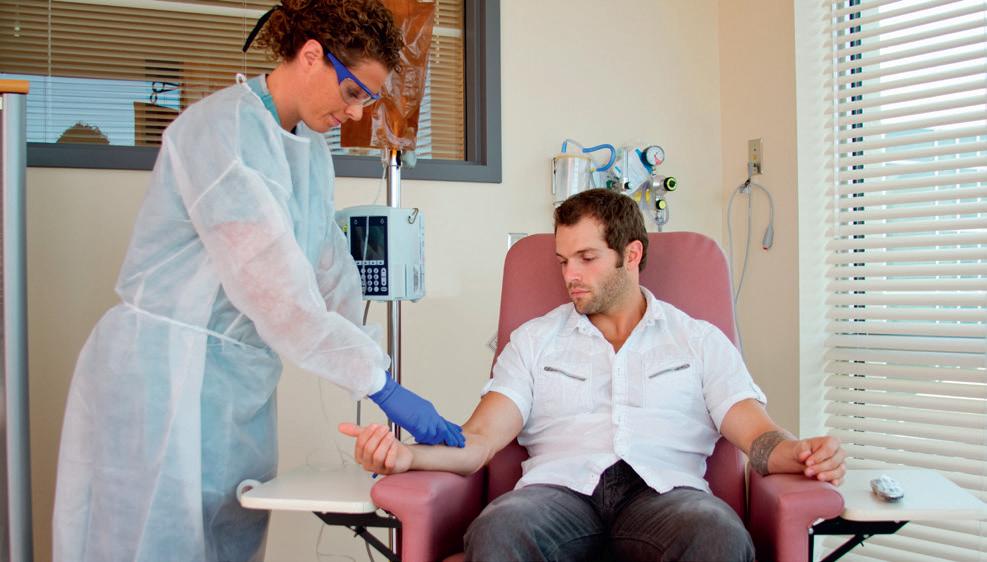















Thousands of people will soon be able to be prescribed a drug, semaglutide, to help them lose weight as part of their treatment in an NHS specialist weight management service. The drug, sold under the trade name Wegovy, has been promoted by Hollywood stars. It can help people using it to reduce their weight by suppressing appetite, though reports suggest that they tend to put the weight back on when they stop using the drug. NICE, the National Institute for Health and Care Excellence, says that use of the drug can promote weight loss of 10 per cent when used with support of a multidisciplinary team. These professionals are experts on coaching people on lifestyle interventions and will also monitor the drug’s potential side-e ects.

A blood test which detects traces of cancer cells could spare thousands of patients from unnecessary chemotherapy. A major bowel cancer trial on 1,600 patients is examining whether the test can show if surgery has removed all of the tumour. Half of patients with stage 3 bowel cancer are cured by surgery alone, so using chemotherapy after surgery is over-treatment which can have side-e ects including tingling and numbness in the hands and feet. The hope is that this test could spare many cancer patients unnecessary chemotherapy. A study in 455 bowel cancer patients in the US found that by using the blood tests to guide treatment, the number of patients needing post-surgery chemotherapy was nearly halved without the risk of relapse.

Breakthroughs in medical technology are bringing remarkable improvements in health outcomes every day. Here are some of the most exciting developments
AxisBiotix-Ps is a blend of 4 billion live bacteria, which have been selected to reduce psoriasis symptoms by addressing the high levels of pro-inflammatory immune chemicals, Interleukin-17 and Interleukin-23. Their supplement aims to reduce redness, itchiness, dryness, and flaky skin.
https://axisbiotix.com
Bimuno® Original, is an awardwinning prebiotic proven to feed good bacteria in the gut connected with digestive health, immunity and mental wellbeing, within seven days of routine use. Gluten-free and taste-free, the convenient sachet powder can be added to any food or drink. The prebiotic ingredient is the most studied of its kind, backed by over 100 scientific studies. www.bimuno.com

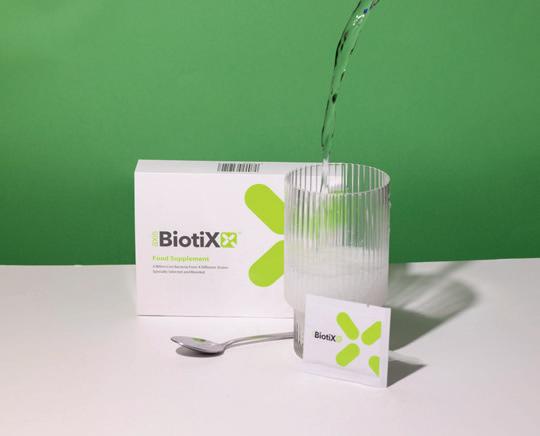
Eropid contains 50mg of sildenafil that treats erectile dysfunction (ED) in men aged 18 years and over. Sildenafil is a well-established drug that helps patients to fully engage in sexual intercourse and regain their self-esteem, self-confidence and relationship satisfaction.

www.strandhavengroup.com
The Sciaire Mini + HEPA Air Purifier, with plasma ion technology actively works to neutralize 99.95% of bacteria, viruses and allergens in the air. Its 3-stage filtration system captures airborne particles as small as 0.1 microns. The Sciaire Mini + HEPA features an air quality indicator, auto mode, and quiet operation. Designed to provide clean and fresh air for small/medium rooms.
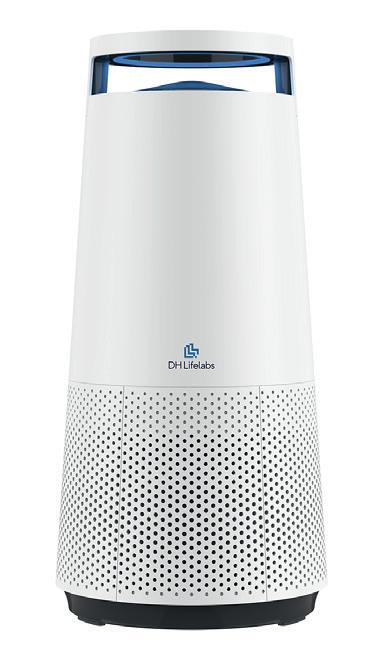
https://dhlifelabs.co.uk
Medisculpt is a medicallymonitored, holistic, safe and e cient weight-loss program. It involves a high protein, low carbohydrate diet along with body contouring treatments.
On average, participants lose approximately one stone per month and feel great while doing it. www.gandmhealthcare.co.uk

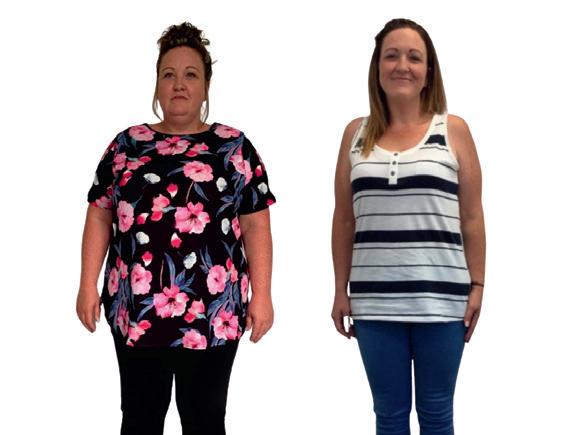
Watermans’ Grow Me Shampoo contains a unique blend of natural ingredients that help combat hair problems. Key ingredients include biotin, rosemary, ca eine, niacinamide, argan oil, allantoin, and lupin protein. The shampoo cleanses your scalp, improves hair thickness, and reduces hair loss due to breakage. Watermans has won multiple awards, including the prestigious Queen’s Award for Enterprise and International trade, making Watermans one of the UK’s leading haircare businesses. For individuals silently su ering from hair problems, this shampoo provides a solution for healthy, strong, and beautiful hair. Find Watermans at Amazon, or Boots stores.
www.WatermansHair.com

Exciting research at the University of Tel Aviv has shown that regular sessions in a Hyperbaric Oxygen Chamber can extend the length of telomires, which are the sections of DNA found at the ends of Chromosomes. Research suggests telomire shortening is a key part of the process of ageing. It may be that through regular use, Hyperbaric Oxygen Therapy really does reverse the process of aging which is a tantalising prospect.
However, at Oxify, we believe that the real benefit of our Hyperbaric Oxygen Therapy is not simply to live longer but to live better and happier by providing remediation to a huge range of intractable and debilitating ailments.
Research shows, and we have seen in our own centres, miraculous improvement for people suffering from:
• Persistent wounds
• Dementia
• Long Covid and Chronic Fatigue Syndrome











It also helps to mitigate the side effects of chemotherapy and aids in the recovery of sports injury, as well as enhancing sports performance.







“In March 2022 I was in a
















benefits from each session.
“I had been suffering with long covid fatigue and brain fog for over a year and thought I would give HBOT a try. My brain fog and fatigue have both improved massively. I’m now carrying out a phased return to work and I’m also more active. The staff are so friendly and professional that any nerves I felt in my first appointment were soon gone. I would definitely recommend

 Isla
Isla
something to help with my Topical Steroid Withdrawl. I decided to give Oxify a try instead of more medication. Sarah offered me 10 seassions in a 2 week period with a full refund if I didn’t see any benefit. She made me feel really comfortable right from the start. After session eight, I was amazed! I could clearly see and feel the difference
“I booked 10 sessions at Oxify after my taster session, the benefits have been massive so far. I came in for long covid symptoms including the loss of my taste and smell. Even after the first few sessions I could feel the difference, my taste is coming back and I can smell the air outside which I haven’t been able to do in almost a year. The therapy is amazing a real hidden gem, the people at Oxify are all fantastic and really put you at ease. I go in and surf my phone for an hour, I come out feeling loads better. If you are thinking of trying it I would definitely say
SophieAt Oxify we offer a unique guarantee...
pictures! I am now bandage free for the first time in 8 months and I don’t have to wear gloves anymore, having needed to wear them for over 2 years!! I’m extremely grateful for finding Oxify and would recommend their services to anyone struggling with a
If, after ten sessions taken over two weeks, you don’t feel the benefit of our Therapy, we will refund the cost of your sessions in full.
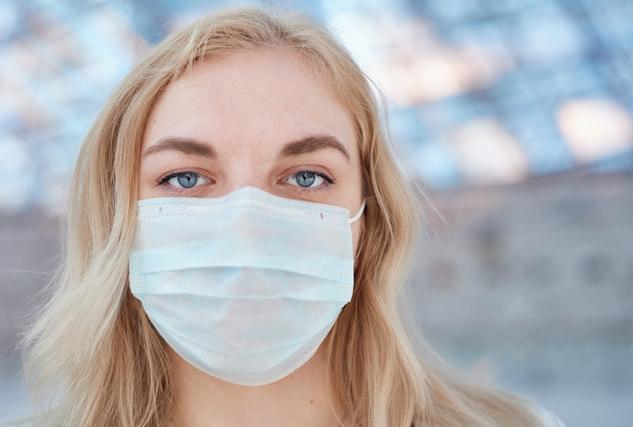
Alongside what is regarded as conventional medicine, there’s increased interest in complementary and alternative practices which might offer some advantages, such as being less invasive, treating conditions which conventional medicine hasn’t acknowledged, or offering better value for money to the NHS. Some of these practices, such as homeopathy, are long established but very controversial; others are relatively new and still being evaluated. Some take the approach that community health is better treated without requiring medicine at all.
Cryotherapy, low-temperature treatment, is well established in treating some conditions such as basal cell skin cancers.
Doctors put liquid nitrogen onto the area of cancer to freeze and kill it. For cancers inside the body, such as cervical, kidney or lung cancer, the doctor uses a cryoprobe. Cryotherapy has also been trialled for prostate cancer.
Less well established is Whole Body Cryotherapy (WBC), where the subject is put in a cryogenic chamber at temperatures between −110°C and −140°C.
Whole body cryotherapy is said to stimulate the body’s natural healing abilities, using extreme cold to induce responses from the circulatory and nervous systems. There are several clinical studies of WBC focussed on treatment of pain and inflammation from sports injuries, fibromyalgia, rheumatoid arthritis, multiple sclerosis and skin conditions like psoriasis and dermatitis.

Hyberbaric Oxygen Therapy involves breathing almost pure oxygen under high pressure in a special room or small chamber. It was developed to treat divingrelated conditions, but is now also used to promote healing and tissue regeneration, such as in sports injuries. It’s also being promoted as a treatment for ‘long COVID’ and other conditions. See the following feature for more detail.
Reiki, also known as Usui or therapeutic touch, is a form of complementary therapy based on ‘energy healing’. Reiki aims to relax you, ease stress and tension and help with wellbeing.
Developed by Mikao Usui in Japan in the early 20th century, it is the basis of many
Eastern medicine systems working with the energy they believe flows through all living things and is vital to wellbeing. This energy is known as ‘Ki’ in Japan, ‘Chi’ in China and ‘prana’ in India. A reiki practitioner puts their hands on or near your clothed body to change and balance the ‘energy fields’ in and around your body. Reiki is sometimes used in palliative care, especially in hospices, though there’s no suggestion that it can treat or cure conditions such as cancer.
Social prescribing, sometimes known as community referral, is not so much an alternative therapy, more a new approach to meeting the practical, social and emotional needs that affect community health and wellbeing.
Schemes delivering social prescribing can involve a range of activities that are typically provided by voluntary and community sector organisations. Examples include volunteering, arts activities, group learning, gardening, befriending, cookery, healthy eating advice and a range of sports.
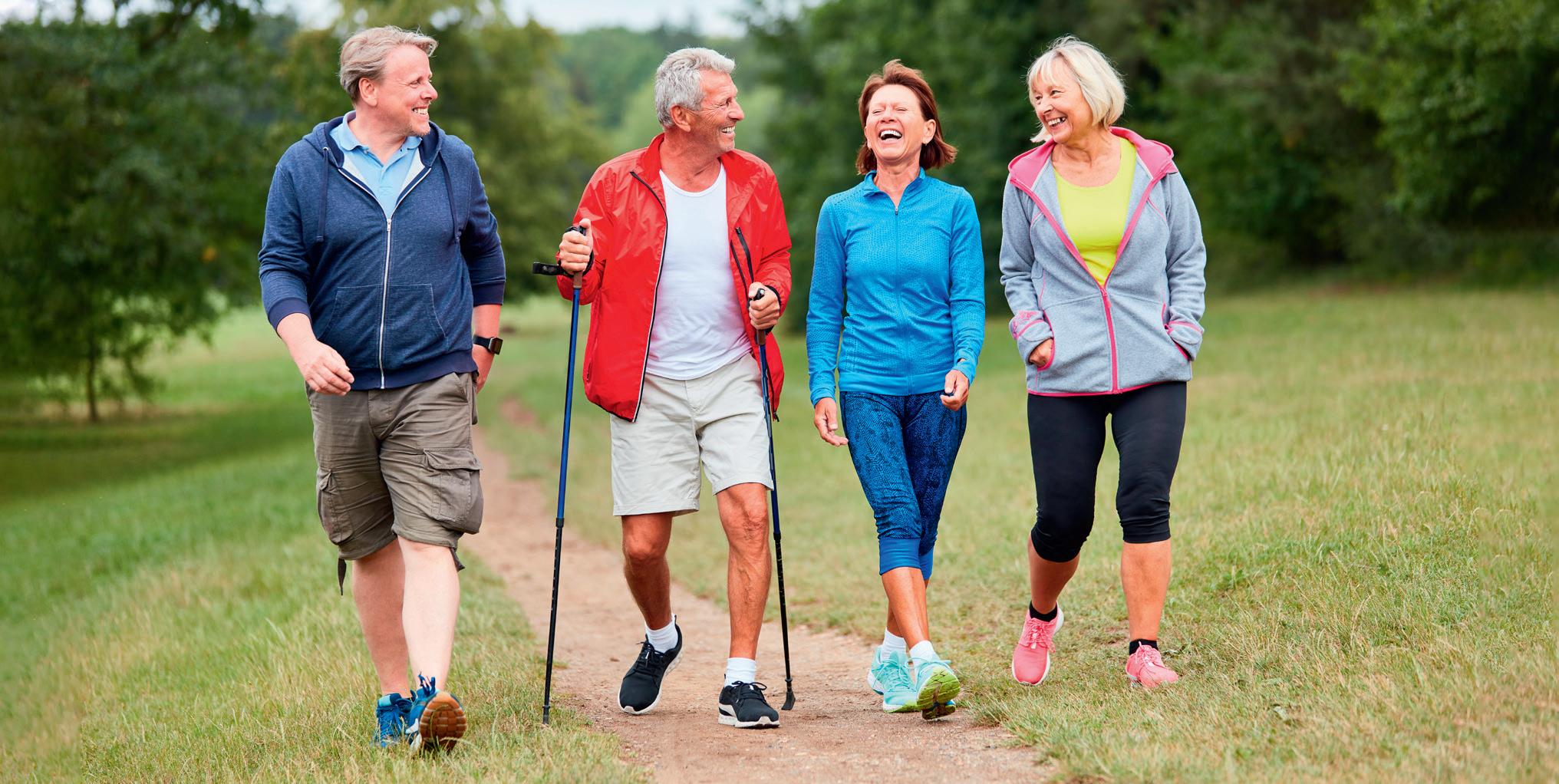
Social prescribing is designed to support people with a wide range of social, emotional or practical needs, and many schemes are focused on improving mental health and physical wellbeing.
In the NHS Long Term Plan, NHS England committed to building the infrastructure for social prescribing in primary care and embed social prescribing and communitybased approaches across the NHS.
In social prescribing, local agencies such as local charities, social care and health services refer people to a social prescribing link worker. Social prescribing link workers give people time, focusing on ‘what matters to me?’ to coproduce a simple personalised care and support plan, and support people to take control of their health and wellbeing.
Social prescribing link workers also support existing community groups to be accessible and sustainable, and help people to start new groups, working collaboratively with local partners.
Social prescribing is an all-age, whole population approach that works particularly well for people who:
h Have one or more long term conditions
h Need support with low level mental health issues
h Are lonely or isolated
h Have complex social needs which affect their wellbeing.
Everyone in England should be able to access a social prescribing service through their GP practice, with a goal that at least
900,000 people will be referred to social prescribing by 2023/24.
The NHS England social prescribing team works closely with national partners including the Department of Health and Social Care (DHSC), Department of Culture, Media and Sport (DCMS) and the National Academy of Social Prescribing (NASP).
NASP is an organisation dedicated to advancing social prescribing through championing social prescribing and the work of local communities in connecting people for wellbeing, and work to create partnerships cross-sector at a local and national level to achieve this. ■
A three-month follow-up of a social prescribing programme in Shropshire between 2017 and 2019 found that people reported statistically significant improvements in measures of wellbeing, patient activation and loneliness, with GP consultations among participants down 40 per cent compared to a control group.
It all looks a bit like something out of a science fiction movie, but treatment in a hyperbaric oxygen therapy chamber is increasingly being investigated as an aid to wellness as well as an emergency medical treatment.
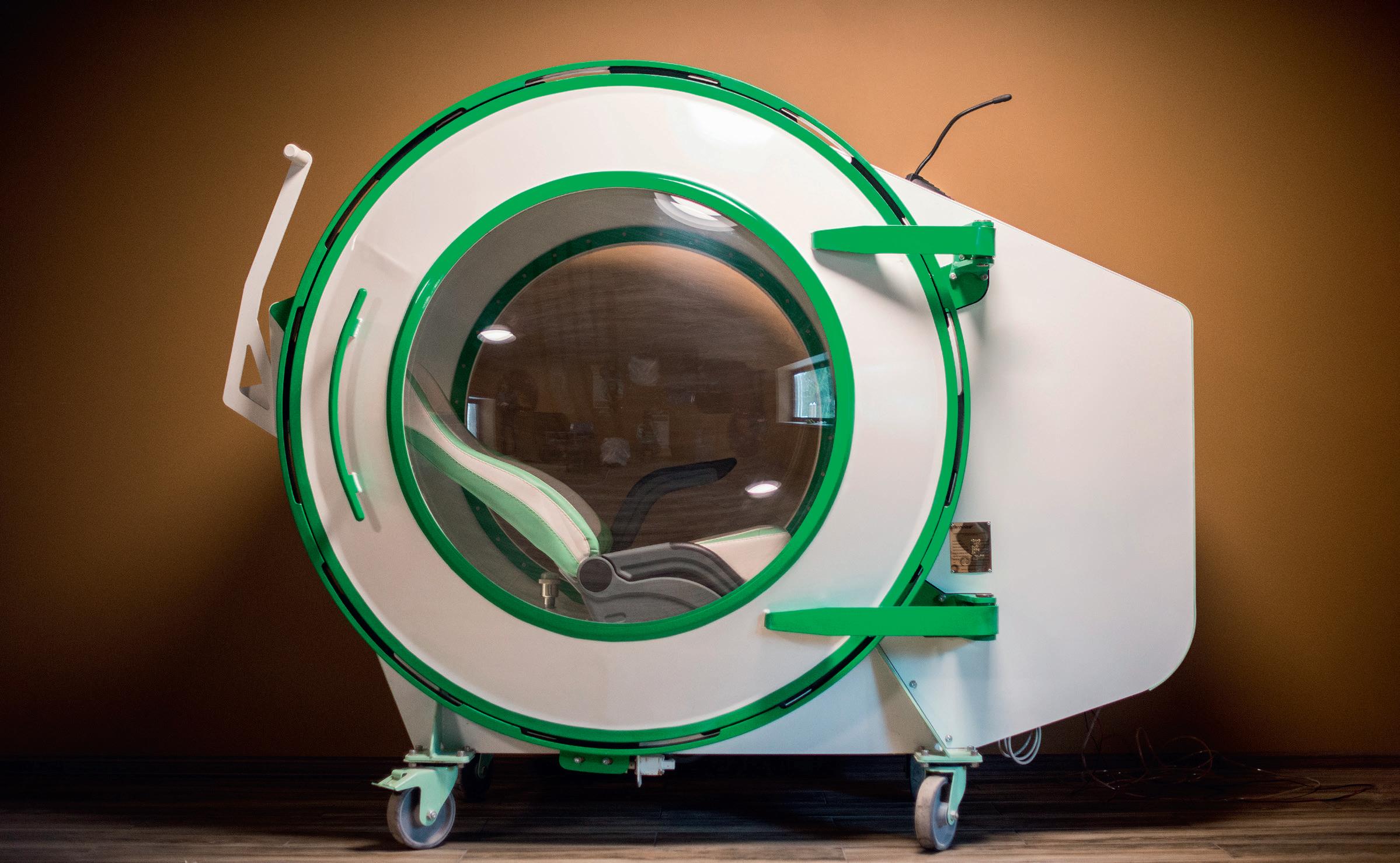
In Hyperbaric (high-pressure) Oxygen Therapy (HbOT), pure oxygen is introduced into the body at high pressure to aid the natural healing process. It’s commonly being used now by athletes to speed up healing after sports injuries, but may have many other applications.
Michael Todd of Oxify Ltd (www.oxify.co.uk) says: “I read an article about research at the University of Tel Aviv which had shown that breathing oxygen within a raised pressure environment made cells 25 years younger. The ‘telomere marker’ associated with every cell frays and shortens with every replication, until
the cell becomes almost a ‘Zombie’ cell, neither dead or able to replicate. Buildup of senescent cells contributes to the ageing process.
“In the research, HbOT therapy was found to lengthen and repair the telomeres as well as clearing senescent cells. I was so intrigued by what I read that I spent a lot of time finding out more. HbOT benefits people suffering from a wide range of afflictions, as well as increasing sporting prowess and accelerating injury repair.
“With my daughter, Sarah, we formed a new business, Oxify, with the express aim to bring the benefits of HbOT to as many people as we can. We now have three centres with our fourth opening shortly.
“In our own centres we have seen dramatic transformations, with many people suffering from the debilitating effects of Long Covid, Chronic Fatigue
Syndrome, sports injuries diabetic wounds, skin conditions and gangrene, Multiple Sclerosis, Parkinson’s Disease, Speech Apraxia, Arthritis and Dementia, experiencing life-changing improvements. We offer a taster session for just £10 to see what the excitement is about!”
HbOT was developed as an emergency medical procedure for when deepsea divers developed ‘the bends’, decompression sickness caused by dissolved gasses in the blood emerging from solution. Since the 1900s this condition has been treated in a recompression chamber.
Apart from solving the decompression problem, it was theorised that highpressure oxygen treatment could treat some illnesses at a cellular or tissue level.
In cases such as circulatory problems, nonhealing wounds, and strokes, adequate oxygen cannot reach the damaged area and the body’s healing process is unable to function properly. Hyperbaric oxygen therapy increases oxygen transport in the blood to alleviate this.
The original hyperbaric chambers, operating at pressures up to six atmospheres, can look like something out of Alien, glass cylinders hooked up to all sorts of pumps and monitors; but models designed for health applications, or for more than one person, operate at lower pressures, of up to three atmospheres, so can be designed to look more friendly.
The air we typically breathe contains about 21% oxygen. Inside a hyperbaric chamber, the atmosphere is 95-100% pure oxygen (and yes, it is highly explosive, so don’t light a match). A ‘hard shell’ lyingdown chamber might offer a pressure of 1.6 atmospheres, suitable for patients who prefer to rest and relax during the therapy (which can be an hour long), while a ‘soft shell’ chamber is a seated design offering a lower pressure of 1.3 atmospheres. The advantage of a ‘soft-shell’ chamber
is that it is wheelchair accessible and spacious enough for parents to accompany their child.
In a hyperbaric treatment, air pressure inside the chamber is increased to two to three times normal atmospheric pressure, allowing your body to absorb more oxygen into the plasma and encouraging the growth of healthy new tissue.

HbOT is typically suggested for:
h Crush injuries where tissue is deprived of oxygen
h Carbon monoxide and cyanide poisoning
h Severe anaemia
h Wounds and soft tissue infections such as diabetic foot ulcers and necrosis
h Radiation injury (damage to tissue exposed to radiation)
h Problems with blood flow
h Burns or compromised skin grafts
h Antibiotic resistant infections
h Hypoxia and hypoxemia which involve loss of oxygen in the blood or tissues
Increased oxygenation promotes
HBOT is being suggested as a treatment for ‘long COVID’, the post-infection symptoms of COVID-19 which can include loss of taste and/ or smell, problems sleeping, irregular heart rate, digestion problems, anxiety, breathing difficulties, joint pain, chest pain, fatigue, and so-called ‘brain fog’, inability to concentrate and impaired memory.
angiogenesis, the growth of new blood vessels, in turn supporting healthy tissue growth. This is particularly beneficial in conditions such as diabetic ulcers. It’s also suggested to treat reperfusion injury, damage that takes place once blood flow returns to tissue that has been oxygen-deprived.
Though it’s usually available only privately, you can ask your GP whether HbOT might be of benefit to you. ■







The coronavirus pandemic which gripped the world for almost two years seems to be overcertainly the O ice for National Statistics is no longer publishing weekly reports on infection levels, the NHS Covid app was scheduled to close on April 27th, and the respiratory disease isn’t making headlines as the news agenda has moved on. But Covid-19 has by no means gone away.
As experts predicted, while it’s been di icult to eliminate the disease, it has become easier to live with it, with wider vaccination, better treatment and improved preparedness meaning that widespread social measures such as wearing of masks and restrictions on gatherings are no longer deemed necessary.
But coronavirus still presents a risk, particularly to those with underlying respiratory health conditions or those

whose immune systems are compromised.
From April 1st (no joke), the NHS kicked o the next phase of its worldrenowned Covid vaccination programme with a Spring push to protect the most vulnerable, starting in care homes. Around five million people in total will be eligible for a spring Covid jab, including over 75s, those with a weakened immune system and older adult care home residents. Those living in care homes will be prioritised and began to receive vaccinations from Monday 3rd April as roving NHS teams visited homes to o er protection. Others eligible were able to book in on the National Booking Service or NHS App from 5th April, for the first appointments available week commencing Monday 17th April.
For the first time millions were sent their initial invitations through the NHS App,
where they could also book, as the NHS continued to expand its technological capabilities. Text messages and letters will also be sent to those without the app or not actively using it.
The NHS, now in its 75th year, has administered more than 144.5 million Covid jabs over several vaccination campaigns, since Maggie Keenan became the first in the world outside of a clinical trial to receive the vaccination in December 2020.
Speaking in April, NHS Director of Vaccinations and Screening, Steve Russell, said: “As a society we are learning to live with Covid but for many it is still a virus that can cause serious illness and hospitalisation, and so it is still really important that those at greatest risk come forward and boost their protection in the coming weeks.
“There are still around 8,000 people in hospital with Covid according to the latest
data, and the NHS has now treated more than one million Covid inpatients since the pandemic began.
“So if you are over 75 or you have a weakened immune system, please come forward as soon as possible to book a Covid vaccine this spring so you can enjoy summer with peace of mind.”
Steve Barclay, Secretary of State for Health and Social Care, said: “Our successful vaccination programme has helped us all to live with Covid, saved thousands of lives and protected the most vulnerable from serious disease.
“We’re committed to giving vulnerable people the protection they need from the virus, so I want to encourage those who are 75 or over or who have a weakened immune system to book their booster jab.
“It’s quick and easy and will give the protection you need for the months ahead.”
Dr Mary Ramsay, Director of Immunisation at the UK Health Security Agency, said:
“Covid-19 is still circulating widely, and older people are still at greatest risk of more severe illness and being hospitalised.
“Those with weakened immune systems are also vulnerable so it is important everyone who is eligible comes forward for a spring booster to top up their immunity against what is still a serious virus.”
This latest vaccination is being offered to those considered most at risk, following advice from the Joint Committee of Vaccination and Immunisation.
Those invited should make sure their appointment takes place at least three months since their last dose.
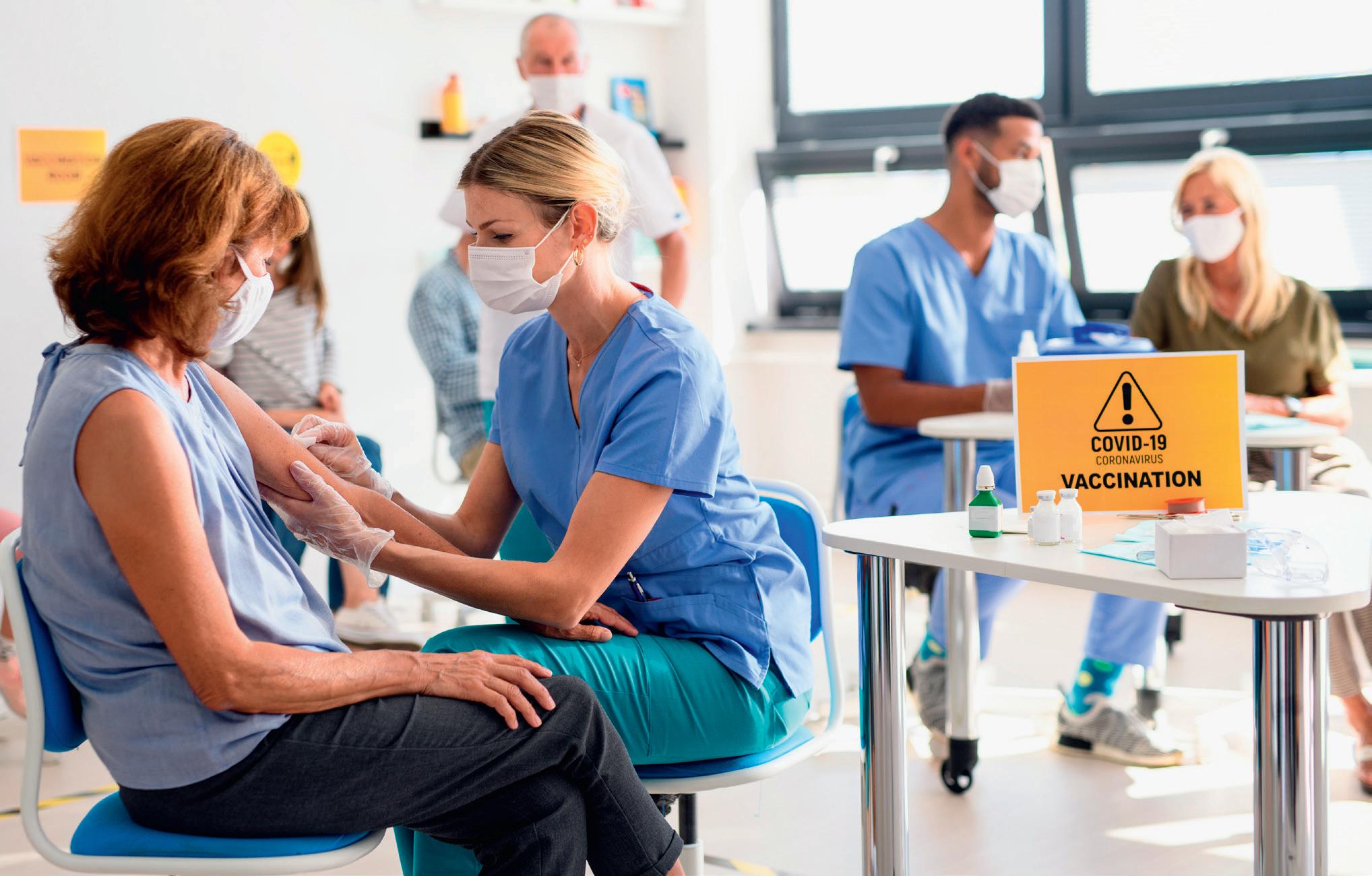
Anyone who believes they should be eligible for a vaccine but does not get invited can check online. Alternatively, they can self-declare via the National Booking Service and then speak to a clinician on site.
The last spring vaccination appointments will be offered on 30th June. Covid-19 vaccinations for everyone who was aged five on or before 31st August
2022 will also end after that date, following recent advice from the JCVI. After 30th June, the NHS offer will become more targeted to those at increased risk, usually during seasonal campaigns.
There will be around 3,000 vaccination sites across England, with the majority of appointments being delivered in communities by pharmacies and GPs. ■
In Japan, almost 1.5 million people of working age are living as social recluses, or hikikomori, a fifth saying their predicament had been triggered by changes in lifestyle imposed during the Covid-19 pandemic. Hikikomori, people who withdraw from society, spending all or almost all of their time isolated at home, account for around two percent of people aged 15-62 in Japan, a survey found.
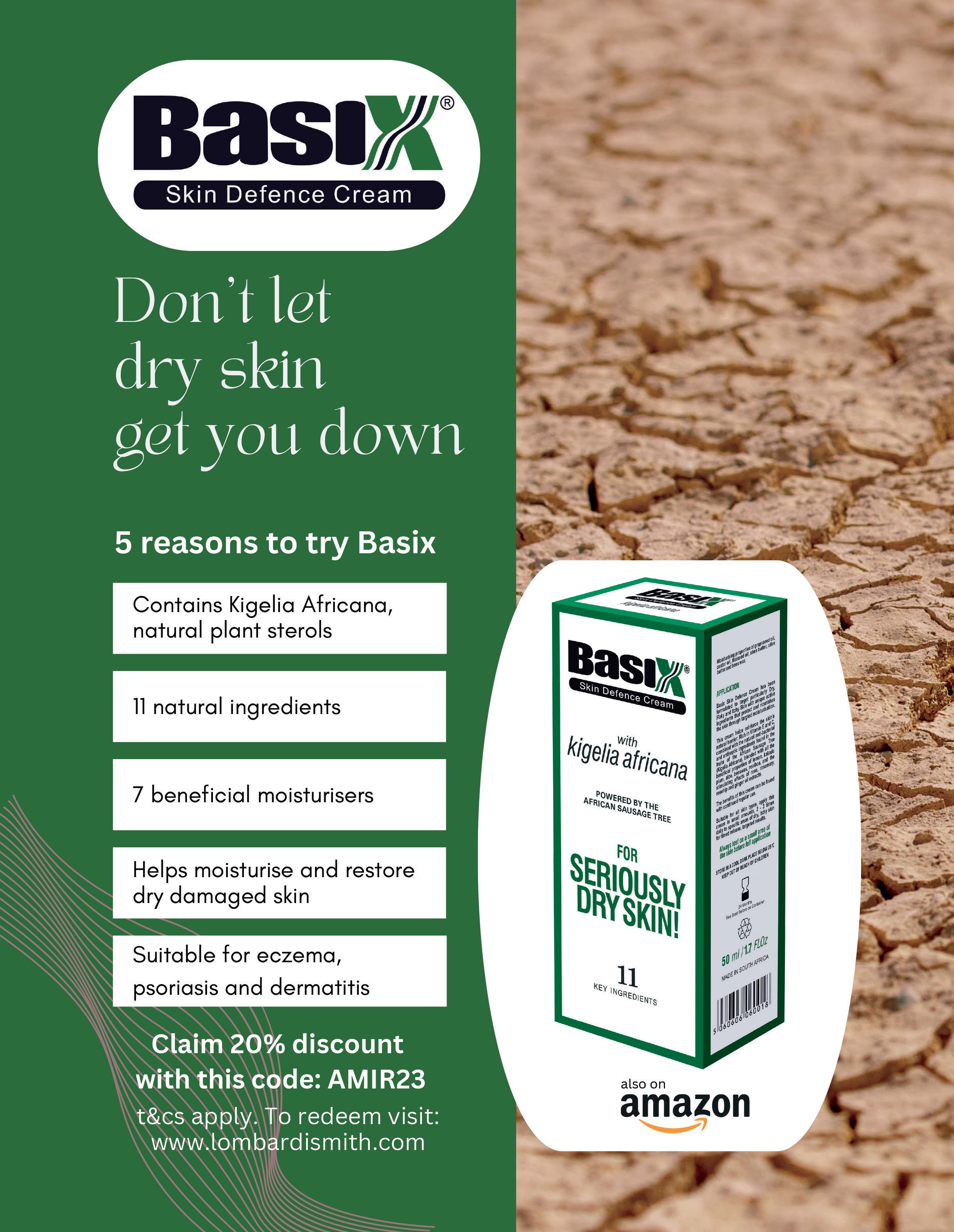
There are several common forms of skin problems such as psoriasis, dermatitis and eczema. Plaque psoriasis is the most common type of psoriasis, while atopic dermatitis is the most common type of eczema. Contact dermatitis is a type of eczema triggered by contact with a particular substance, so if you can successfully avoid the irritants or allergens that trigger your symptoms, your skin will eventually clear up.
Psoriasis affects around 2 in 100 people in the UK. It can start at any age, but most often develops in adults between 20 and 30 years old and between 50 and 60 years old.
With atopic eczema, some people experience small patches of dry skin, others inflamed skin all over the body. It most often affects the hands, insides of the elbows, backs of the knees and the face and scalp in children, and often has periods when symptoms are less noticeable, as well as periods when symptoms become more severe (flare-ups).
Your GP will be able to diagnose atopic eczema by examination and finding out whether you have a history of atopic eczema in your family, and any other conditions, such as allergies or asthma. Something aspects of diet or lifestyle may contribute to symptoms.
The exact cause of atopic eczema is unknown, though it seems to have a genetic aspect and be related to allergies. It can often be triggered by factors such as chemicals in soaps or detergents, food allergies, stress or the weather.
Though there’s no permanent cure, treatment for atopic eczema using antiinflammatory and anti-itching creams can help to relieve the symptoms. Regular use of moisturisers (emollients) can help, as can topical corticosteroids. ■

Basix Skin Defence with Kigelia Africana is a herbal cream that targets seriously dry skin, soothing eczema and psoriasis.
Kigelia Africana, a key ingredient, comes from the fruit of the African Sausage Tree. Used by African doctors for decades, scientists recently confirmed this fruit contains natural plant steroids - sitosterol and stigmasterol, giving it natural medicinal properties, especially suitable for people prone to eczema, psoriasis and dermatitis, but without the harmful side effects of prescription-based steroidal creams. There are 11 natural ingredients including Kakadu Plum, Lemon, Aloe Vera, Ginger, Rose Oil, Rose Hip, Rosemary, Green Tea, Rooibos and Vitamin E.
https://lombardismith.com
Nearly three million people around the world are affected by Multiple Sclerosis, a disease of the central nervous system which can have devastating effects. But it’s never been clear what causes MS, and there has been no effective treatment. Now researchers think they have an exciting clue as to the cause and possible prevention of MS.
MS affects the neurons, the cells of the nervous system which transmit impulses controlling everything from movement to thoughts and emotions. MS causes the immune system to work against the neurons, attacking the protective sheath of myelin and disrupting the messages being transmitted from and to the brain, causing them to slow down, become distorted or not get through at all.
Depending on which part of the brain or spinal cord is affected, MS can lead to numbness, blurred vision, difficulty walking, slurred speech and problems with memory or emotions.

What causes this immune system disorder has been the subject of intense research, and scientists now think that evidence points towards the EpsteinBarr virus.
EBV is a member of the Herpes virus family, and is extremely common - in fact most of us will contract it at some stage in our lives. In America it’s known as ‘mono’, or mononucleosis, the ‘kissing disease’ which commonly spreads through teenage contacts. In the UK, it’s more often known as glandular fever. Though EBV has been suspected of being connected with MS for some time, it’s so common, and MS so relatively rare, that it has been difficult to connect the two definitively.
Crucial evidence came from a Harvard University study of blood samples taken from soldiers every two years and stored in the freezers of the Department of Defense Serum Repository. In analysis of 10 million samples, the study, published in the journal Science, found 955 people who were diagnosed with MS. According to Prof Alberto Ascherio from Harvard “Individuals who were not infected with the Epstein-Barr virus virtually never get multiple sclerosis. It’s only after Epstein-Barr virus infection that the risk of multiple sclerosis jumps up by over 30-fold.”
In cases where the soldiers had caught EBV, signs of damage to the brain called Neurofilament Light Polypeptide began to appear in the blood. The cases of MS tended to appear around five years after the EBV infection. No clear link could be found with any other infection such as cytomegalovirus (CMV), a common virus that is usually harmless, though it can cause problems in babies if you get it during pregnancy (congenital CMV).
The Harvard study is an example of how common and relatively harmless viruses which almost everyone catches can have a seriously damaging effect in a small number of cases. Prof Ascherio draws a comparison with poliomyelitis virus, which was caught by virtually all children, but causes paralysis only in one in 400.
Even some who were sceptical of the link between EBV and MS are now coming around to this way of thinking, as they study the possible mechanisms by which the two could be connected. A study in the
journal Nature argues that the myelin sheath protecting the neurons is attacked by a confused part of the immune system that thinks it is fighting EBV.
A team looking at B-cells, part of the immune system that manufactures antibodies to seek out viruses and other threats, found that antibodies stick to the invader and signal to the rest of the immune system to come and attack - in MS patients, antibodies designed to attack part of the virus, a protein called EBNA1, could also stick to a human protein in the brain called GlialCAM. This molecular mistaken identity, known scientifically as a cross-reaction, could result in damage that causes the symptoms of MS. »
It is estimated that there are more than 130,000 people in the UK diagnosed with MS, that’s one in 500, with about 130 people diagnosed every week on average. MS is commonly diagnosed in people between the ages of 20 and 30. There are roughly three times as many women with MS as men.
In the early stages of MS, the central nervous system can sometimes repair the damaged myelin or use different pathways for the signals. This is why episodes of symptoms (relapses) can be followed by periods of time when symptoms improve or disappear altogether (remission).
A common ‘kissing’ virus could be the cause of the devastating disease Multiple Sclerosis. What set researchers on this promising track?

The question is why this does not happen in everyone who carries EBV - and that’s nearly everyone. There must be other factors at work, and researchers are considering whether these may be genetic, gender related, connected with low levels of Vitamin D, or in some way related to childhood injury.
If the connection between EBV and MS can be proven, and the mechanism explained, this gives us a path towards preventing it developing, though not necessarily towards a cure in those who have already contracted MS. There are comparable instances, such as the campaign against the carcinogenic human papillomavirus (HPV), which increases the risk of cancers including those in the cervix, penis and mouth. The childhood HPV vaccination programme has been so successful that programmes of smear tests may not be necessary for much longer.
Research is going on into a vaccine against EBV, though it presents challenges as it must be designed in such a way as not to trigger the immune system to make the

same sort of rogue antibodies which cause MS. It could take decades to come up with an effective vaccine against EBV, and distribute it so widely that it and the consequent effects of MS are eliminated.
Meanwhile, there is some hope for a “therapeutic vaccine” for people who already have MS. The parallel here is with the shingles vaccine, which is given to people who have already been infected with chickenpox to encourage the immune system to mount a response against the virus. Alternative approaches are to target B-cells that have been infected with EBV, as well as developing drugs that attack the EBV virus itself. In this connection, there are hints that antiretroviral drugs designed to treat HIV also reduce the risk of getting MS. It may be difficult to eliminate the EBV virus altogether, as it takes up residence in the B-cells, but this may be necessary to remove the cause of MS entirely. Though there’s a long way to go, researchers hope that this line of enquiry will eventually eliminate MS, one of the most mysterious and devastating of medical conditions. ■
Studies have found that the further north from the equator you live, the higher the chance of developing MS. It appears that there is a higher rate of MS in the UK (MS is more common in Scotland than in the rest of the UK), North America and Scandinavia but a very low chance in countries like Malaysia which are very close to the equator.
Some research suggests that there is a link between MS and vitamin D deficiency. Vitamin D mostly comes from exposure to sunlight so this could be a factor. Research on this matter continues.
Find out more from https://ms-uk.org.





























































































Researchsuggests that we are undergoing a ‘great wealth transfer’, during which members of the post-war ‘baby boomer’ generation will pass on, on death or by way of lifetime gifting, their accumulated wealth to the next generations of their families.
In times of economic uncertainty, the question of how to ensure a smooth succession of family wealth is key for many families. While the topic might bring to mind the exploits of the fictional Roy family, whose squabbles over the family media empire are the focus of the critically-acclaimed HBO drama Succession, these issues apply to families of all shapes and sizes, not just the ‘ultra-wealthy’.
What steps should you and your family take, and what conversations should you have, to plan a seamless transition to the next generation? Here are some key talking points for today’s families:
Updating wills, and encouraging family members to do so. How long ago did you prepare a will (if ever)? Do its terms reflect your current circumstances, and does it deal with significant family assets, such as the family home, shares in the family business, or property abroad, in a tax-efficient and family-appropriate way? Wills should be carefully considered, not just to ensure that on death the people who are intended to benefit do so, but also that they benefit in the right way, at the right time (bearing in mind risks such as divorce, financial difficulties or immaturity). Wills should be reviewed at key life moments,, in particular after marriage (an unromantic fact often forgotten in the run up to the big day is that marriage automatically revokes an existing will) or following divorce.
Future-proofing the family business – have you reviewed its governing documents to ensure that these can adapt to changing circumstances? Can the company continue operating if a ‘key person’ within the family, whether a director or shareholder, dies or becomes incapacitated? How do your articles of association or shareholders’ agreements deal with such events? How can shares pass on death, and what tax reliefs may be available?
Lifetime gifting - if affordable, is this something your family should consider to assist with school fees, house deposits, even the orderly succession of the family business? Broadly, gifts made more than seven years before death pass free of inheritance tax, so the earlier they happen, the more taxefficient they are likely to be.
Pre-nuptial agreements – consider entering into one, or encouraging younger family members to do so, to protect family assets in the event of divorce. Unromantic, again, but often a sensible precaution.
Lasting Powers of Attorney. These important documents allow you to appoint trusted individuals to manage your finances and/ or health-related matters on your behalf if you are unable to do so due to an accident or illness which impacts your mental capacity. Facing the possibility that as family members age, their capacity may diminish, and discussing how best to manage this, is essential for modern families.
How to take these conversations forward? You are best placed to know what is best for your family, but discussing with a legal professional experienced in advising families on estate and succession planning should help to implement a positive plan for your family’s future—and offer a helpful (and impartial) perspective on emotionally-charged decisions.
For more information contact: Judith Robertson-Jones, senior associate at Harbottle & Lewis a firm with an award winning private client team that advises on wealth structuring, trusts, probate, tax planning and compliance.



E: judith.robertson-jones@harbottle.com

T: +44 (0)20 7667 5000
www.harbottle.com








Family law procedures can be complex, and often for reasons of privacy, particularly when involving children, hearings are held in private, so normal rules of reporting do not apply. It’s been argued that this lack of transparency can act against the interests of concerned parties, so a trial scheme has now being put in place which aims to shed some light on family court proceedings.
In January 2023, the Transparency Implementation Group Reporting Pilot
launched in Cardiff, Leeds and Carlisle. The aim of the pilot is to introduce a presumption that accredited media and legal bloggers may report on what they see and hear during family court cases, subject to strict rules of anonymity.
The ability to report is being piloted to make sure it can be done safely and with minimum disruption to those involved in the cases, and the courts. This will be done through judges in these Courts making a ‘Transparency Order’, which sets out the
The President of the Family Division, Sir Andrew McFarlane said: “The reporting pilot in Leeds, Carlisle and Cardiff marks the start of the judiciary’s ongoing work to make transparency in the Family Court a reality. Openness and confidentiality are not irreconcilable, and each is achievable. The aim of the pilot is to understand the impact of open reporting and to enhance public confidence, whilst at the same time firmly protecting continued confidentiality. »
Anthony Gold is a leading Law firm based in South London. Our Solicitors specialise in a wide range of legal solutions and are experts in their fields. We are negotiators and litigators, commi ed to doing whatever is best for our clients.















Last week I was contacted by Cheryl*, she told me she and her husband John, a former client of mine, had planning permission to adapt and extend the house they had bought with John’s compensation. Wheelchair-bound following a spinal injury from a cycling accident, he was not able to access their old home, which had to be sold. They were excited to start this new chapter, now that John’s claim was se led.
Of course, neither Cheryl nor John planned this. Accidents are never planned. John was in the wrong place at the wrong time. It is a very sad story, and one I am used to in my job. As a catastrophic injury lawyer I’ve regularly sat in hospital cafes or family rooms, meeting people whose loved ones have been injured, or killed, listening to outpourings of grief, and the slow recognition that things will never be the same again. They worry about how they’ll manage, physically, emotionally and financially.
Cheryl had no idea what could be done beyond the hospital care John had received. My advice to Cheryl was the same as to all my clients. Get an early start in a process that is slow. I explained that whilst it would be some time before resolution of John’s claim, the process was more than just a financial se lement, but taking John on an intense process of recovery and rehabilitation. Cheryl trusted me. I identified the driver’s insurers, requesting help. The insurers were cooperative. They supported me in employing a case manager, who identified John’s immediate and likely future care needs.
I work collaboratively with insurers where possible, as that is in my clients’ best interests. We worked together, within the Rehabilitation Code framework, enabling the case manager to quickly identify suitable rental accommodation, allowing John’s discharge from hospital to start the journey of adapting to his new life. The insurers covered rental costs and immediate property adaptations; they funded John’s private ambulance transfer on discharge; his equipment needs; a 24 hour carer, and specialist therapies.
Jenny is one of the most distinguished and experienced solicitors in the personal injury field. She is the current holder of the “Catastrophic Injury Lawyer of the Year” award.
Nothing will ever be the same for this couple. But it is not all bad. Good support and funding has made a terrific difference. They no longer feel that life has stopped. As stories in my job go, John and Cheryl’s is a good one.
I work with the most seriously injured. My background as a psychiatric nurse helps in understanding not just the injuries, but the emotional impact accidents have on clients and their families. Managing the legal aspects of cases is one part of my job. Catastrophic injury lawyers recognise that compensation isn’t about ge ing money for money’s sake; rather it is identifying the client’s future needs and formulating a claim around that. Obtaining early funding for rehabilitation and achieving the best possible result to support ongoing needs is crucial for the injured person and their family, affording them the opportunity to look forward, whilst simultaneously taking pressure off the GP service and the NHS.
Prior to becoming a solicitor, Jenny went to art school and later also qualified as a psychiatric nurse. Her career in law started when she was a legal secretary, while also studying at night school to gain a qualification as a legal executive. She then took further exams to qualify as a solicitor, which she did in 1996 and was given partnership immediately upon qualification. Since then she has gained huge respect within the sector for her work representing clients who have sustained life changing injuries. She has se led many multimillionpound cases and Jenny is recognised as a “Hall of Fame Lawyer” in The Legal 500 and a “Star Individual” in Chambers & Partners. * names changed to protect identity





“Following the publication of the Transparency Review in October 2021, and over a year of discussions with practitioners, journalists, legal bloggers and other stakeholders, accredited media representatives and legal bloggers in the pilot areas will be able, not only to attend and observe family court hearings, but also to report publicly on what they see and hear.
“Reporting must be subject to very clear rules to maintain both the anonymity of the children and family members who are before the court, and confidentiality with respect of intimate details of their private lives.
The Reporting Pilot is the pilot scheme for one of the main recommendations from the President of the Family Division’s Transparency Review, which was published in October 2021.”
Unfortunately experts say that the family courts continue to be beset by backlogs and delays, with it taking, on average, almost a year for cases to be completed. In 2021 the average care case took 44.4 weeks, and only 23 percent of cases hit the target of 26 weeks.
The concern over these delays is that for instance a parent seeking to secure a child arrangements order may not see their child while waiting for the court to adjudicate on the case.
The backlog has been brought about by the pandemic, a shortage of judges (and recruitment difficulties) and the reduction
in Legal Aid, meaning many individuals have no option but to represent themselves in court.
Other changes include the Marriage and Civil Partnership (Minimum Age) Act 2022, which has received Royal Assent and is due to come into force in February 2023. From this time the minimum age for marriage will be 18 years of age, as opposed to 16 with a parent’s consent. The aim of this legislation is to protect vulnerable children from being forced into marriage before they are ready.
The family justice system exists to help families avoid disputes as far as possible but also, if disputes or problems should arise, to enable them to resolve those problems quickly and with the minimum of pain caused to those involved.
If at all possible, the parties are encouraged to resolve their disputes out of court, for example through mediation – on the grounds that they are more likely to stick to any agreement if they themselves have had a role in formulating it. The majority of divorce cases, for instance, do not end up in court. The solicitors focus on resolving »

Family law mainly involves two sorts of work: private and public. Private cases are disputes that involve parents and concern their children, for example, in divorces or separations, who the children should live with, who they should see, where they should go to school or even if they can move to live abroad with one of their parents. The cases can also involve grandparents and other relatives. Public work is when local councils take action to remove children from their parents’ care because they are being hurt in some way. These cases can lead to those children being adopted and are also dealt with by a judge.
any issues with a constructive and collaborative approach, with their client’s and the family’s best interests in mind.
There are some improvements in view, such as the myHMCTS online portal streamlining the process for filing applications for divorce and financial remedies. This will shortly become mandatory, and will mean that solicitors and barristers can share documents via the portal, which should speed things up.
Another improvement is that ‘No fault’ divorce is now well established, having been introduced in April 2022, though initial figures showed that most people filing for divorce do so on a sole basis rather than filing jointly, which suggests that there is still a degree of restricted communication in divorce cases.
An increase in alternative forms of mediation such as agreed arbitration may lead to more couples approaching their separation more collaboratively.

Avoiding court proceedings can reduce the time and cost for everyone, help avoid rifts developing between the
parties, and benefit future communication and relationships. This can be achieved through negotiation between both parties, via solicitors or through mediation, collaborative law, or arbitration, and generally has a far higher satisfaction rate than divorces which have come to court.
When disputes do come to the courts, the cases are dealt with by magistrates and judges specially trained to deal with issues affecting families. These disputes often involve very difficult circumstances, for example relationship breakdown or child contact. Judges and magistrates work to make the circumstances of family disputes less adversarial, and hearings can often be quite informal with, for example, all parties sitting around a table.
But while the Family Court is notably less formal than some courts (there are no wigs and gowns worn for example) there are still established rules and procedures to follow, so if you are involved in any Family Court cases, it’s always advisable to consult a specialist solicitor for guidance on how to proceed. ■
One thing that experts consider it unlikely to be seen in 2023 is any reform in the law for cohabitants. There are 3.6 million couples in the UK living together, many of them believing inaccurately that after living together for a period of time their relationship becomes a “common law marriage” and that they acquire rights from the relationship. This is not actually the case, and on separation cohabitants have to rely on general principles of property and trust law, sometimes leaving the economically weaker party in a real predicament.
Recommendations for reform of these laws were made by the Law Commission as far back as 2007, but no progress has been made yet.
Recognised in both the Chambers & Partners and Spears 500 Guides, MSB Solicitors’ award-winning team of family law experts are regularly instructed to advise on the law surrounding pre-nuptial agreements.

Some people can be reluctant to enter into a dialogue with their intended spouse about the possibility of a pre-nuptial agreement through fear of causing upset. However, in certain circumstances, a pre-nuptial agreement is simply sensible financial planning for both parties.
You wouldn’t avoid creating a Will because you thought it would bring on an untimely death and similarly, there is nothing to suggest that entering into a pre-nuptial agreement will have any impact upon the longevity of a marriage.
A pre-nuptial agreement normally outlines how a couple would like their assets to be divided if they were to divorce. Some arrangements can also detail how the couple intend to deal with their finances during the course of their marriage. A couple intending on becoming civil partners can also enter into what is known as a pre-civil partnership agreement.
There are various reasons why a couple may want to enter into an agreement, however some of the most common reasons are below:

Protection- couples often wish to try and protect certain assets such as an inheritance or wealth built up prior to marriage. Similarly, financially disempowered intended spouses may want the security of knowing that they will be financially secure on divorce.
Clarification – couples often want to avoid uncertainty as to how they will deal with their finances following a divorce.

Whilst pre-nuptial agreements are not legally binding in the UK, if one exists, then the court must give proper consideration to it within any financial proceedings upon divorce.
In order for a pre-nuptial agreement to have the best chance of being upheld, it must satisfy particular criteria. The experts at MSB Solicitors understand the need to approach cases methodically and sensitively, regardless of whether you are the party wishing to protect your wealth, or the party wishing to ensure that a pre-nuptial agreement does not mean you lose out on a fair financial settlement at what can be already a busy time in a couple’s relationship.
For more information on prenups or any family law matters, please contact MSB’s Family Law team on
Sildenafil 50mg Film-Coated Tablets

Helps you get and keep an erection
Now available without a prescription
Available in packs of 2, 4 and 8 tablets

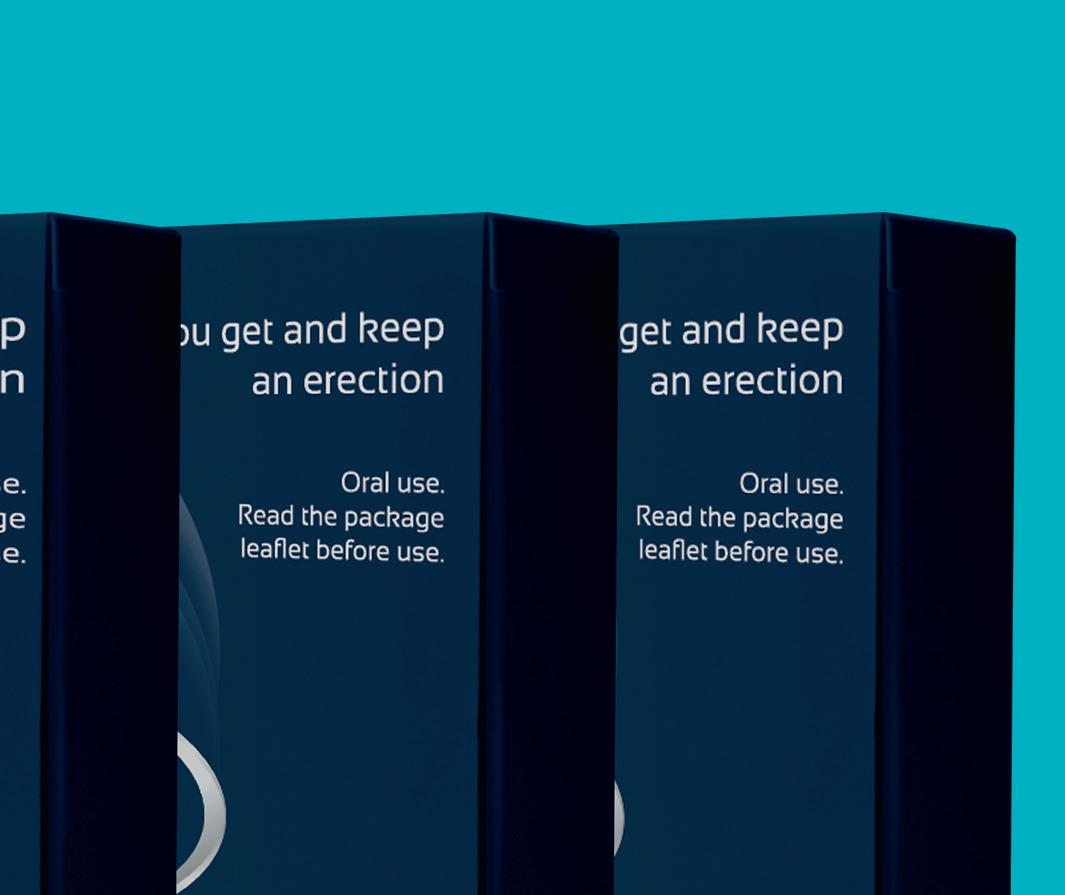
Buy from your pharmacy or online at https://eropid.store/ Proven treatment, competitively priced



Product information: Eropid 50mg film-coated tablets. Active ingredient: Sildenafil 50mg. Indication: for the treatment of erectile dysfunction in men aged 18 years and over. For further information about this product, including adverse reactions, precautions, contra-indications and method of use, visit https://eropid.store/












Erection problems are not as uncommon as you may think, and not just in men over 40, where causes such as high blood pressure and diabetes can be at the root of the matter. EDF in younger men is more likely to be caused by stress, lifestyle and emotional problems.


One study found that EDF a ected 26 percent of men under 40, and there are suggestions that the proportion of men with mild or moderate EDF correlates roughly with their decade in life (50 percent of men in their 50s, 70 percent of men in their 70s, etc).

While EDF is much better understood and more talked about than it has been, there are still many misconceptions around it, some created by the availability of drugs like Viagra. Created in the 1980s as a blood pressure drug, sildenafil citrate, available under names including Viagra and Eropid, has been available on prescription since

1988, and is now available over the counter without prescription (though you need to have a consultation with the pharmacist to make sure it’s safe for you to take it.)





It’s important to understand how sildenafil works. It’s not just a matter of taking a pill and popping an instant boner; you have to be capable of becoming aroused in the first place. What sildenafil does is to prevent the formation of a chemical called phosphodiesterase type-5 which narrows the blood vessels and diminishes the erection.


















Other medicines such as tadalifil (Cialis) and vardenafil (Levitra) work in a similar way, but have a longer lasting e ect and still require a prescription.
According to independent studies, sildenafil lasts for around four to six hours a er it has been taken. Typically, it takes e ect a er 30-60 minutes - provided sexual arousal has taken place and you have not eaten a fatty meal within the past few hours.
Once the e ects have worn o , it is important that you do not take any more within 24 hours. This means you should not take sildenafil in combination with any other ED tablets. Sildenafil and other EDF drugs can have side e ects such as headaches, nausea, dizziness and transient visual disturbance. It can be dangerous to take sildenafil if you take nitrates for chest pain.
If the cause of your EDF is emotional rather than medical, counselling can be helpful, with or without EDF drugs. Your GP or pharmacist can advise and refer. ■





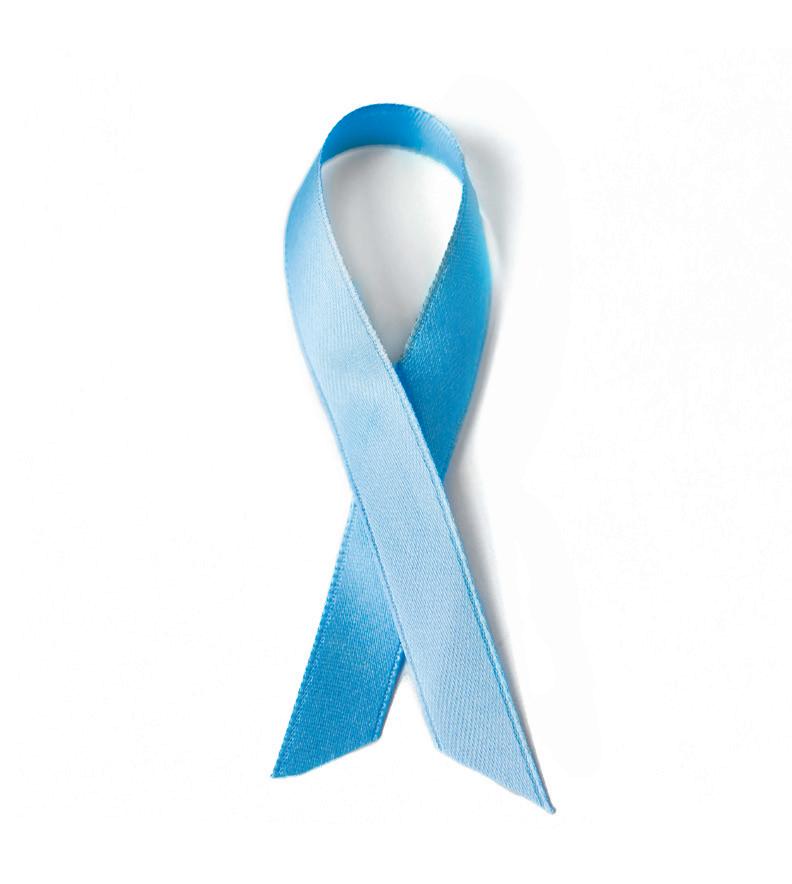
In the UK, prostate cancer is the most common cancer in men, with more than 47,500 diagnoses every year. One man dies of prostate cancer every 45 minutes in the UK, that’s more than 11,500 men per year, and it could affect up to one in every eight men. Around 400,000 live with
and after prostate cancer. Age, ethnicity and family history are factors, but public awareness of the disease, its symptoms, consequences and treatment remains low.
There is no national screening programme as there is for other conditions such as breast cancer, so there is a risk
of late diagnosis and subsequently more difficult in treatment.
Recently, the UK’s National Screening Committee confirmed it would review the possibility of a screening programme for all men over 50, as well as for black men over 45 or men who have a first-degree relative

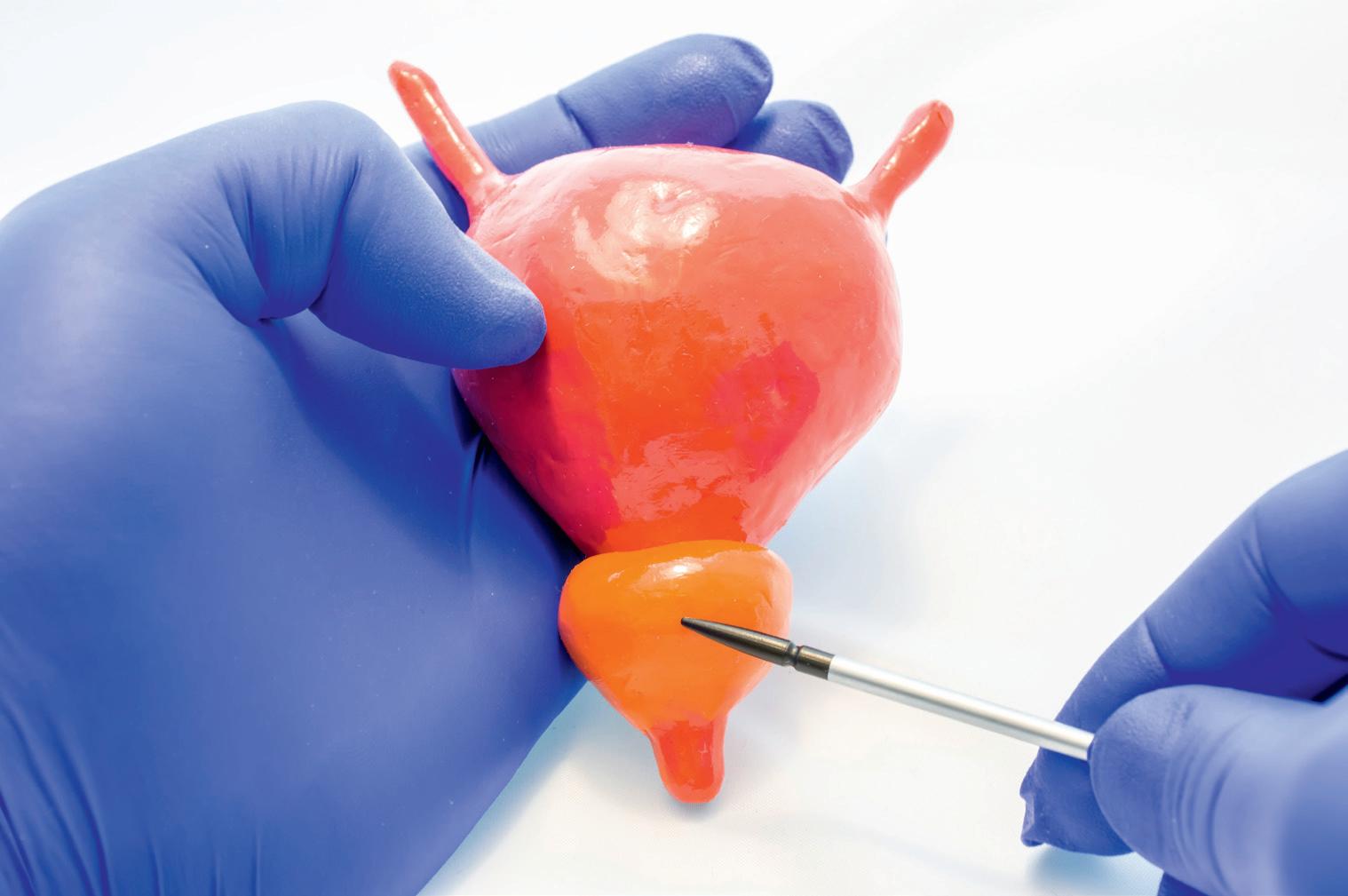
The prostate is a gland in men, the size and shape of a walnut (though it can grow larger with age), which sits underneath the bladder and surrounds the urethra, the tube that carries urine out of the body. The main function of the prostate gland is to make semen, the fluid that carries sperm. But the prostate gland is subject to several conditions, including enlargement or inflammation (prostatitis), and prostate cancer, when cells in the gland begin to grow in an uncontrolled way.
with prostate, breast or ovarian cancer – two groups who are at highest risk. Charity Prostate Cancer UK welcomed the decision, and is urging the committee to consider all the latest evidence from the UK and Europe which points towards an everstronger case for screening.
Some prostate cancer grows too slowly to cause any problems or affect how long you live (it’s often said that many men die ‘with’ prostate cancer, though not ‘of’ prostate cancer.)
For this reason, many men with prostate cancer never need any treatment. However, some prostate cancers grow quickly, and are more likely to spread to other organs, and in these cases treatment is needed to stop it spreading.
A prostate cancer which is contained inside the gland (known as localised or early prostate cancer) is often benign and causes no problems, so it’s often diagnosed only as part of tests for other conditions. If there are symptoms, they can involve difficulty in urinating, and can come on very slowly, over several years. Effects are usually noted in men over 50, and are more common in black men and those with a family history of prostate cancer.
One reason why most men with early
prostate cancer don’t have any signs or symptoms is because of the way the cancer grows. Early symptoms usually show only if the cancer grows near the urethra and presses against it, affecting urination. But because prostate cancer usually starts to grow in a different part (usually the outer part) of the prostate, early prostate cancer doesn’t often press on the urethra and cause symptoms.
So, changes in the way you urinate are more likely to be a sign of a very common non-cancerous problem known as an enlarged prostate, or other health problems. Nonetheless any such symptoms are a sign that you need to get checked out by your GP.
Symptoms can include:
h Difficulty starting to urinate or emptying your bladder
h A weak flow of urine
h A feeling that your bladder hasn’t emptied properly
h Urine dribbling after you finish
h Feeling the need to urinate more often than usual, particularly at night
h Sudden urges to urinate and leakage
If prostate cancer spreads from the prostate into other parts of the body, it can cause symptoms of advanced prostate cancer, including:
h Pain in the back, hips or pelvis
h Problems getting or keeping an erection
h Blood in the urine or semen
h Weight loss
While all of these symptoms can also be caused by other health conditions, they should all be reported to your GP for investigation. There is no definite way of diagnosing prostate cancer without a visit to the doctor. »
Prostatitis is not a form of prostate cancer, but the name given to a set of conditions caused by an infection or inflammation of the prostate gland. It is not the same as having an enlarged prostate. Prostatitis is a common condition which can affect men of any age, but is most common in younger and middle aged men, typically between 30 and 50. Symptoms can include problems passing urine and abdominal pain. Causes and treatment can be problematical, but stress and bacterial infection are two root causes.
Some research suggests that high PSA level in your 40s could predict the likelihood of you getting prostate cancer, or fast-growing (aggressive) prostate cancer, in the future, so if the test suggests you’re at higher risk, you and your doctor may decide to do regular PSA tests. But the PSA test alone is not a definite sign of prostate cancer, one reason why there is no national screening programme as there is with breast, cervical and bowel cancer.
It’s been argued that screening may do more harm than good, as it could encourage more men to have invasive biopsies, which can cause their own health problems, and could cause unnecessary worry in cases of slow-growing cancers.
If a PSA test together with other tests including a biopsy, MRI, CT or PET scan diagnose prostate cancer, there are many options for treatment, including:
h Active surveillance – a programme of monitoring slow-growing localised prostate cancer, rather than treating it straight away, to avoid or delay unnecessary treatment and its side effects
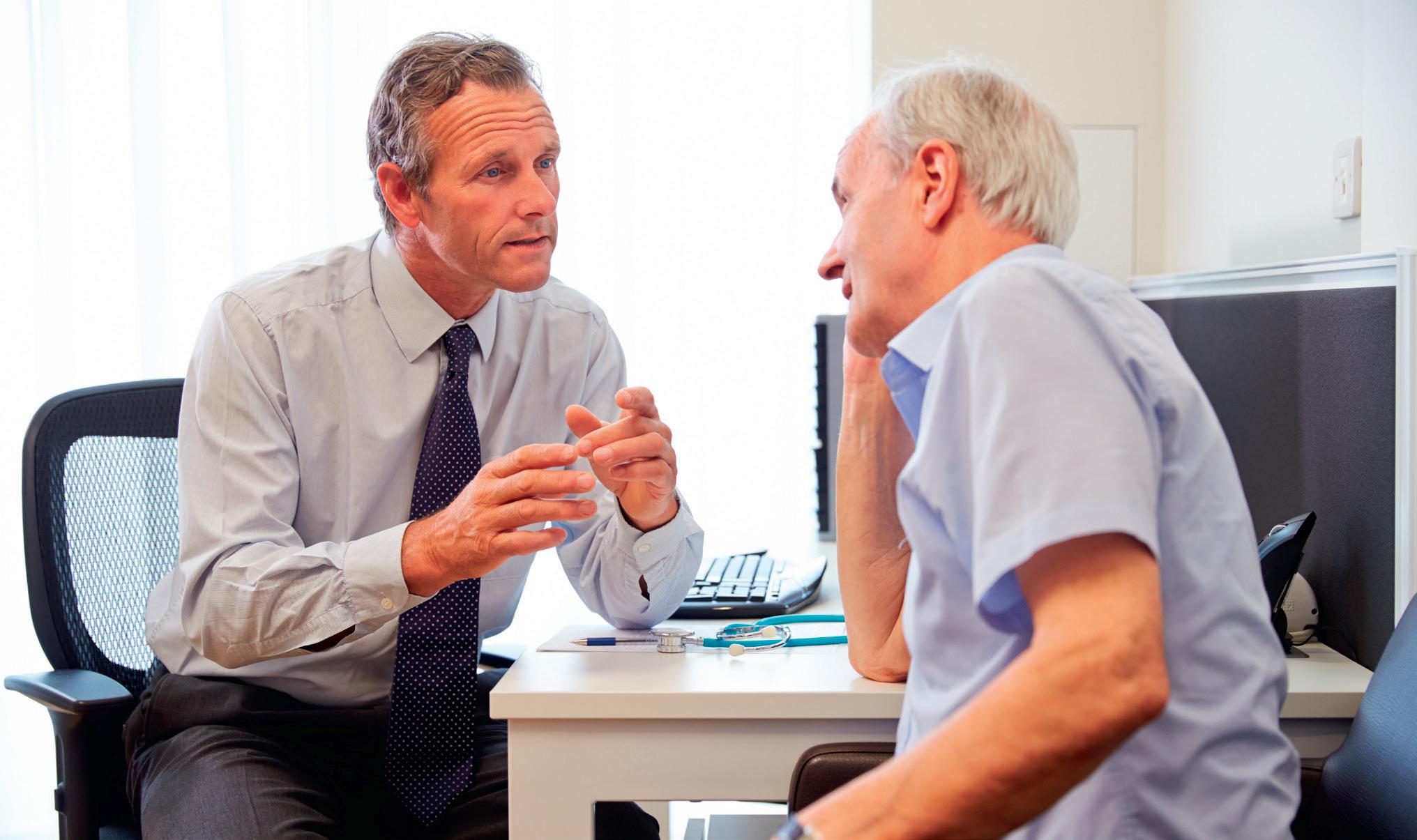
h External X-ray beam radiotherapy –radiation (brachytherapy), cryotherapy (cold treatment) or HIFU (High-intensity focused ultrasound) to destroy the cancer cells
h Hormone therapy – control of testosterone production, which controls cancer development
h Surgical prostatectomy – removal of the prostate gland in cases of localised prostate cancer
All these treatments can have side effects such as urinary problems, erection problems and chronic fatigue, and a good deal of research is going into new techniques to reduce these.
Typical treatment of prostate cancer includes a high dose of radiotherapy to kill cancer cells, but due to the prostate being close to other organs and tissues there is a risk of side effects such as rectal pain, bowel and urinary leakage and erectile dysfunction. In some cases it’s possible to use medical devices to deliver radiation to the prostate while reducing exposure to surrounding healthy tissues, so side effects can be minimised. ■
The PSA test measures the amount of prostate specific antigen (PSA) in your blood. PSA is a protein produced by normal cells in the prostate and also by prostate cancer cells. It’s normal to have a small amount of PSA in your blood, and the amount rises slightly as you get older and your prostate gets bigger. A raised PSA level may suggest you have a problem with your prostate, but not necessarily cancer.
Unfortunately the PSA test is indicative but not definitive, as PSA levels can be affected by many other factors, so you will need other tests for a diagnosis. A GP or a specialist nurse can carry out a range of tests, including a urine test to rule out a urine infection, or a digital rectal examination (DRE). Depending on the results you may then need an appointment with a specialist at a local hospital.
For weekly health & lifestyle news, and free-to-enter competitions delivered straight to your inbox, sign up to our mailing list: www.celebrityangels.co.uk/join-our-mailing-list









Scan me!

We’re all aware of the importance of safety for the gas supplies that fuel our homes, and there are layers of legislation and safety rules applying to the fitting and maintenance of natural gas heating appliances. But there are other invisible gasses which may be a danger.
One of them is the little-known radon.
Radon is a radioactive gas, and can’t be seen, smelled or tasted: special equipment is needed to detect it. It comes from the rocks and soil found everywhere in the UK. The radon level in the air we breathe outside is very low, but it can become concentrated inside buildings.
The only way to know if a building has a high radon level is to have it tested, though there are Radon Potential maps online for any address or area of land in England, Wales, Scotland and Northern Ireland.
Radon is everywhere but some parts of the country are more likely to have high levels in buildings than others. High levels of radon can cause lung cancer, particularly for smokers and ex-smokers. Radon produces tiny radioactive particles

in the air we breathe. Radiation from these particles damages lung tissue, and over a long period may cause lung cancer. The higher the level and the longer the period of exposure, the greater the risk will be.
Indoor radon levels will vary from building to building within the same area. The Target Level and Action Level given on the Radon Potential sites are important averages in assessing concentrations and ideal outcomes.
Elevated radon levels can also occur in private water supplies, so you should find out which areas might be a ected and what to do if you have a private water supply in one of these areas. Visit www.ukradon.org for more information.

As the ground is the main source of radon, remedial work is sometimes needed to reduce radon levels in the home as low as possible. There are several methods that can reduce high radon levels in homes. Buildings naturally draw air in from the ground through the cracks and gaps in the floors, and this air will contain radon. During the house buying and selling process, conveyance documents are used to ask questions about radon gas.
Employers are required by law to assess any risks to their sta while at work, and landlords required to protect their tenants, and when extensions are made to existing buildings in high radon areas, or new buildings are constructed in these areas, the Building Regulations require that protective measures are taken against radon entering the building.


Another and perhaps more familiar dangerous gas is carbon monoxide, or CO. Carbon monoxide is regularly called the ‘silent killer’, and with good reason.

Invisible gasses may be a danger in your home, but don’t worry, here’s an easy guide to making yourself safe.
It is a poisonous gas that you can’t see, smell or taste. It can be emitted from appliances such as boilers and log burners when incomplete combustion occurs. This makes it more dangerous as you won’t know if your appliances are giving off the gas.
Symptoms of CO poisoning such as dizziness, headaches, breathlessness, and nausea are often mistaken for flu as they are very similar in the early stages. But CO poisoning can lead to collapse, unconsciousness, and in the worst cases death. This is why household CO alarms are vital.
It’s important to be aware of the dangers and to identify appliances in your house that could potentially leak carbon monoxide. Maintain and service appliances. Boilers, cookers and heating systems should be installed and regularly serviced by a reputable, registered engineer. It is important not to attempt to install or service appliances yourself. Maintain chimneys and flues. Make sure all chimneys and flues are swept regularly by a qualified sweep.
To protect you from carbon monoxide
poisoning caused by exhaust fumes, do not leave petrol-fuelled lawnmowers or cars running in the garage. You should make sure your car’s exhaust is checked every year for leaks and make sure your exhaust is not blocked before turning the engine on (for example, after heavy snowfall)
Install a carbon monoxide alarm in your home to alert you if there’s a carbon monoxide leak. Modern CO alarms offer a variety of sensor types to guarantee
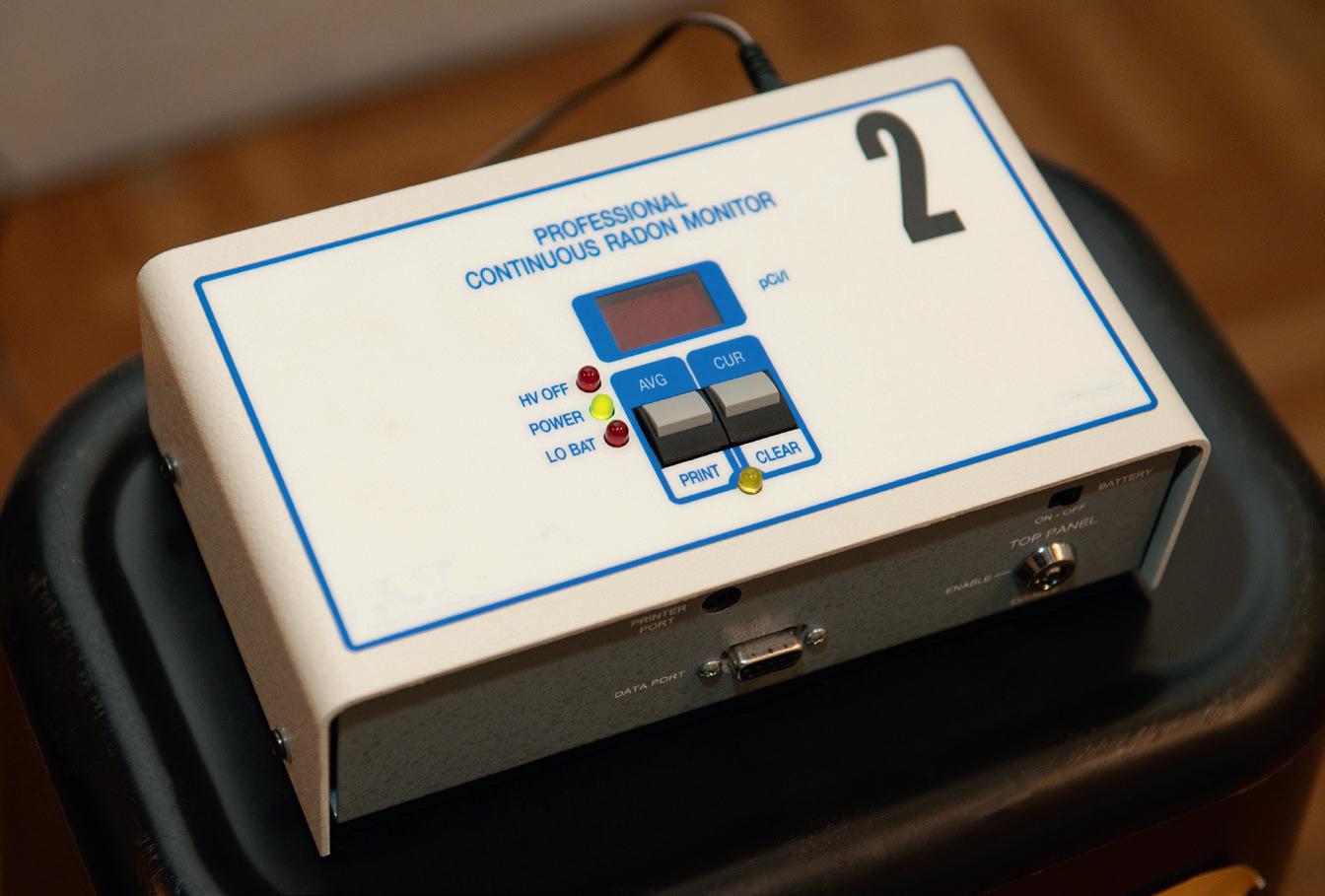

protection for every type of property. There are other sensible precautions you can take to avoid carbon monoxide poisoning, such as avoiding using ovens or gas ranges to heat your home, making sure that rooms are well ventilated and not blocking air vents.
If your home is double-glazed or draught-proofed, make sure there’s still enough air circulating for any heaters that are in the room. ■










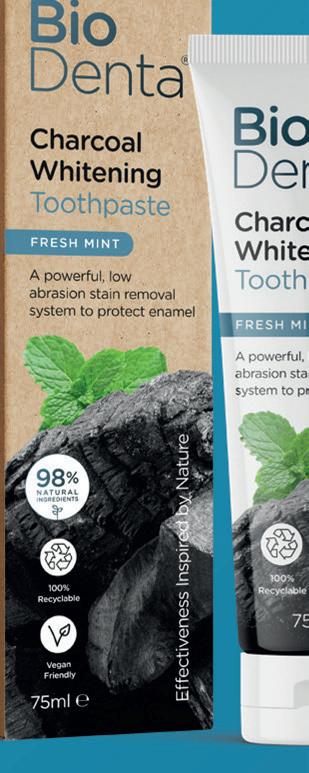


BioDenta is on a mission to create effective, natural and sustainable dental products. We’re driven by a passion for supporting your teeth and the environment, using knowledge from around the world to make our products outstanding.







Caring for your teeth is something we should all be fanatical about; many dental problems are avoidable with good care, and poor dental health can lead to other health problems.
You should brush your teeth with fluoride toothpaste twice a day for about two minutes to remove plaque, a film of bacteria which contributes to gum disease and tooth decay.
Brush last thing before you go to bed and on at least one other occasion every day. Some people find it easier to use an electric toothbrush, but a manual
brush is fine so long as you clean all the surfaces of all your teeth. If you’re using an electric brush, one with an oscillating or rotating head may work better than a manual toothbrush.
It’s important to use a toothpaste with the right concentration of fluoride. Adults should use a toothpaste that contains at least 1,350 parts per million (ppm) fluoride. Children under seven should use toothpaste with less than 1000 ppm of fluoride.
Don’t rinse with water straight after toothbrushing! This washes away the fluoride. After brushing, just spit out any excess toothpaste.
Using a mouthwash that contains fluoride can help prevent tooth decay, but don’t use mouthwash (even a fluoride one) straight after brushing your teeth or it will wash away the concentrated fluoride in the toothpaste left on your teeth. Use mouthwash a different time, such as after lunch, and don’t eat or drink for 30 minutes after using a fluoride mouthwash.
Our aim at BioDenta is to align oral health with environmental responsibility by using natural products to create a range of toothpastes that all contain fluoride and are free from harmful chemicals. We have carefully selected the latest health-promoting ingredients for our high-performance formulas, harnessing expertise from around the world to create this innovative range of products that really work.
Environmental considerations are integral to everything that we do. With a clear purpose to be a carbon neutral brand, we have created fully recyclable packaging, and have considered all areas of our operation to ensure we are acting in the best interests of our planet and future generations.
www.biodenta.com
Children under the age of three should use just a smear of toothpaste. Children aged three to six years should use a pea-sized blob of toothpaste. Make sure children don’t lick or eat toothpaste from the tube.
Regular flossing or using interdental brushes before brushing your teeth may also reduce gum disease by removing plaque. ■




Ihave been a GP trainer for over a decade now (I always think the term GP trainer makes me sound like I am training some sort of circus animal!).






A er finishing five or six years in medical schools, all graduates embark on a two-year foundation doctor programme a er which they decide on which area they would like to specialise in. If they choose general practice they spend a further three years in training, eighteen months of which are spent in hospital and eighteen months in a GP surgery. It is during these years in general practice, I look a er them.

My job is to ensure they consult patients with compassion, understanding and knowledge. They also have a series of exams and assessments they need to get through before being able to qualify as a GP.
It is a tough time - many of them have young families that they need to care for as well as complete their training. For me, it is a joy - I get to meet young dynamic people and teaching means I have to keep up to date with all the latest guidance and consultation techniques, all of which makes me a better GP. But it goes beyond that, every single one of my GP trainees has become a lifelong friend.
I love hearing about how their careers develop and how their families grow a er they leave our surgery, and we o en meet up for drinks and meals.



It isn’t always easy. In a bid to increase the number of GPs across the country there has been an increase in the number of GP
trainees. This means where in the past I would have had just one trainee at a time, I now have four. It’s a lot of work, I am completing their assessments and reading their log entries on evenings and weekends, I am responding to panicked emails and phone calls about looming exams late at night and I have to ensure they all have an equally educational experience at the practice, all whilst seeing my own patients. It is hard.
But the good definitely outweighs the bad, there is nothing better than getting that phone call from a trainee to say they have passed their exam or got a new job. It does make you proud as a trainer, and many of our trainees are now my colleagues as they take up permanent positions within our practice, which helps us with recruitment. ■


A study into post-operative effects of vasectomy says that they are even less common than reported, and that advisory material should be updated to reflect this. The research team studied 94,000 procedures looking for evidence of complications such as infection, but found it in only 1 percent of routines, not the commonly reported 2-5 percent. Vasectomy surgery, which takes about 15 minutes under local anaesthetic, seals off the tube that sperm swim down after leaving the testicles and is regarded as a safe and reliable means of contraception after a few months. In the US, men have been uploading footage of their vasectomies to TikTok, as interest in the surgery has increased following the US Supreme Court’s decision to remove women’s right to abortion in some states.

Over 70 organisations have joined together to call for better representation for older people across government-policy making. Led by charities Independent Age, Age UK, the Centre for Ageing Better and campaigning organisation the National Pensioners Convention, the group has called for the creation of a Commissioner for Older People and Ageing in England. In Wales and Northern Ireland, older people have benefitted from a Commissioner for more than 10 years. Currently 11 million people in England are aged 65 or over, and in less than 20 years, over 17 million (1 in 4) people will be over 65. The statement calls on the government to appoint a Commissioner to act as an independent champion for older people, ensuring that their long-term needs are met and the challenges faced by an ageing population are considered in policy and practice across all government departments.
New Resolution Foundation research has suggested that government policy is unlikely to persuade the large cohort of the older ‘economically inactive’ to ‘unretire’. Instead, the research recommends that government efforts to boost Britain’s workforce should focus on supporting more mothers into work, encouraging older workers and supporting those with a disability to stay in work. Chancellor Jeremy Hunt has called on older workers who have left the workforce to return to employment to help tackle the soaring workplace vacancies in the UK’s labour market and the economy. Economic inactivity among all adults has risen by 830,000 since the start of the Covid pandemic, with more than three-quarters (630,000, or 76%) of this rise being among people aged 50 and above.
A study published in BMC Medicine confirms that a ‘Mediterranean’ diet rich in seafood, fruit, vegetables, nuts and olive oil may lower the risk of dementia for anyone, including those with a genetic disposition towards dementia. The study of data from more than 60,000 seniors revealed that choosing a Mediterranean diet reduces likelihood of developing dementia by nearly a quarter. Among people whose food choices

least resembled a Mediterranean diet, “around 17 in every 1,000 individuals developed dementia during the approximately nine year study follow-up period,” said the study’s lead author, Oliver Shannon, a lecturer in human nutrition and aging at Newcastle University. In contrast, among people whose food choices most resembled a Mediterranean diet, “only around 12 of every 1,000 individuals developed dementia,” he added.
Cinnamon Care Collection is an exclusive group of luxury care homes and retirement developments in beautiful locations throughout the country. They put their residents at the forefront of all decisions giving families and friends ultimate peace of mind.

www.cinnamoncc.com
70% of carers suffer from back problems due to the physical demands of pushing a wheelchair. The award winning electric Ypush is the only wheelchair in the world to offer seamless power assistance to carers, at any speed, without even stopping or changing any settings. Let the Ypush take the strain so you can go and enjoy new adventures together.
www.ypush.com


According to Alzheimers.co.uk, there are 143 drugs being tested in clinical trials for the treatment of Alzheimer’s disease. Over 80 percent of these drugs are designed to try and slow down how quickly Alzheimer’s gets worse and progresses. The three most promising drugs are lecanemab, gantenerumab and donanemab.
Now, after accelerated trials, the US regulator has granted
a licence for lecanemab (known commercially as Leqembi), which can now be prescribed to people living in the US with a confirmed diagnosis of mild cognitive impairment (MCI) or early-stage Alzheimer’s disease, who have appropriate medical insurance, or can afford to pay for it directly.
Dr Richard Oakley, Associate Director of Research at Alzheimer’s Society, says: “Alzheimer’s disease causes the cells in
the brain to get sick and eventually die, which leads to symptoms like memory loss. To treat Alzheimer’s disease, we need to find effective drugs that are able to slow down or stop it. These drugs are often called ‘disease-modifying’ treatments. At present, there are no disease-modifying treatments available in the UK for any type of dementia, including Alzheimer’s disease. These promising drugs for treating Alzheimer’s disease bring fresh hope.
“These exciting results offer our best hope yet for not only delaying symptom progression for people with early stage Alzheimer’s, but, significantly, slowing the loss of quality of life for them and their carers.
“They highlight more than ever the need to prioritise early diagnosis, through wider access to PET brain scans and research to get blood tests into the clinic, so people can access these drugs when they become available.
“New, early modelling data from this trial suggests the drug could delay decline of memory and thinking skills of people with mild Alzheimer’s by over seven months”.

“We also heard new data shows lecanemab could slow down decline in quality of life for patients and carers by up to 56%. This is hugely promising and gives us hope that those affected by Alzheimer’s disease could have more quality time as a family.
“Our research led by Sir John Hardy over thirty years ago seeded trials like this by discovering the importance of amyloid protein in Alzheimer’s disease. It laid the foundations for billions of pounds of investment into many of the drugs like lecanemab, with 117 other drugs currently in trials.
“This isn’t the end of the journey for lecanemab – it’s being explored in further trials to see how well it works over a longer period of time and the difference it could to make to people before their symptoms have even developed.
“The safety of drugs is crucial and lecanemab did have side effects, but they will be closely looked at when decisions are made about whether or not to approve lecanemab, to see if the benefits outweigh the risks”.

“There is still a long way to go before we could see lecanemab available on the NHS, and we await clarity for how and when the approval process will take place in the UK, and whether regulators believe it is cost-effective. We mustn’t forget that lecanemab can only be given to people with early Alzheimer’s disease who have amyloid in their brain. This means people with other types of dementia, or in the later stages of Alzheimer’s disease, can’t benefit from this drug.




“We were excited to see a recommitment to the National Dementia Mission. This crucial doubling of dementia research funding must be delivered urgently.
With 900,000 people living with dementia in the UK, this crucial investment must boost research for all types of dementia so no one is forgotten.” ■
Dementia is an umbrella term given to people who are su ering from an illness that impairs their ability to think, remember or make decisions. Alzheimer’s is the most common type of dementia accounting for 60-80% of cases, but there is also vascular dementia, Lewy body dementia and frontotemporal dementia.




We do not know the exact cause of dementia, but we do know there are things we can all do to reduce our risk of getting the disease. Keeping active by doing regular physical activity improves blood flow to the brain and has been shown to reduce the risk of developing both Alzheimer’s and vascular dementia. Eating a well-balanced diet that includes more plants such as vegetables, legumes, nuts, seeds and pulses is also associated with less risk.
If you enjoy meat, then opt for leaner meats such as fish, particularly oily fish like salmon and mackerel as well as chicken. Quit smoking and drink alcohol to safe levels - both of these have general health benefits but also reduce risk of dementia. And finally, stay mentally active by taking part in activities that you enjoy, this may be adult education sessions, playing an instrument, learning a new skill or doing things like puzzles, reading books. Maintain a good social life, interaction and conversation with other people is also good for your brain!
Scientists are continually working on new treatments for dementia - one of the most recent promising developments is the drug lecanemab which can reduce the rate at which Alzheimer’s dementia can progress by up to 56%, although there is a still a long way to go before it will be available on the NHS.

At King Edward VII’s Hospital, modern medicine and traditional values are combined to provide the very best individualised care. From the warm welcome patients receive at reception to the reassurance we give them as they leave, we aim to make every patient feel like our only patient.
Our multi-disciplined teams include world-leading experts and clinicians in:

• Musculoskeletal Health Including joint replacements such as knee and hip, resurfacing, ACL reconstruction, physiotherapy and diagnostics
• Women’s Health
• Urology
• Digestive Health
Our highly skilled teams will create a uniquely tailored care plan to help you get back to feeling like yourself again and doing the things you love.
Getting the treatment you need by one of the UK’s top specialists may be more accessible than you think as you can spread the cost of private treatment with our tailored and flexible payment plans.
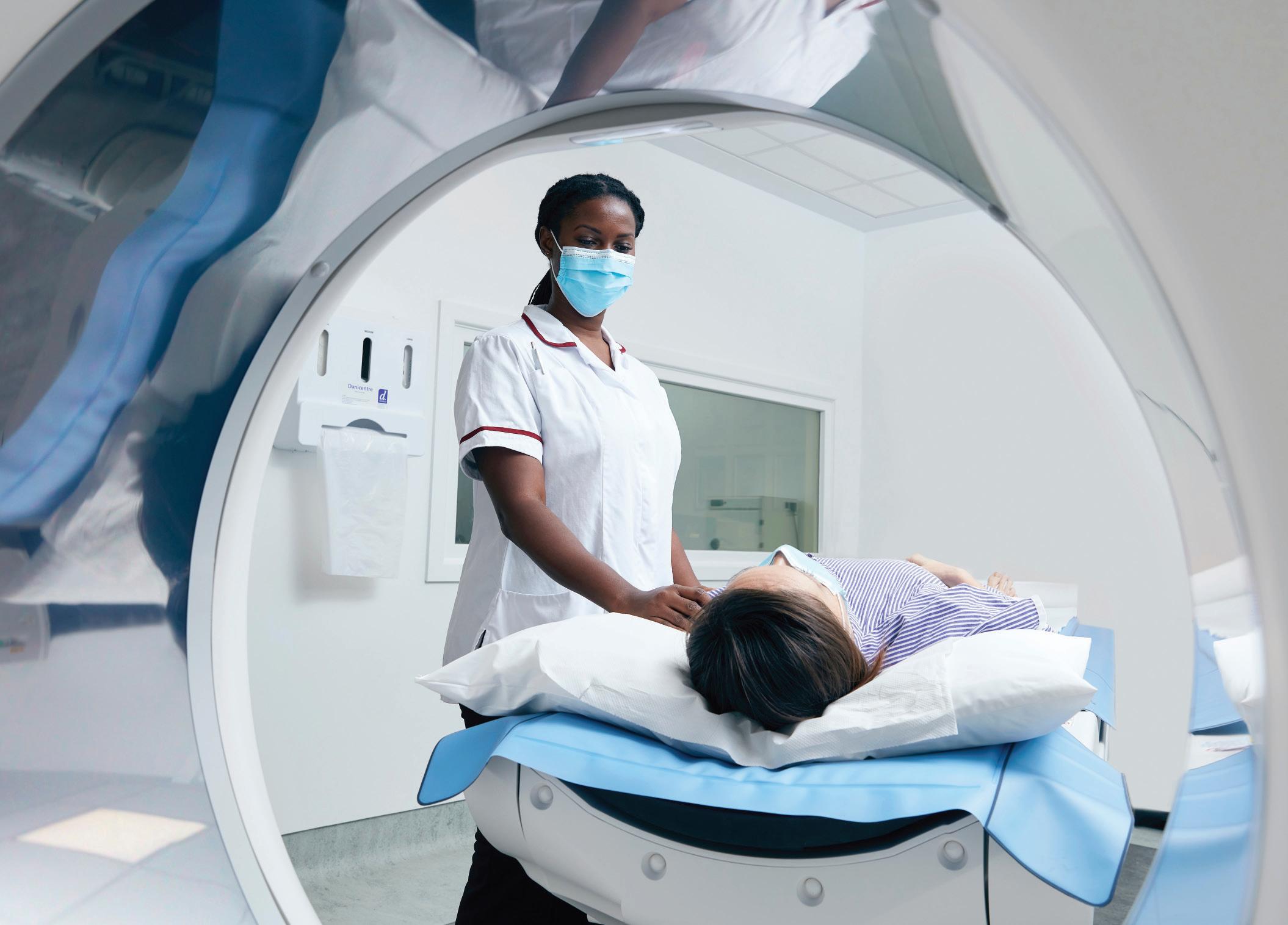
If you have knee, hip or shoulder pain but are struggling to get a diagnosis, King Edward VII’s Hospital one stop all-inclusive assessment packages can help find the cause of your pain and provide you with a bespoke treatment plan from just £380.*
Excellent, high quality, attentive and compassionate care from everyone, from porters to consultants. Rooms are spotless, catering is excellent, and the whole experience is one more like a spa than a hospital! King Edward VII delivers in every respect.


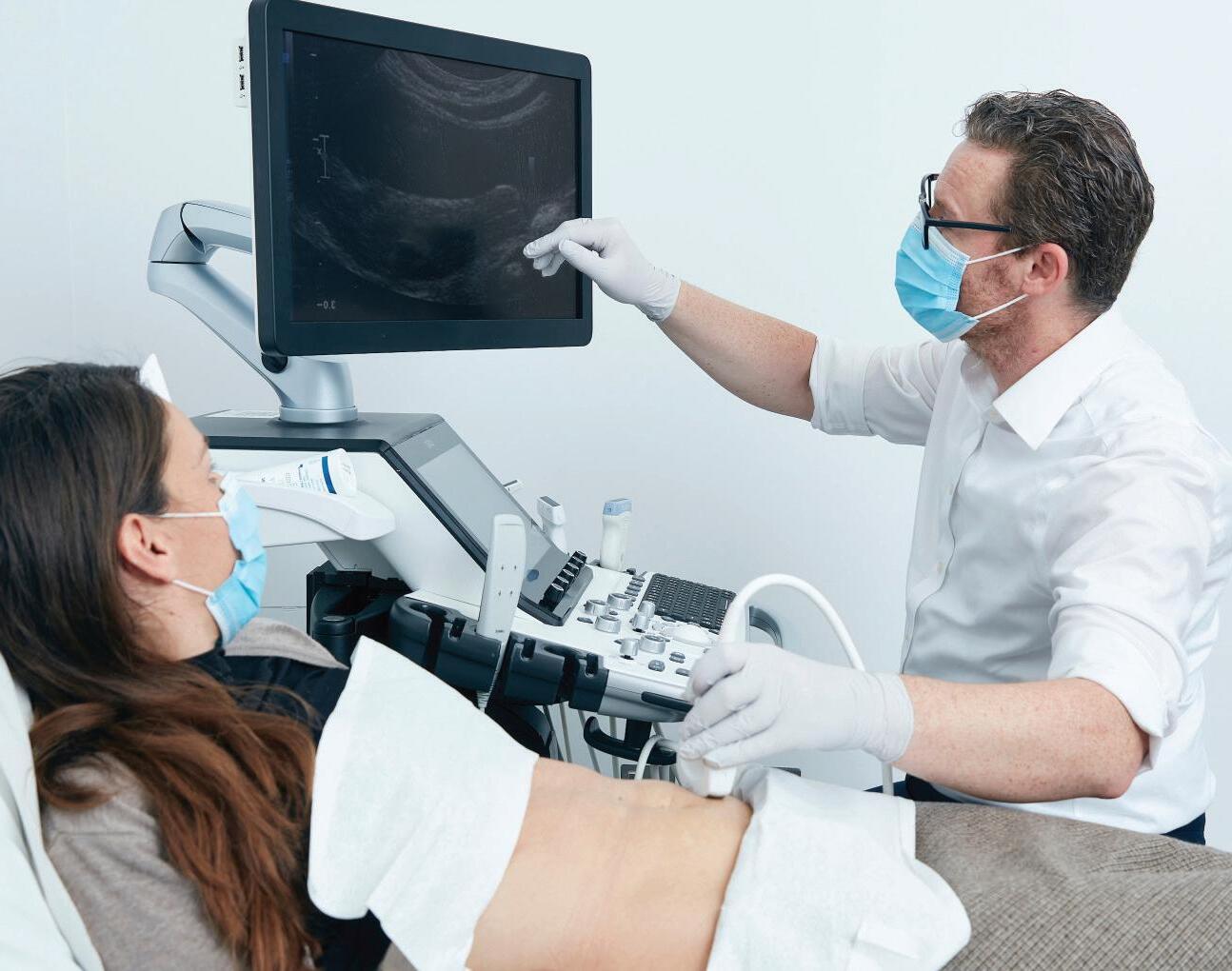
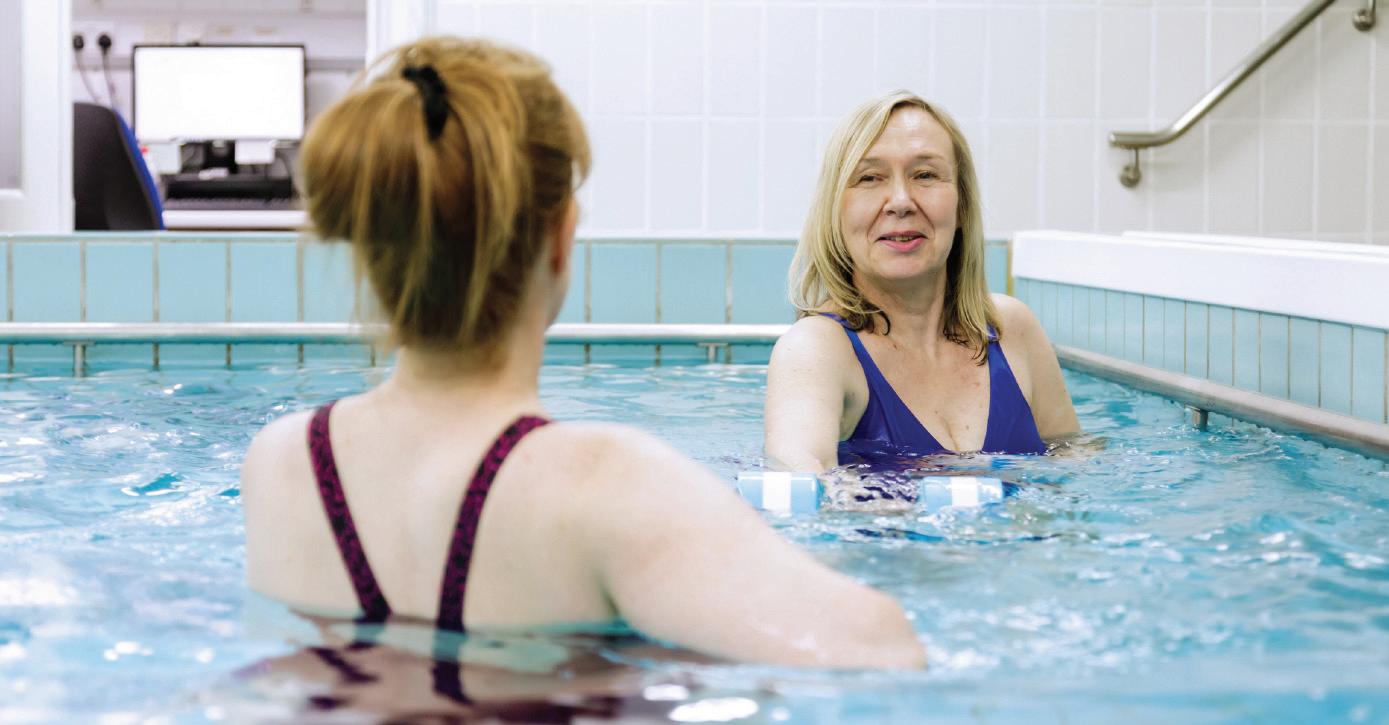

You don’t have to be a pro golfer to feel that your life is being constrained by hip pain - as we get older, it becomes more likely that a walk to the shops or climbing the stairs can become uncomfortable.
The most common cause of hip pain is osteoarthritis - wearing away of the cartilage that lies the joints, so bones rub together when the joint moves. This affects about 8m people in the UK. Other possible causes of hip pain are rheumatoid arthritis, an immune system disorder; bone dysplasia, where the bones of the joint becomes deformed; and fractures of
the hip, which unfortunately become more common with falls in old age.
Whether you want to continue energetic activities like swimming or tennis, or you just want to get back to everyday activities without pain, a hip replacement surgery can be very successful in restoring pain-free movement, and in some cases can improve the range of movement.
There are several non-surgical treatments for hip pain, including steroidal injections such as cortisone, oral medications, heat
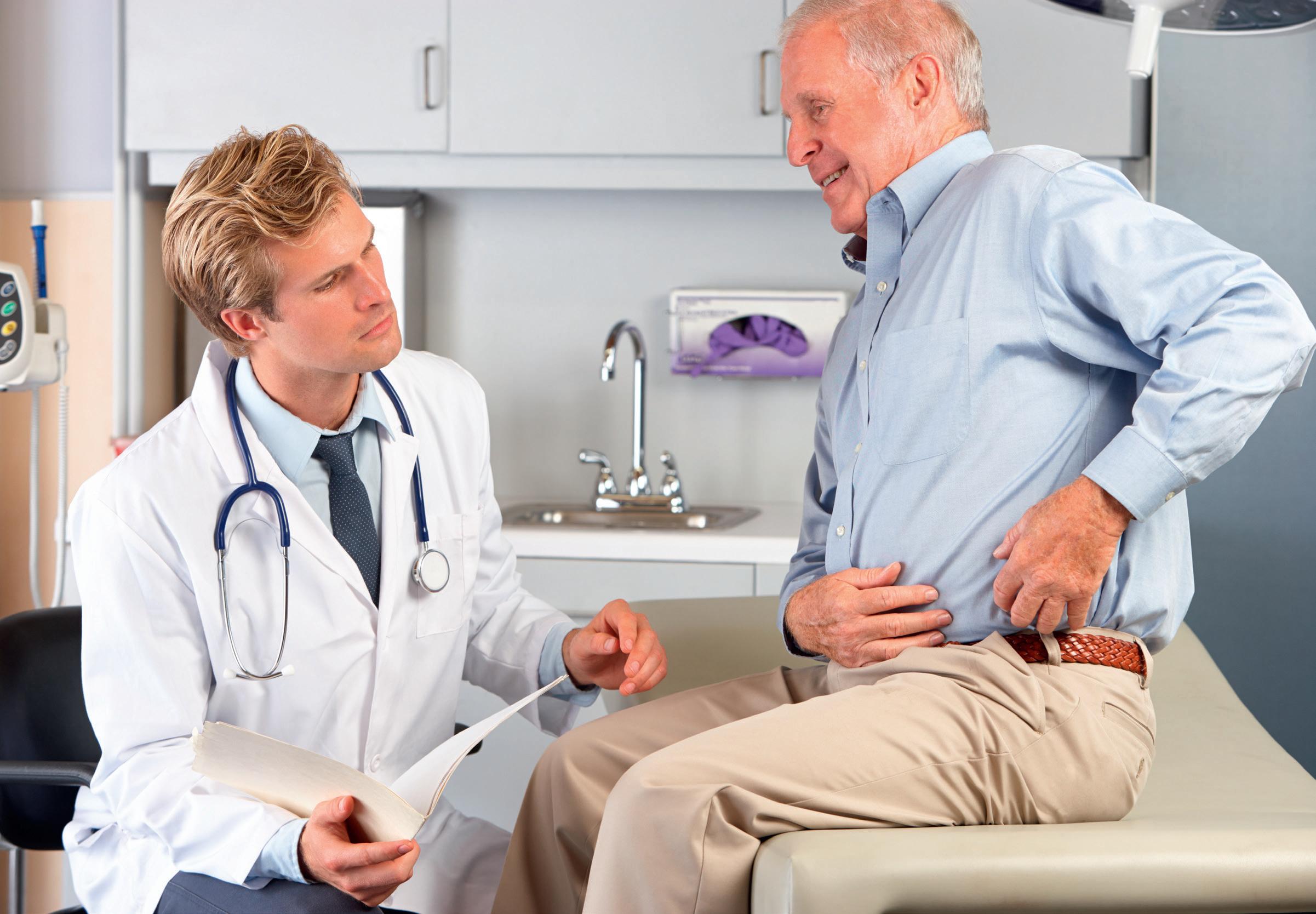
therapy, physical therapy, and lifestyle modifications such as weight loss. In some cases a walking aid may help.
But if you have tried these treatments without success and are still experiencing pain which limits your everyday activities, it may be time to talk to a hip replacement specialist.
In some cases it’s possible that the problem can be addressed with joint resurfacing. The goal of this procedure is to repair the areas where the cartilage has deteriorated. During joint resurfacing, holes in the cartilage are filled, allowing a surgeon to smooth the area without
The National Joint Registry (NJR) collects details of hip replacements done in England, Wales, Northern Ireland and the Isle of Man. Although it’s voluntary, it’s worth registering. This enables the NJR to monitor hip replacements, so you can be identified if any problems emerge in the future. The registry also gives you the chance to participate in a patient feedback survey. It’s confidential and you have a right under the Data Protection Act to see what details are kept about you. www.njrcentre.org.uk
dramatically altering the structure of your joints. As a result, you will experience less joint pain and improved function, and, because of the minimally invasive nature of joint resurfacing, you should be able to return to normal activities sooner than you might had you had a complete joint replacement.
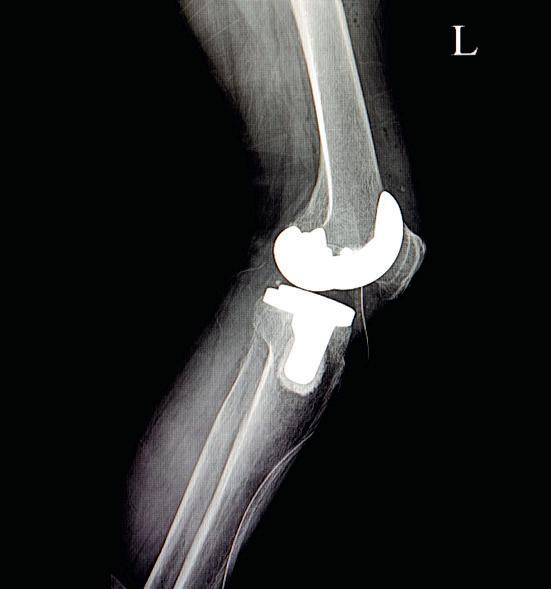
If it’s agreed that a complete joint replacement is required, some common preparations for surgery include losing weight if you are overweight, remaining active and doing regular exercises, and routine blood and urine tests, x-rays or ECGs, as ordered by your surgeon.
Nestled in the heart of Marylebone is a private hospital with a difference. From all-inclusive diagnostic assessment packages to help diagnose the cause of your hip pain, to access to world-leading orthopaedic consultants within as little as 24 hours, you can start dealing with your medical worries at a time that suits you. With cutting edge technology & treatments, in-house physiotherapy & hydrotherapy and one of the best nurseto-patient ratios in the country, King Edward VII’s Hospital (www.kingedwardvii. co.uk) is here to help make your hip surgery as stress free as possible so you can focus on your journey back to better health.
There are partial and full hip replacement surgeries; if your knee is impacted by arthritis, an orthopaedic surgeon may perform a partial knee replacement, which involves placing an implant in front of the knee or inside or outside the joint.
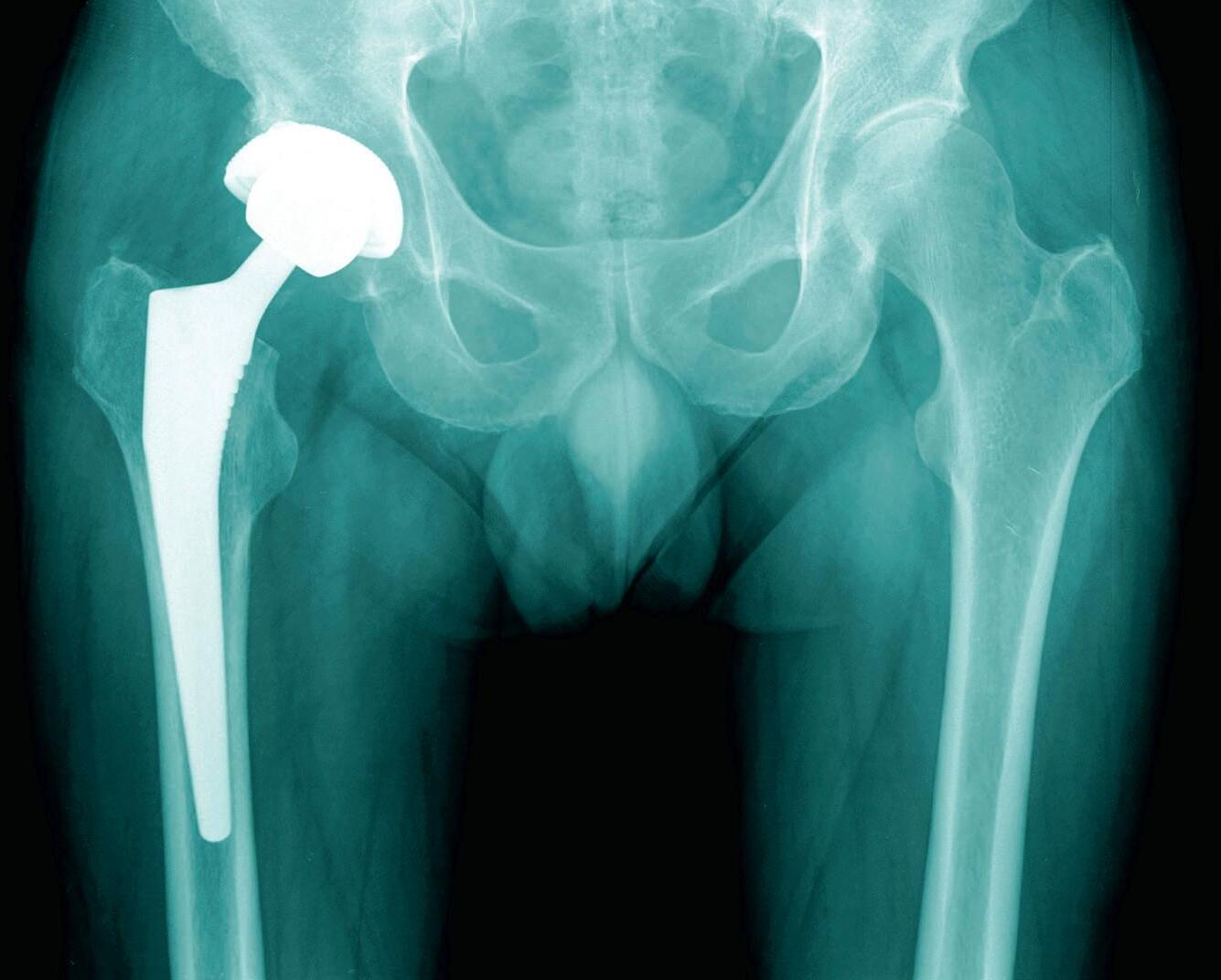
In a total hip replacement or arthroplasty, the hip replacement consultant surgeon will make an incision in the hip area and remove the damaged hip joint and replace it with a prosthetic one. The head of the femur (thighbone) is removed, as is the bone socket (acetabulum), and both are replaced with metal, plastic, or ceramic components. The operation is remarkably swift, taking only around 90 minutes, and can be done under local or general anaesthetic. Recovery time can depend on a number of factors, including your age, health, fitness level, and the type of your procedure. You’ll usually be in hospital for around three to five days, depending on the progress you make and what type of surgery you have. If you’re generally fit and well, the surgeon may suggest an enhanced recovery programme, where you start walking on the day of the operation and are discharged within one to three days. ■
Prosthetic replacement of the knee joint is also available. This surgery is often performed under a general anaesthetic, or a spinal anaesthetic. The knee cap is removed, damaged parts of the thigh and shin bone within the knee joint cut away, and a prosthetic knee joint cemented into place. The knee cap is then replaced and the wound stitched or clipped together. It normally takes between one and two hours and requires a few nights in hospital following surgery.


If independent living or in-home care are not appropriate, residential care can provide high-quality, 24-hour care
Residential care, where the care receiver leaves their home and moves into a care home, can provide support that reflects their physical, mental, emotional and social requirements of each individual in order to maximise their personal wellbeing.
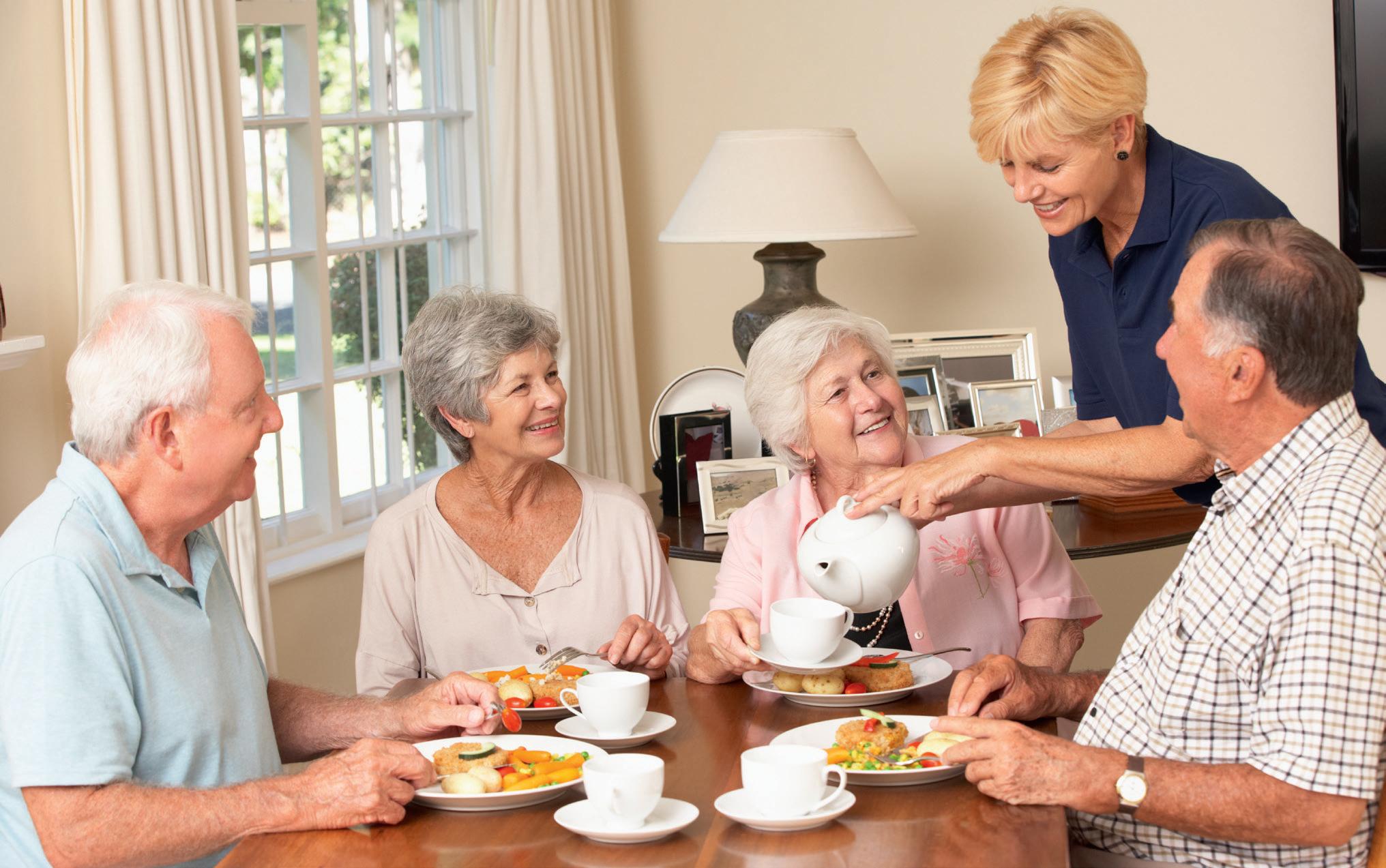
In most cases, care receivers in a residential care home will have their own room, often with ensuite facilities or good access to bathrooms, and most care homes will have communal living and dining rooms, activities lounges, and gardens. Many care homes are situated at the heart of the local community, enabling relatives, volunteers, school children and other community groups to visit regularly.
In cases where the care receiver -
h Is struggling to live alone – even with help from friends, family or paid carers
h Had a needs assessment that suggested a care home is the best choice
h Has a complex medical condition that needs specialist attention during the day and night
- then a residential care home may be the best option.
Care homes can reduce the stress of looking after general health and care. This could help the care receiver to focus on other things, like social life and mental wellbeing.
There are two main types of care home, residential homes and nursing homes. Some care homes offer both residential and nursing care places. Care homes may
There are organisations that inspect care homes to see how well they are doing. The Care Quality Commission (CQC) regulates all health and adult social care in England, so you might see a CQC inspection rating when you visit a care home or search online, either Outstanding, Good, Requires improvement, or Inadequate. You can search for care homes on the CQC website to see their full reports.
be run by private companies, voluntary or charity organisations, or sometimes by local councils.
Residential homes provide accommodation and personal care, such as help with washing, dressing, toileting, and taking medicines. Some care homes also offer activities, such as day trips.
Nursing homes also provide this level of personal care, but will also have qualified nurses on duty to provide medical care. These are sometimes called care homes with nursing.

Some nursing homes offer services for people that may need more care and support, for instance people with dementia, severe learning or physical disabilities, or complex medical conditions that needs help from a qualified nurse, such as someone who has a colostomy or who is fed through a tube.
When you are choosing a care home, advice from the NHS is to look for:
h Staff and managers with the right time, skills and experience to do their jobs
h Clean buildings, rooms and bathrooms
h A wide range of activities for residents at home and outside
h Good quality food choices and options about where to eat meals
h Fast and easy access to health professionals, such as GPs and dentists
h Making sure any cultural, religious or lifestyle needs are met
h Feedback from residents is asked for and used to improve care
Before deciding how to pay for a care home, it’s worth asking your local authority for a needs assessment. The council can then help you look at all your options. You can choose to pay for care yourself if you’re able to afford it or you don’t want a financial assessment (self-funding), or you can contact social services at your local council and ask for a needs assessment for help with funding.
It’s important not to make any financial decisions such as selling your home or cancelling a tenancy before the council has made a decision. Costs of a care home will be different depending on the type of care
home needed and the location. Nursing homes usually cost more than residential homes. Average costs in the UK are around £600 a week for a residential home, and around £800 a week for a nursing home.
If your family is able to help pay towards the cost of a care home, they can add to any money the council gives you. This is known as a top-up fee. This would allow the care receiver to live in a care home that costs more than the council will pay, but if the family is no longer able to pay, the care receiver may have to leave the care home.
If the council is paying for your care home, you should be given a care plan which lets you know your options and decide which care home meets your needs and is affordable. If you are paying for the care home yourself, you might have wider options, taking into consideration factors such as location, local amenities, activities and services, and help with trips outside the care home. ■
Many care homes offer shortterm care, often called respite care, which offers people an opportunity to receive specialist care and support in a warm, safe and friendly environment for a short period of time, and can also offer their usual carer a well-earned break as well. Respite care can also help people who are convalescing from a period of time in hospital, enabling them to recover in an environment where they can be supported by care teams. Short-term care can range from a few days to a few weeks, and can usually be arranged on a recurring or one-off basis.
A unique Norfolk company has taken a collaborative approach to develop a turnkey care homes solution - and helped alleviate the NHS beds gridlock.
Norfolk is an increasingly attractive county: with its long sandy beaches, beautiful countryside, thriving city of Norwich, pleasant market towns and picturesque villages, it offers a high quality of life. In recent years, it has become one of the most sought-after retirement destinations. This has led to an ageing demographic, increasing demand on elderly care and places in care homes.
Ten years ago Norfolk County Council recognised that this demand would only continue to grow, and came up with an innovative solution. The council already owned a hugely successful, multi-million-pound trading company, Norse Group, which provided a number of services to clients in the public and private sectors. These ranged from school meals, FM and property design to waste collection and transport. The group had also pioneered a partnership model, forming joint ventures with other local authorities across the UK.
In a far-sighted decision, the council decided to transfer its care homes into Norse, and give the company the freedom to trade, bringing its commercial expertise into play. The council and its company developed a long-term strategy to develop brand new, state of the art dementia units. Norse employed its own architects and property specialists to design the first, Lydia Eva Court in Gorleston-on-Sea, which provides short-term and full-time support for people living with dementia.

Following this success, further specialist units were built, and NorseCare now owns and operates twenty-one residential care homes, fifteen housing with care facilities and an independent living scheme with fifty-eight apartments. Drawing on the commercial knowhow of the wider Norse Group, by adding new facilities, and refurbishing the original buildings, NorseCare has increased capacity and extended its services to the private market, in addition to those in council care.
From designing and maintaining the homes, and providing the highest levels of care, the one-stop shop is a winner.
The unique position of NorseCare, as part of council-owned Norse Group, means that it has access to the full range of services under one roof.
Group-wide, Norse provides all of the services needed to run the care homes: property design, project management and construction; building and grounds maintenance, cleaning, catering, security and transport; plus all the support services such as HR, payroll, finance and procurement.
In addition, the group started a specialist company, n-able, which provides assisted living technology including hoists and stairlifts. As well as selling these products direct to consumers and commercial customers, n-able installs and maintains them in the care homes.
By combining all of these resources, NorseCare is uniquely able to design, build and look after its buildings, as well as delivering the full range of care services to the residents. This extends to providing all meals, maintaining the gardens, waste disposal, CCTV monitoring and security, building maintenance and cleaning – ensuring the best possible environment for their clients.
And by making use of Norse Group’s experience in forming partnerships, it is able to offer this model to other local authorities across the UK who are looking for new ways to deliver care to their communities.
Collaboration is at the heart of Norse; the company is founded on partnership, with over twenty joint ventures with local authorities across the UK. And this partnership ethos has been crucial in helping the NHS.

The close relationship with the county council means that NorseCare is in a position to influence local care policy, and to act as a ‘bridge’ between local government, the private sector and the local NHS trusts.
The importance of this was recently demonstrated when NorseCare took the initiative in helping to relieve the NHS bed crisis. The lack of beds available in hospitals has been widely reported, and has been one of the key issues over the winter. Large numbers of patients who have been medically assessed as ready to leave hospital could not be discharged due to the acute shortage of suitable accommodation and care in the community.
NorseCare is the largest care home provider in Norfolk. We offer compassionate, high-quality, award-winning care and support to almost 1,500 people in residential care homes and housing with care schemes, ensuring that loved ones are looked after to the highest standard. Our 1,600 staff are the best in the business, receiving specialist learning and development, allowing them to thrive and enjoy a rewarding career.
Our growth, and the addition of new purpose-built facilities, means that we are able offer our outstanding services to private customers.
Paul Gilligan, the Director who runs NorseCare, says that within a few days of having spoken with Norfolk County Council, they had pulled together a team that included NorseCare, NHS trusts, the council and Norfolk’s community hospitals. Paul was even able to bring the private care home providers into the alliance, further increasing bed capacity.
The aim was to create a more fluid movement further down the care pathway, freeing up beds in the community hospitals to take those discharged by the acute hospital system.
Since the initiative began in late November 2022, the team has managed to relocate around 100 people, freeing up hospital beds and easing the pressure on hospitals. And a long-term structure is in place, ready to meet the increased demands next winter and beyond.
The success of this project illustrates the power of collaborative working, and how a joined-up approach can make a huge difference – a belief which lies at the heart of NorseCare.

“This has a double benefit, if discharged patients are moved from hospital beds, firstly they are not at risk of further deterioration causing prolonged stays, and secondly they are making way for faster transfer of incoming patients from ambulances. It is easier to move out community hospital patients, rather than acute hospital discharges, as they have already had some level of rehabilitation.”
Paul Gilligan, Director of NorseCareJustin Gallford, CEO of Norse Group


When we think about care of the elderly or infirm, it’s often in the context of the residential care home, a live-in facility which can provide all the support required. But many people in need of care would prefer to remain living in their own home, and if they can be properly supported by visiting or live-in carers, this is often the best option, particularly since it can be more economical than residential care.
An alternative to fully residential care or independent living is to have a livein carer, providing what is known as domiciliary care. A live-in carer stays
with home of the care receiver and offers 24-hour support. Of course this is reliant on having suitable accommodation available. If you cannot accommodate a live-in carer, you might consider a ‘home help’ for day-to-day domestic tasks such as cleaning, washing up, laundry, and gardening. You might want some home help instead of or as well as homecare.
Most councils do not provide home help. Contact a charity such as the Royal Voluntary Service, the British Red Cross or your local Age UK to see whether they can help (they may not be free).
If you want the council to help with homecare for you, start by asking them for a needs assessment to decide whether you are eligible. If you are
eligible, the council may recommend help at home from a paid carer. They will arrange the homecare for you. Check if you’re eligible for benefits - some, such as Attendance Allowance and Personal Independence Payments, are not meanstested and they can help you meet the costs of homecare.
You might want to consider a live-in carer if:
h You are finding it difficult to cope with daily routines, such as washing, dressing and getting out and about
h You can still get about your home and it’s safe for you to live in – or it can be adapted to make it safe
h You do not want to move into a care home »
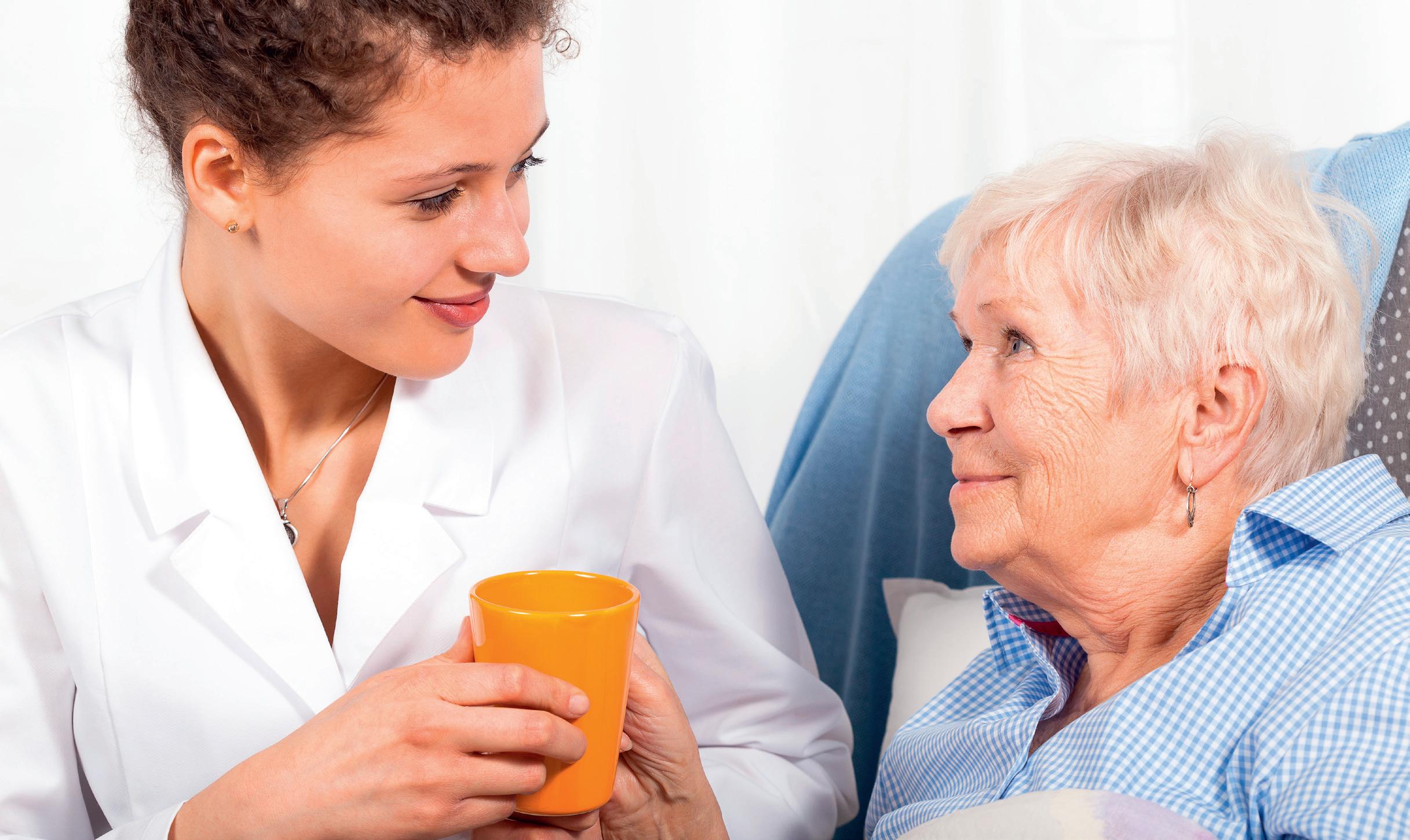
It’s often preferred for those in need of care to remain in their homes, but there are many ways to manage this
There’s no inexpensive way to get care, because it’s such a labourintensive sector. While residential care home fees can be from around £800 per week, typical costs for a live-in carer range from around £1,600 per week per carer. The hourly cost of private nursing care at home, provided by care agencies, usually falls between £15 and £30 per hour with the average rate being around £18-20 per hour. This means that if your hired home help costs are £18 p/h and you require 14 hours of support per week (2 hours per day) you can expect to pay around £1,100 per month or £13,200 per year. It’s more difficult to give costs for independent living, since this often involves buying or leasing a property.
Depending on the needs of the care receiver, the care giver may provide services including bathing, toileting, managing stomas and catheters, changing clothes and self-care; may shop, plan and prepare meals; may provide transport to appointments and social activities, and may perform household tasks such as cleaning and laundry.
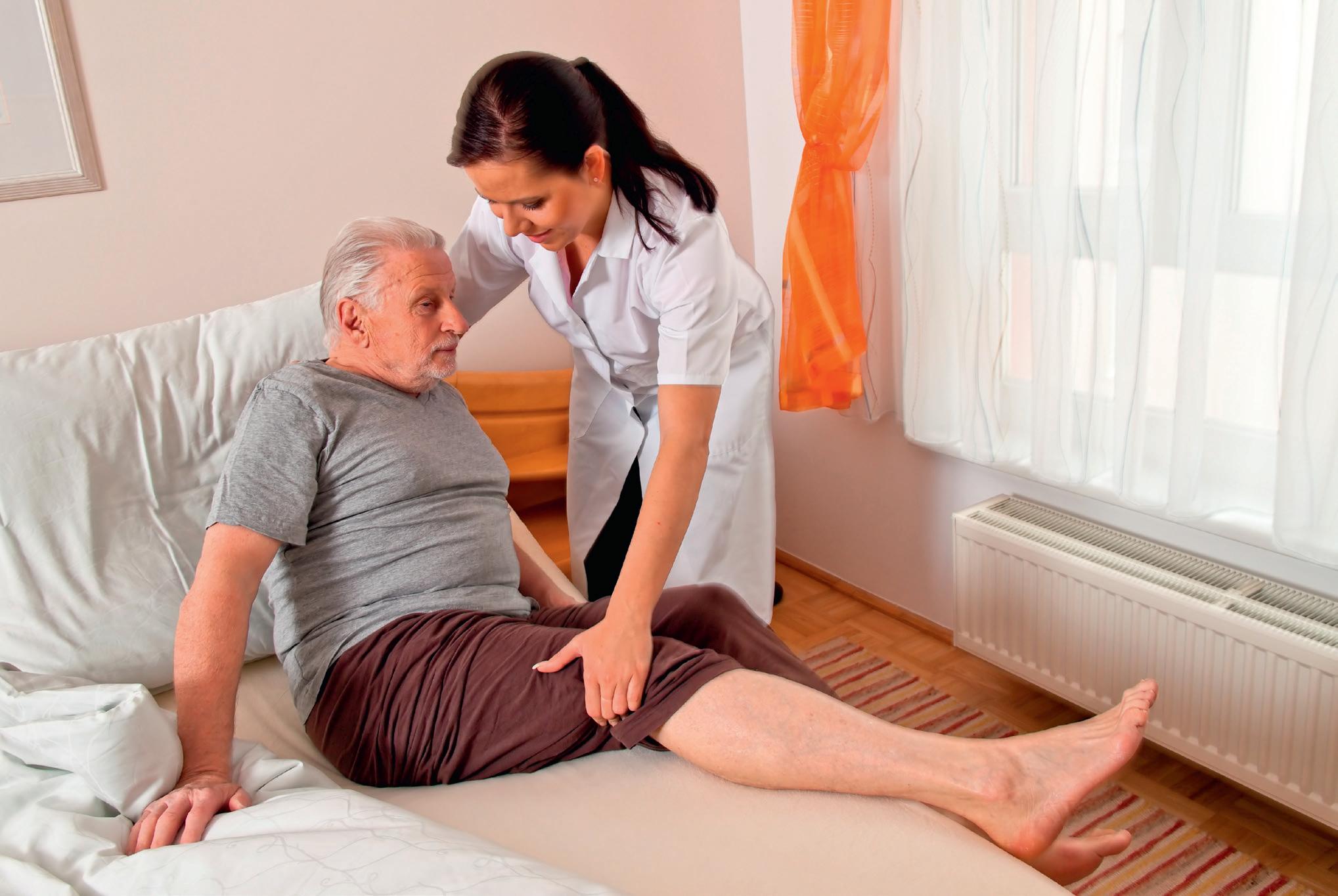
Another helpful function of the live-in carer is assistance with taking medication. They can collect prescriptions and organise medication for the right days and times, and will be trained to assist with administration. They will also have mobility assistance training, so they will be able to help care receivers to get in and out of bed and bath safely, adjust their position to avoid sores and generally help with moving confidently around the home.
Assistive technology can often help care receivers live independently in their own homes for longer, or can help an in-home
carer support a care receiver more easily. Stairlifts, mobility equipment and other assistive technology such as bathroom equipment, ceiling tracks, and small items such as adapted kitchenware and cutlery can all contribute to maintaining independence and comfort in the home. Many people worry about care of their pets when they become unable to provide it, and again a live-in carer can provide help with feeding, cleaning and vet appointments, meaning that the owner needn’t be separated from their animal companion.
Generally, in-home carers are selected for their kind and compassionate approach to their roles, and should be companions as well as carers, providing support, a listening ear and a shoulder to lean on. ■
Another approach to care is ‘independent living’, where care receivers live in their own self-contained apartments under a tenancy agreement, but have communal spaces where residents can remain active in the community, and have a thoroughly trained and experienced care team on-site 24 hours a day, seven days a week. Independent living apartment can have one or more bedrooms, allowing the possibility for guests to stay, and often have access to a range of private and public facilities, enabling them to socialise with like-minded neighbours, friends, family, and the wider community.
For too long, those in need of regular assistance at home have had to put up with a one-size-fitsall, inadequate level of care. But through a unique holistic approach to improving every aspect of a client’s wellbeing, meticulously crafted tailored care plans, and the embracing of technology, Blossom Home Care is on a mission to redefine what home care looks and feels like.

During her years in nursing, co-founder and cofranchisor Fiona Leggott witnessed inadequate, poor home care being delivered all too often, with clients’ needs coming last. This led to Blossom Home Care being born!
As a qualified registered nurse, Fiona still practises to keep her nursing PIN. Fiona is a positive thinking person who is passionate about good care, and brings a wealth of up-to-date knowledge, skills, training and guidance to Blossom Home Care offices across the country.
We offer premium care-in-the-home services that let you carry on being you, on your terms, where you most want to be: in your own home. Our wide range of care services for all ages include personalised plans for clients requiring specialist dementia, live-in, complex, and palliative care, as well as wraparound support for those with disabilities or rehabilitation requirements.








We are recognised as the leaders in quality home care. We are proud to have won dozens of awards in recent years at the Great British Care Awards and various business and leadership awards, including being named as one of the top 20 home care providers in the country.
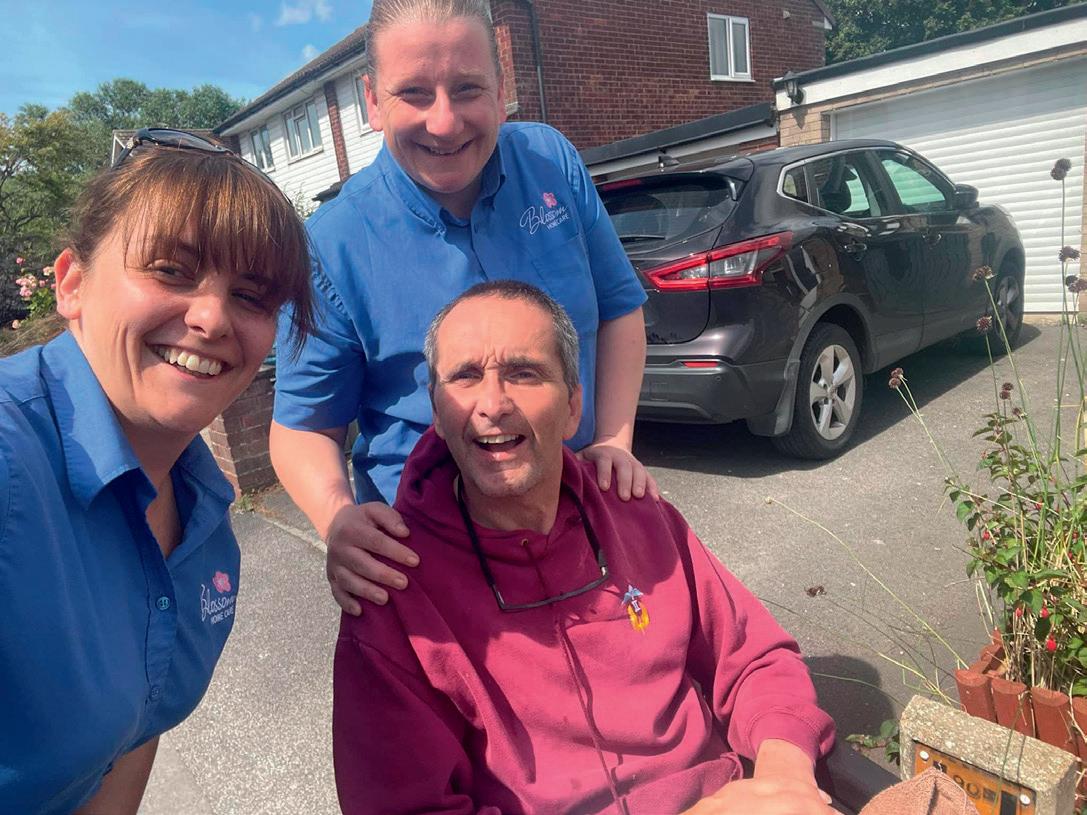
If you want to find out more about how we can help you or your loved ones, please visit our website: blossomhomecare.co.uk

 The Blossom Home Care difference
The Blossom Home Care difference


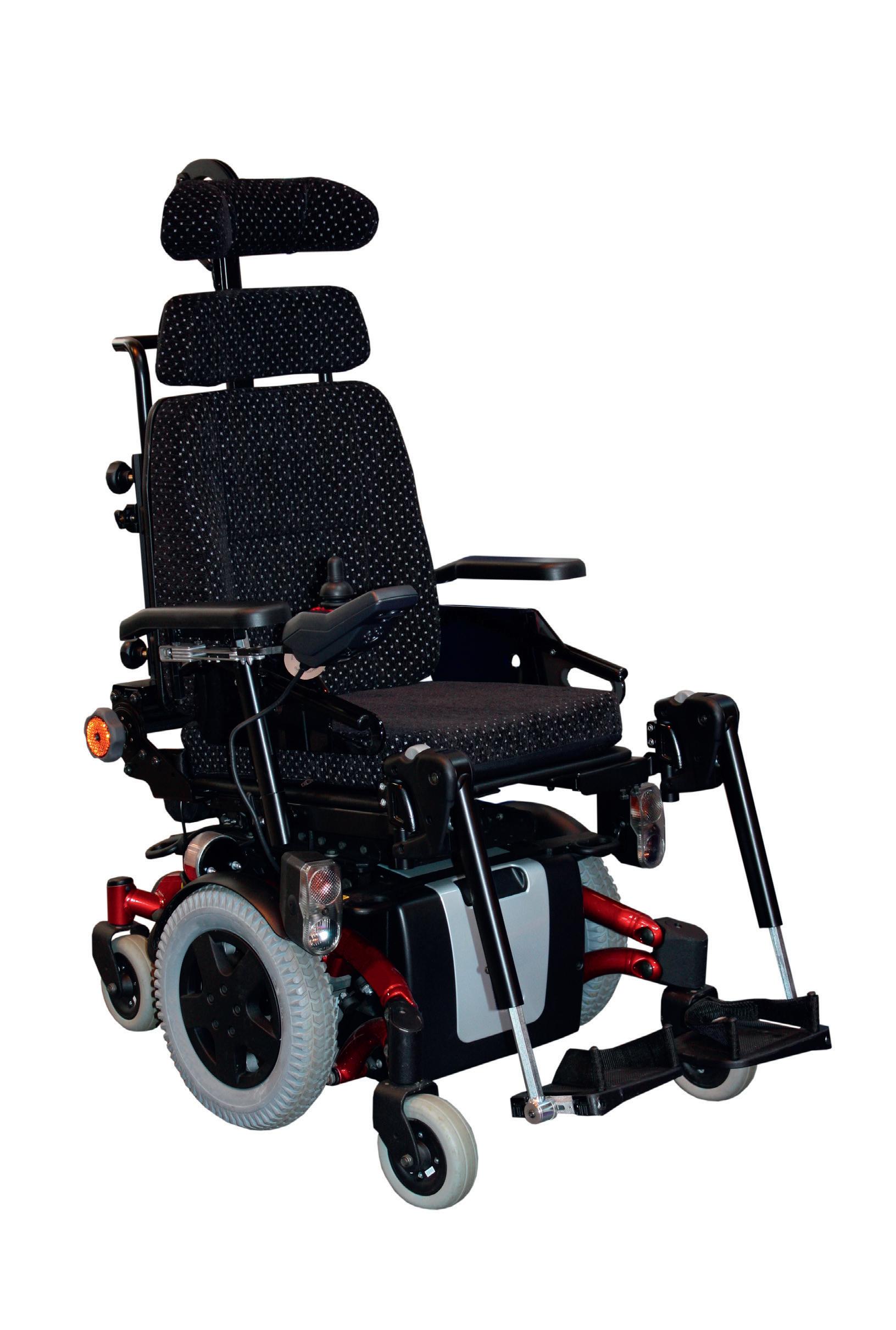
In 1933, Harry C. Jennings Sr. and his disabled friend Herbert Everest, both mechanical engineers, invented the first lightweight, steel, folding, portable wheelchair, using an “X-brace” design based on the camp stool, which is still in common use.
The wheelchair has been around since at least 1655, when paraplegic clock-maker Stephan Farfler of Nuremberg, Germany, built his own self-propelled mobility aid when he was only 22 after having broken his back as a child. But the modern design evolved from around 1760 and the development of the ‘invalid carriage’ or Bath chair.
But in the last few decades there seem to have been few major improvements in design, despite the fact that according to the World Economic Forum, there are 131 million wheelchair users worldwide.
While the wheelchair is extending inclusion to many, the urban landscape is such that challenges such as stairs and obstacles still present a problem for wheelchair users. But developments in materials, battery and digital technology are pointing the way towards improvements.
In South Korea, GuruIoT, an Internet of Things company, has created a selfdriving wheelchair using the concept of ‘digital twinning’. A detailed map stored on a cloud-computing platform can be accessed by the wheelchair, allowing it to navigate its way around its environment safely. This approach is less expensive than equipping the wheelchair itself with sensors connected to the internet, transmitting and receiving data in real-time, though the design is fitted with additional safety technology and proximity sensors. “Our self-driving
An electric-powered wheelchair, commonly called a “powerchair”, uses batteries and electric motors incorporated into the frame and controlled by either the user or an attendant, most commonly via a small joystick mounted on the armrest, sometimes by head switches, chin-operated joysticks, sip-and-puff controllers or other specialist controls, according to the needs of the user. Naidex, the flagship event for the disability community, showcases new products annually, this year at the NEC: www.naidex.co.uk
wheelchair is the prime example of showing that robots and humans can work together well from a human-robot interaction perspective,” said Song Su-han, president of GuruIoT.
Another approach comes from Luci, an accessory which can be fitted to existing powered wheelchairs to help users avoid obstacles. Designed and manufactured in the USA, Luci equips a wheelchair with a frame containing eight sensors to guide the chair and avoid obstacles. Described as “understated but functional” by Jered Dean, the co-founder of Luci, the sensors use ultrasonics, radar and cameras to perform tasks like slowing the chair down safely to prevent accidents.
Safety was one of the key concerns of the Luci development team, who ran a series of crash tests using wheelchairs to measure the harm different types of impact and accident can do to a chair user. They found that 87 percent of power wheelchair users reported at least one tip or fall in the past three years.
“The world is a beautiful, dangerous place,” a statement on the Luci website says. “We believe power wheelchairs should make it more beautiful and less dangerous for the people in them.”
Another approach to avoiding tip-
related accidents led to the invention of the Phoenix I chair by Scottish designer and entrepreneur Andrew Slorance. It won the Mobility Unlimited Challenge, a global competition run by Toyota.
Speaking to the BBC, Slorance described an accident in the early 1980s that left him needing to use a wheelchair. “Since then, nothing has really happened in wheelchairs,” he said. “They’ve made them smaller or more compact. But the technology hasn’t changed for nearly four decades.”
His creation is made from 3D-printed carbon fibre and is extremely lightweight. It can be switched into ‘intelligent mode’ so that the chassis and wheels move in sync with the rider. This gives the chair greater agility and stability.
There are also many designs of ‘upright‘ wheelchair which allow the user to raise themselves from a sitting to a standing position. Apart from making life easier for the user in many ways, the standing wheelchair can address many health problems, improving circulation and digestion, preventing bladder problems, and helping bone development and pressure management. For those who
can’t use the sit-and-stand chairs, there are advanced wheelchairs that elevate the user to the height they would be at if they were standing. Interest in electricpowered wheelchairs able to climb stairs has also increased over the last 20 years. Electric-powered wheelchairs with climbing ability need to be stronger and more stable, so it is more difficult to make them foldable and transportable.
Developments in battery and motor technology have made it possible to produce lightweight, portable wheelchairs offering features such as a choice of manual or powered operating modes, power steering, automatic braking, and electronic and mechanical antitip systems.

Other modern features include an occupant sensor so the chair can’t be activated accidentally, rapid-charge batteries, and puncture-proof tyres. Some even incorporate a USB charging port for charging handheld devices on the go.
As new materials and technologies emerge, who knows what will be the next breakthrough in wheelchair design? ■
If you have pushed a manual wheelchair, you will be familiar with the backbreaking effort involved. Meet the Ypush, an electric powered wheelchair that is transforming life for carers and wheelchair users.

It’s the brainchild of Brian Harrison, 54-year-old Guernsey mechanical engineer and inventor who was originally inspired by watching an elderly lady struggling along Poole Quay with a three-wheeled walker.
Back in Guernsey, he started researching mobility products, switching his attention from walkers to wheelchairs. Why, he began to wonder, despite the hundreds of thousands of people who use them, manual wheelchairs are rarely seen.
Further digging revealed the hidden toll of fatigue and injury suffered by carers. “In many cases, it is just too
physically demanding for carer or occupant to consider going out and about. Throw in a slope or a tricky surface and it’s almost impossible. Much easier – and more sensible – to stay at home,” says Brian.
His lightbulb moment came when he remembered his dad hauling their heavy manual lawnmower across the garden in the 1970s. “It was a hot sweaty job pulling and pushing through the long grass. Then self-drive mowers came along and started a revolution.”
Inspired by this, he began the lengthy process of designing the world’s only seamless push-or-power wheelchair, designed specifically for carers. “Carers can push it along manually with no resistance on the wheel motors, but can call on power-assistance at the push
of a button, something no other mobility product does. If the carer slips or trips, Ypush’s powerful purpose-built brakes come on to bring it to a safe stop.
The Ypush also has an electronic anti-tip system that cuts power to the motors if both front wheels leave the ground, a totally new feature of the design, which also incorporates a sensor so that the power won’t operate unless there is someone in the seat,” explains Brian.
After this came the costly and time consuming process of rigourously testing the Ypush in an accredited laboratory to meet the needs of potential users, such as the care home and the NHS. “I say to my children that development is a mixture of belief, faith and a touch of madness. It’s always three steps forward and two back,” says Brian.
But after six years of sleepless nights, seven day weeks and more than 50 prototypes, in 2019, Guernsey residents Sue Mollett, who has MS, and her husband, Tony, took away the first Ypush to test. “It was a pivotal moment. I was hoping it would provide a solution to some of their difficulties, but I was so nervous. It was like handing over your baby to a stranger and hoping they’ll look after it, but equally that the baby will behave,” recalls Brian.

He needn’t have worried. The couple loved it and say it has given them their life back. Tony says: “I never wanted to stop Sue going where she wanted, but I used to dread pushing her up and down hills. Now we can go anywhere. It’s as if the clock has been turned back. We’re doing things together we never thought we’d do again.”
Former vascular surgeon Roger Allsopp, OBE, medical adviser to Ypush, says: “Meeting Brian turned on a lightbulb for me. Here was a committed, totally dedicated genius of an inventor spending every moment of his life developing a unique wheelchair that had the potential to change the lives of millions, and those responsible for their care, for the better.

“It has been a joy to visit hospitals, care homes and disabled people and see the life-changing joy the Ypush can bring. The joy is to people who so often are vulnerable and invisible, as well as to the carers who share that invisibility and vulnerability.”
Brian says simply: “Carers are some of the most valuable, but undervalued people in the world. It’s brilliant to see the difference the Ypush makes.”
Free home demonstrations of the Ypush are available (UK only) and they are also shipped worldwide. For more information, to book a demonstration and to find your local dealer, visit www.ypush.com
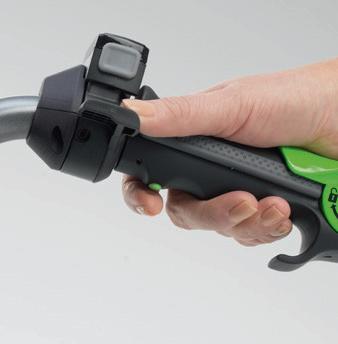

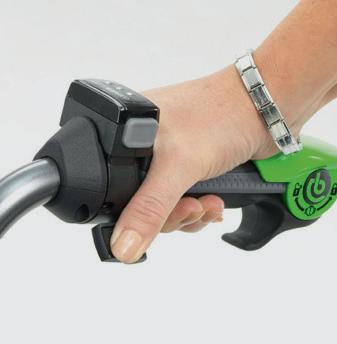



Folded size (L x W x H) 715 x 340 x 720mm


Assembled size (L x W x H) 1010 x 630 x 945mm
Weight of wheelchair 22.2kg
Max carrying capacity 100kg
Weight of battery 1.3kg
Battery charge time from empty 3hrs




Seat size 460mm(w) x 395mm(d)
Max. speed 4mph/6.4kmh
Range on full charge/flat ground 5 miles/8km + UK price £3383
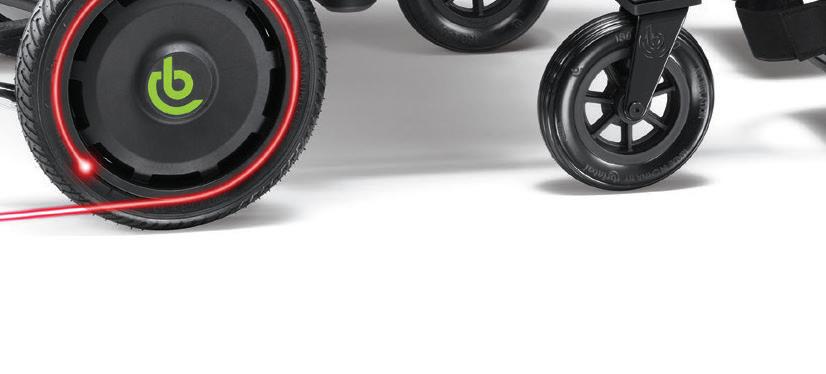

“
“
Carers are some of the most valuable, but undervalued people in the world. It’s brilliant to see the difference the Ypush makes.PRESS LEVER FOR POWER PRESS BUTTON TO TURN SAFETY BRAKES
According the research by charity Age UK, in January 2023 a massive 9.6 million over-60s (60 percent) were worried about being able to heat their homes when they wanted to, and 7.2 million (45 percent) were worried about affording other essentials such as food.
Now Age UK has launched a new campaign to highlight the huge challenges facing many older people, and to provide reassurance, and most importantly, solutions.

Amidst one of the most difficult winters many older people will have ever
experienced, as they try to make their fixed incomes stretch to cover the essentials at a time when prices are soaring, new research from the charity Age UK reveals just how big an impact the cost-of-living crisis is having on many older people’s mental health and wellbeing.
The research, which was carried out in January 2023, found that 9.6 million over 60s (60 percent) were worried about paying their energy bills, and 7.2 million (45 per cent) were worried about affording other essentials, such as food.
In addition, around half (49 percent) of those over-60s who took part in the
research, equivalent to almost 8 million people in all, were worried about the impact of energy bills on their health. This figure rose to three-fifths (62 percent) of those whose income is £20,000 per annum or less (equivalent to 3.3 million over 60s); and to nearly two-thirds (65 percent) of those on a very low income and in receipt of benefits (equivalent to 1.6 million over 60s).
The Age UK study also revealed that 10 percent of the sample, equivalent to 1.6 million older people in total, had recently carried out a benefits check to see if
Age UK’s national services are a lifeline, especially for older people who have no one else to turn to.
The Charity’s free and confidential Advice Line is open every day of the year and has access to experts on a huge range of issues an older person may encounter as they age, empowering them so that they know what to do in their own situation, and helping them to do it. The specialist team of advisors are on hand to give expert advice, including finding out if older people are entitled to extra financial support. The Charity also offers The Silver Line Helpline, a 24-hour service for older people who need someone to talk to, and a Telephone Friendship Service that gives older people the chance to enjoy weekly chats with a new friend.
they were eligible for any more money, demonstrating how concerned they were about making ends meet. Six percent of the research sample, equivalent to about a million over 60s overall, reported having sleepless nights because of high energy prices.
The Charity has launched a campaign to raise awareness of the huge challenges facing many older people, and how Age UK draws on its expertise to offer practical solutions.
As well as being frightened about making ends meet, Age UK recognises that significant numbers of older people will also be struggling with these worries alone, with no one to turn to for advice or support. Nearly a million older people across the UK often feel lonely and the current cost of living crisis is likely to be increasing these numbers, as engagement in social and leisure activities is one of few economies you can make if you are living on a low fixed income.
The charity’s campaign cites problems such as struggling to afford heating, or

During the past seven months, Age UK’s Advice Line has identified over £2 million worth of unclaimed benefits, averaging an additional £4,468 per person. Of these older people, four in five (84%) were found to be at risk of fuel poverty.
electricity, and being socially isolated, pointing out that no one needs to cope with these issues alone and that Age UK is there to help. The campaign, entitled ‘Age UK. Know what to do’ showcases how services like the Age UK Advice Line stand with older people in difficulty, providing expert advice with kindness and sensitivity, to help an older person and sometimes their family and friends, to overcome the particular problems they face. »
Dame Judi Dench, Age UK supporter, said: “With the cost of everyday items rising so rapidly, it’s no wonder so many older people are anxious about their future and how they will be able to manage.

“That’s why I am supporting Age UK as it launches this new campaign to raise awareness of the difficulties older people are facing. Age UK offers a range of support for older people, including information and advice, and friendship services for those struggling alone. It’s important to not only shine a light on the issues worrying many of those who are older, but also on the vital support the Charity offers and the fact that there is help available.”
Caroline Abrahams, Charity Director at Age UK, said; “Our new research tells us there are a lot of older people who are worried sick at the moment, particularly about how they can keep their heads above water when every time they go to the supermarket they see that prices have risen again.
“We want older people and their families and friends to know that at Age UK we are here for them, we stand with them, and we will help them find the best solution for whatever is troubling them, and support them with the next steps. We totally understand why so many are so worried, but we want them to know that whatever they are facing there is reason for hope, we are here to help, and they are not alone.” ■
Jeanette, who is in her 70s, has several health issues after suffering a stroke a couple of years ago.
She has been struggling with the rising living and energy costs which are a constant source of worry to her, especially as the cold weather can worsen her health.
“In the winter I’m not so mobile and I get lots more aches and pains because of the cold weather. I don’t really want to go out in the winter so then I sit here and I worry about the electric, how much it’s going to cost to survive.”
Jeanette called the Age UK Advice Line to find out if she would be eligible to claim benefits, and thanks to help from an Age UK advisor Jeanette was awarded the higher rate of Attendance Allowance, which she says has been life-changing. She said: “Age UK filled all the forms in for us, sent them to us, and we just had to sign them and send them off. Without them I wouldn’t have had a chance of getting Attendance Allowance. I never thought in a million years I’d get it. I’ve bought myself a mobility scooter which has changed everything.”
Find out more by visiting www.ageuk.org.uk/know. Older people, their families and friends looking for support should visit www.ageuk.org.uk/support or call the Age UK Advice Line on 0800 169 65 65. The Age UK Advice Line is open 365 days a year (8am – 7pm) offering advice on a range of issues, including benefits checks and obtaining additional support for anyone who is worried or struggling to pay their bills.
























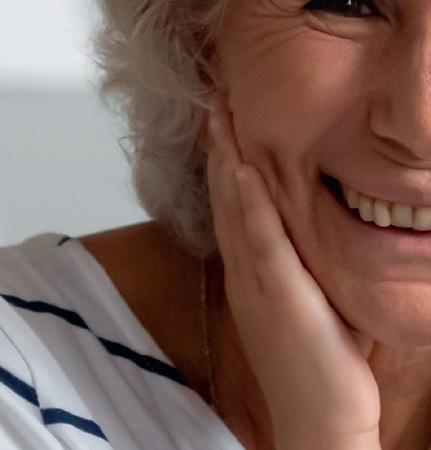
















Summerisanine-year-oldgirlliving withSpinaBifida.“Thisbedhasbeen absolutelyamazingforourdaughter. Itgiveshertheindependencetobe abletotransferintoandoutofbed andtositherselfupwithoutrelying onus.Ithasalsogivenustheability totendtoheratacomfortableheightwithouthurtingourbacks.”

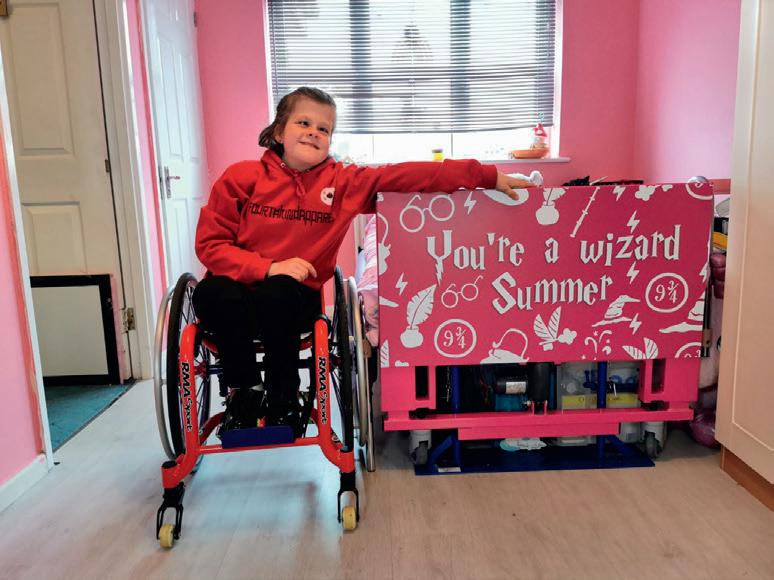

SummerhashadherCentrobedQuoddyBedfor3years.Aswithany littlegirlherage,Summer’sinterestsandtasteshavechangedasshe has grown.CentrobedcreatednewpanelsforSummer’sbedtotransformit fromaDisneyPrincessbedtoaHarryPottertheme!!BothSummerand herparentsweredelightedwithhernewbedpanelsandthe transformationachieved.

“I’dalsoliketosaythat,from dayoneofviewingthebeds, theteamatCentrobedhave beenamazing.Fromsalesto fittersandtheaftercareteam haveallbeenamazingand wearehappytobepartof thewonderfulCentrobed family.”
IntroducingtheScotiaCot,aversatileandattractiveoptionfortraditional nurseries.Perfectforcommunityuseandparentsrecoveringfrom C-sectionsorwithmobilityissues.Itsadjustableheightandhigh/low functionsmakeiteasytocareforyourbabywhilstavoidinginjury.
“Thebedhasmade iteasierformeto liveindependently”
-
“Itwasgettingtothe pointwhereMum washavingtorollme inthenight,butnow Ihaven’tneededitin years”
-
LifeChanging “Ididn’trealisethere wasacotinthe marketthatwould allowmetonurse ababy.Thismeans Icanhaveachild.”
-
“Thebedisfantastic. I’minalotlesspain. Youshouldbevery proudofyourproduct”
www.centrobed.com
t:01233635353
e:sales@centrobed.com
ScotiaCot QuoddyBed ScotiaCotTimorChairBed
TheTimorBed/Chairallows easyaccessinandoutof bed.TheTimorisan alternativetohoistingor sleepinginachairthus assistingindependenceand encouragingmobility.


Theuniqueseatactiontakes youfromlayingtosittingwith littleornoeffort.Thesliding seatenablesthelegstogo downeasilywhilstsupporting thebackofthelegsandalso thespine.


Anelderlyladyinher80’s wasvulnerabletolivewithout carers.OncetheTimorwas installedsheregainedtotal independenceasshewas abletogetinandoutofbed onherown.

CurtissuffersfromaseverecaseofCerebralPalsy,Curtis’sconditionmeanshealso suffersfromscoliosis,chestinfections,breathingproblems,hipdysplasia,epilepsy, sleepapneaandblindness.TheseverityofCurtis’sconditionmeansthatheneeds constantcare.ThroughDIYSOS,CentrobeddonatedanArcticbedforCurtis.The Arctichasasignificantrangeofre-positioningmovementswhichenablesitto accommodateeventhemostcomplexcases.



TheArcticenablesincreasedmobilityandcomfortforCurtiswithitsnighttime automaticprogrammableprofilingandmovementoptions.Theautoboxallowsthe parentstoprogrammetimesduringthedayandnighttore-positionCurtis.Priorto havingtheArcticbed,Curtisneededtobephysicallyrolledoverinbed,dayand nighttohelpclearhischestandairways,thiscausedissuesnotonlywithCurtis’s qualityofsleepbuthisparentsaswell,needingoneofthemtobeawakeatnightto careforCurtis.TheArcticnowautomaticallyturnsCurtisgentlyinbed,givinghands freephysioandassistsinkeepshischestclearerandreducingchestinfections.The ArcticbedalsoleadstoasignificantdecreaseincarecostsCurtishasnotbeen hospitalisedinthelast16months.


GarryandKylecanclearlyseethepositiveimpacttheArctichashadwithCurtis: “WetrulybelievethatyourbedandturnerhashelpedinkeepingCurtisherewithus. Nopneumoniaoverwinterisafirst.”
Amotherwhosechildhasmusculardystrophywas havingtoturnhimatregularintervalsthroughoutthe nightdisturbingthechildandalsothemother.Hewas issuedanautomaticturningbedthatdidnotdisturb hissleeporthatofhismother.Hisbehaviournoticeably improvedathomeandatschoolbecauseofhis improvedsleepingpattern.

Hire
NileLegLifter
DifficultygettinglegsinandoutofbedTheNileLegLiftercouldbetheanswer. Electricallypoweredwithavinylpadtoliftandsupporttransferoflegsintobedsafely. Heightadjustableandvirtuallysilent,theNileLegLifterwillfitontomoststandarddivan beds,domesticelectricdivans,orcommunityhospitalstylebeds.Promotesand independenceandimprovesmobility.
DifficultygettinglegsinandoutofbedTheNileLegLiftercouldbetheanswer. Electricallypoweredwithavinylpadtoliftandsupporttransferoflegsintobedsafely. Heightadjustableandvirtuallysilent,theNileLegLifterwillfitontomoststandarddivan beds,domesticelectricdivans,orcommunityhospitalstylebeds.Promotesand independenceandimprovesmobility.
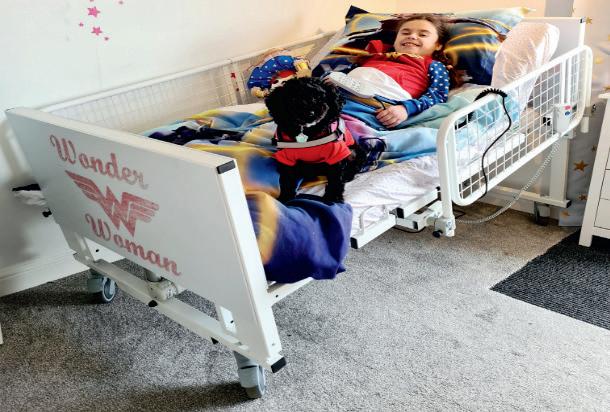



*PictureshowstheNilewiththeMawsonMobileFrame
*PictureshowstheNilewiththeMawsonMobileFrame
Helpingpreventpressuresores
TheArcticturningbedisamulti-positionalandmulti-functionalversatilebedsystemthat canaccommodateeventhemostcomplexneeds.Theautomaticturningfunctioncan befittedandtailoredforeachindividual’sneeds.Handsfreeturningdayandnight.
TheArcticturningbedisamulti-positionalandmulti-functionalversatilebedsystemthat canaccommodateeventhemostcomplexneeds.Theautomaticturningfunctioncan befittedandtailoredforeachindividual’sneeds.Handsfreeturningdayandnight.
CaseStudyC:Adementiapatientwhoneededregularturningtopreventpressuresores. Thiswascosting£60kannually.ByprovidinganArcticturningbedthesecostswouldbe reducedto£10kanincredible£50ksavingayear.
CaseStudyC:Adementiapatientwhoneededregularturningtopreventpressuresores. Thiswascosting£60kannually.ByprovidinganArcticturningbedthesecostswouldbe reducedto£10kanincredible£50ksavingayear.
People’shomesnowdominatethelandscapeforlongandshorttermcareinthe communityandthecostofprovidingthisisrisingwiththecomplexityofpatients conditionsandtherisinglevelsoftheelderlyandbariatricpopulation.Patientsbeing caredforinthecommunityarevulnerableandneedaregimethatiscomfortable,easyto complywithandsafewithanawarenessofthebenefitstothefamilyandcarers.Bed blockingisaresultofdelayeddischargefromhospital,somethingthatatsomepointin ourlivesaffectsusallwhetherprofessionally,orthroughafriendorrelative.Notonlyare therefinancialcostsbutitistheunseencosts,emotionalandphysical,affectingthe patientthemost.
People’shomesnowdominatethelandscapeforlongandshorttermcareinthe communityandthecostofprovidingthisisrisingwiththecomplexityofpatients conditionsandtherisinglevelsoftheelderlyandbariatricpopulation.Patientsbeing caredforinthecommunityarevulnerableandneedaregimethatiscomfortable,easyto complywithandsafewithanawarenessofthebenefitstothefamilyandcarers.Bed blockingisaresultofdelayeddischargefromhospital,somethingthatatsomepointin ourlivesaffectsusallwhetherprofessionally,orthroughafriendorrelative.Notonlyare therefinancialcostsbutitistheunseencosts,emotionalandphysical,affectingthe patientthemost.

Costsavingisalwaysattheforefrontofeveryone'smindandhiringequipmentcanbea goodshort-termalternativetopurchasing.Whilstpurchasinghassignificantmeasurable short-termrecoverytooutlay,hiringdoeshaveitsplace.Forshortterm,endoflifeand manyothercaringsituations.Expensivepurchasesthatcanultimatelyimprove complexcareandimprovedqualityoflife.
Costsavingisalwaysattheforefrontofeveryone'smindandhiringequipmentcanbea goodshort-termalternativetopurchasing.Whilstpurchasinghassignificantmeasurable short-termrecoverytooutlay,hiringdoeshaveitsplace.Forshortterm,endoflifeand manyothercaringsituations.Expensivepurchasesthatcanultimatelyimprove complexcareandimprovedqualityoflife.

Assessmentbeforepurchase-Interimcare-Endoflifecare-HolidayHire
Assessmentbeforepurchase-Interimcare-Endoflifecare-HolidayHire




Bedthatcanaccommodateupto80stoneclientcomfortassistingindependence.The Tungstenbedwithprogrammableturning,comeswithachoiceofwidthsandfunctions. Stability-Accommodatesexcessfleshmovements.-Empowerspatients.
Bedthatcanaccommodateupto80stoneclientcomfortassistingindependence.The Tungstenbedwithprogrammableturning,comeswithachoiceofwidthsandfunctions. Stability-Accommodatesexcessfleshmovements.-Empowerspatients.
Paediatric
CentrobedPaediatricbedsaremadetofittheindividual’schildtakingintoconsideration theirownspecificneeds.APaediatricbedneedstothefitthechildandourscertainlydo. Arangetheaccommodatesvariousneeds.Profilesinthecorrect places.Efforttransfers,improvesmobilityandindependence.
CentrobedPaediatricbedsaremadetofittheindividual’schildtakingintoconsideration theirownspecificneeds.APaediatricbedneedstothefitthechildandourscertainlydo. Arangetheaccommodatesvariousneeds.Profilesinthecorrect places.Efforttransfers,improvesmobilityandindependence.
Many health conditions, some associated with later life, can cause problems with lying down and sleeping comfortably. In many cases a specially designed bed can alleviate discomfort or aid mobility. Specialist and adjustable beds can be helpful in cases such as multiple sclerosis, muscular dystrophy, cerebral palsy, motor neurone disease and stroke recovery, with the benefits in posture and sleeping position helping with stiff joints, breathing difficulties and insomnia.
Specialist beds can make it easier to transfer from a sitting to a standing position and getting in and out of bed, reducing the requirement to have help. In some cases products such as leg lifters and bed rails can be fitted to a conventional bed, aiding stability and helping with problems such as numbness in the legs.

A basic ‘profiling’ bed is designed to be adjustable in height, enabling nurses and carers to provide personal care to patients safely and successfully without bending and causing unnecessary back strain, while ‘low-start’ beds can be height adjusted right down to floor level if required. Platform beds enable co-sleeping for couples that still wish to share a bed together but have separate mobility needs.
A chair bed takes the user from a lying to a sitting position, promoting independence and encouraging mobility, while a’stand-up’ bed can help Individuals who are unable to sit or stand up, improving mobility with an easy-to-use control for changes of posture all the way from horizontal to vertical.
Leg positioning beds (such as Centrobed’s Delaware, below) have multiple
adjustable sections with adjustable kneebreaks, all adjustable at the touch of a button, promoting independence. This sort of bed often allows the legs to be moved below the horizontal, giving a chair-like position yet still benefiting from being a full sized, comfortable bed.
Specially designed turning beds can help when a patient needs to be turned regularly - they can be programmed to turn the patient automatically from side to side during the night.
Beds can be designed to alleviate issues with amputee users, manufactured in bespoke sizes to manage any particular individual’s needs, and bariatric beds specially designed for support and stability are available for patients with weight issues. With the right specialist bed, whatever their health issues, everyone should be able to get a good night’s sleep. ■
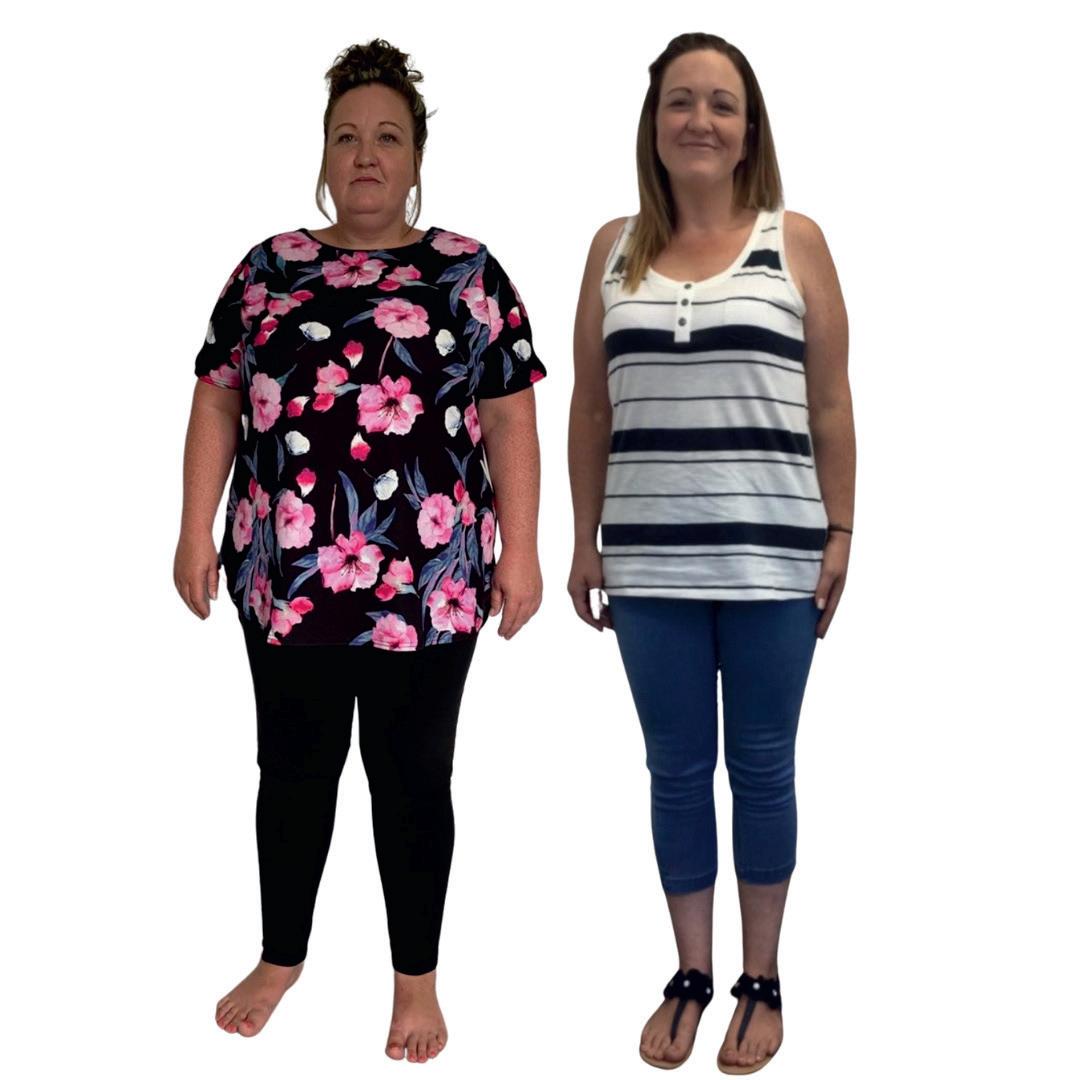
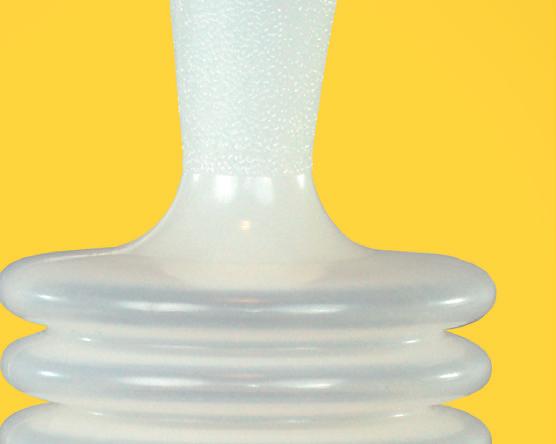
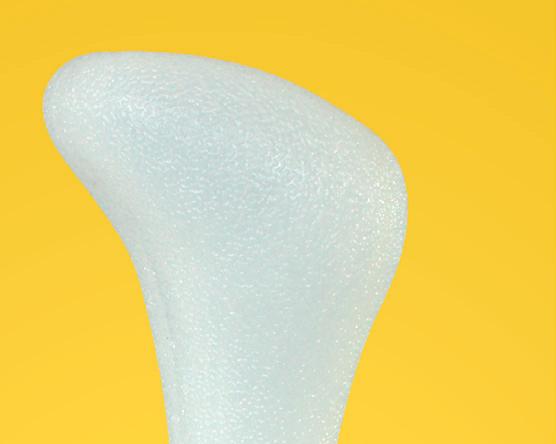
Regulated medical device that can be used by anyone
Patented oneway safety valve
Replaced free of charge if ever used
Comes with sized masks to fit entire family
Over 775 Lives Saved in a Choking Emergency
www.lifevac.uk


















